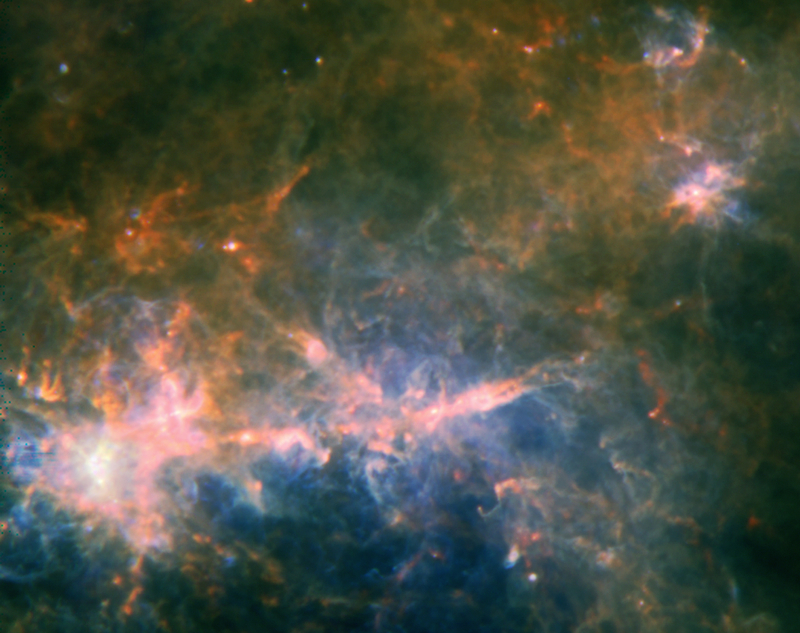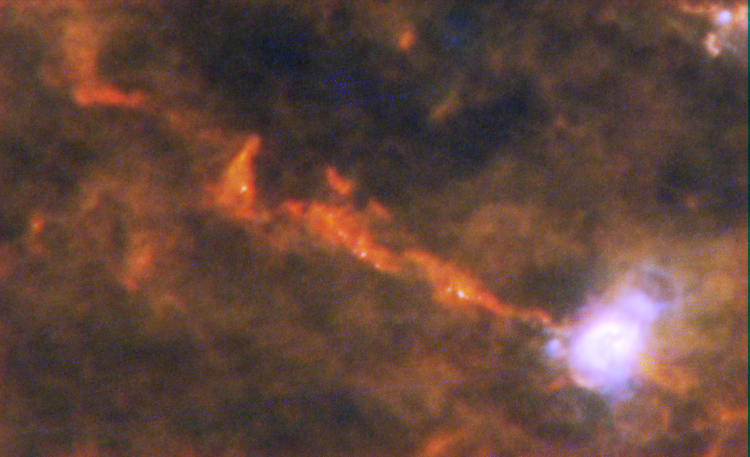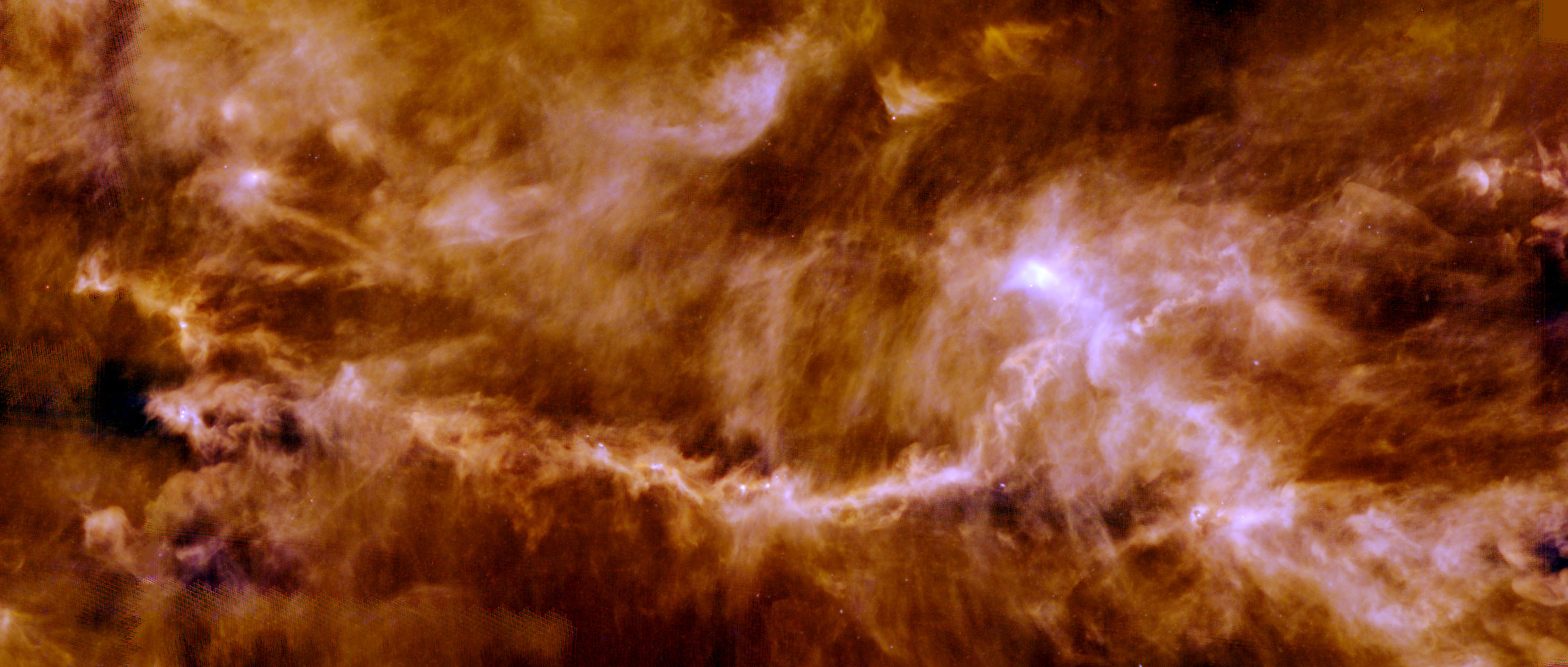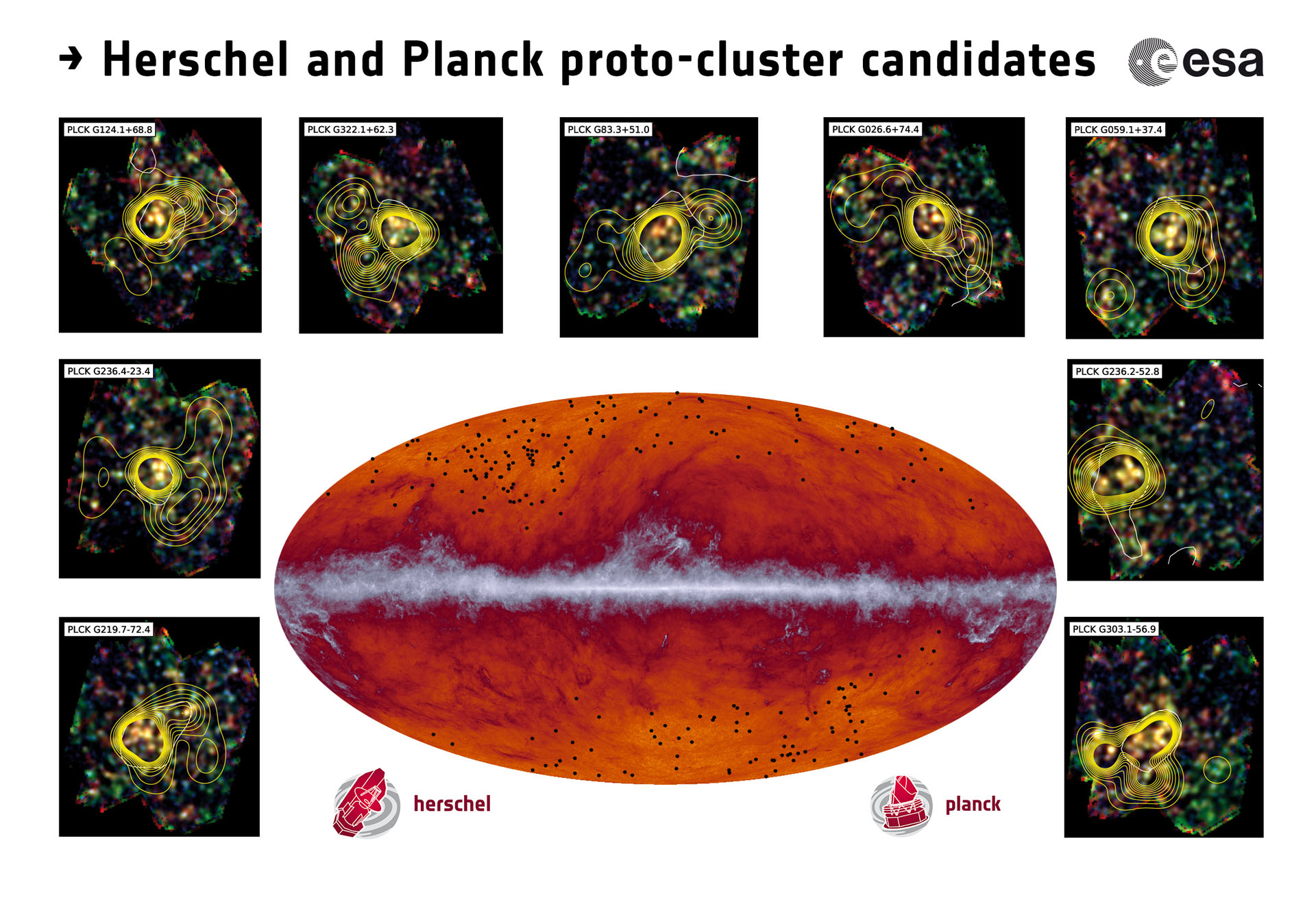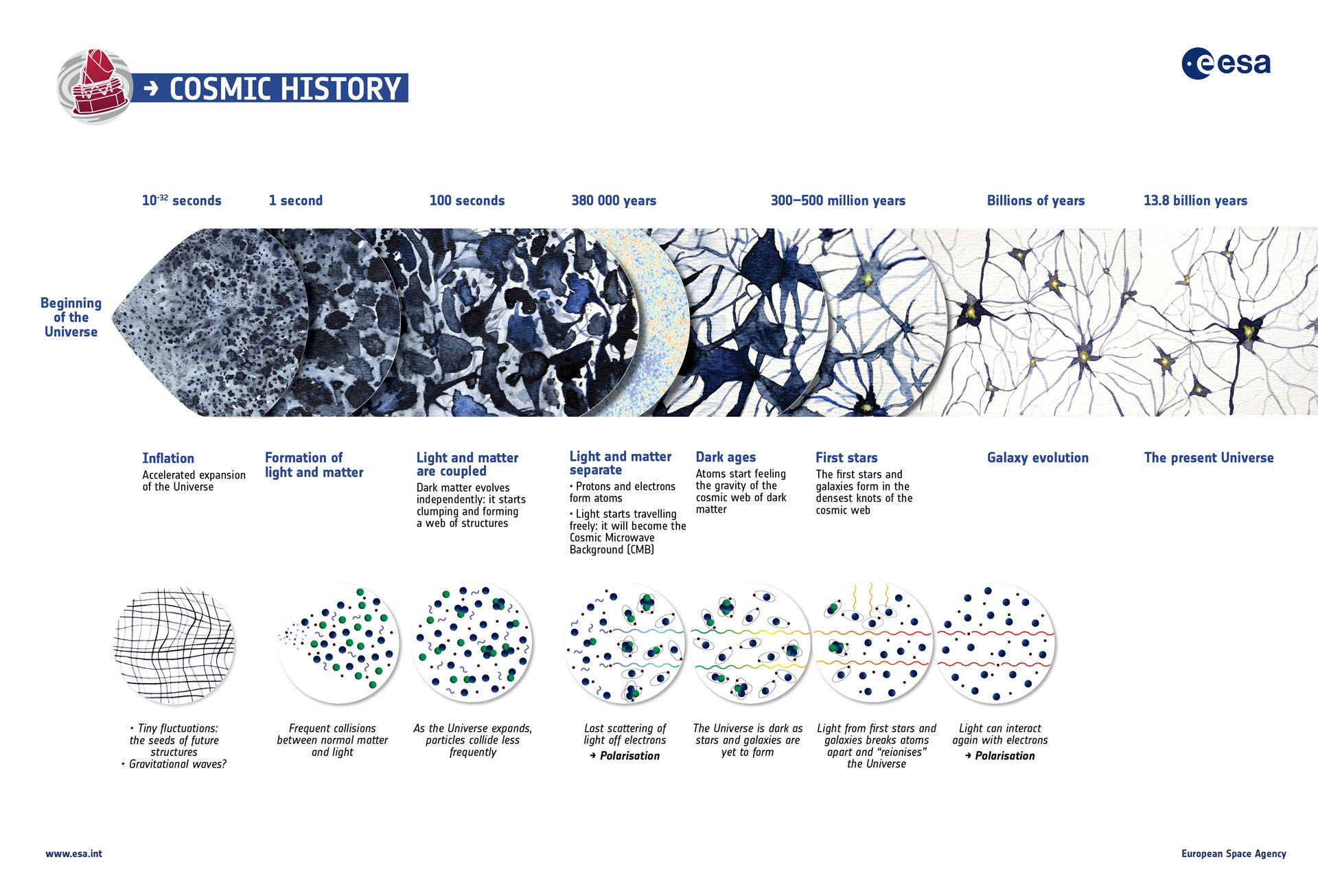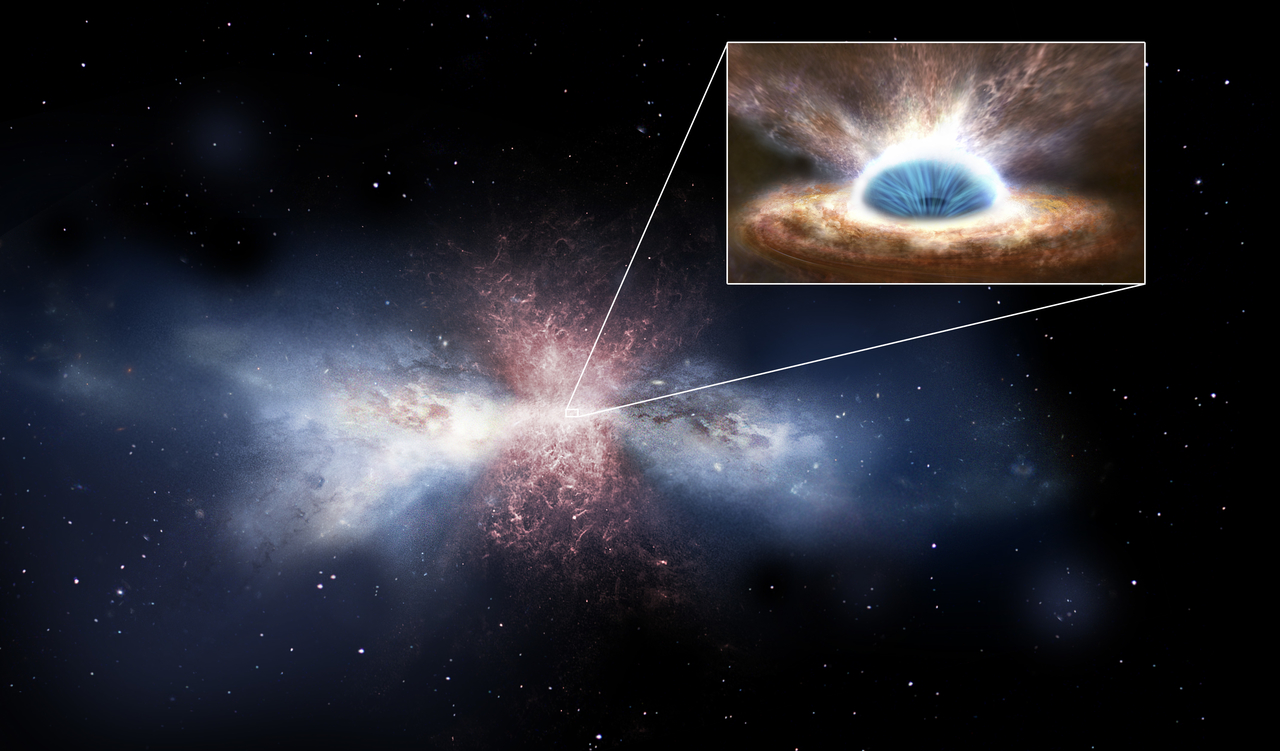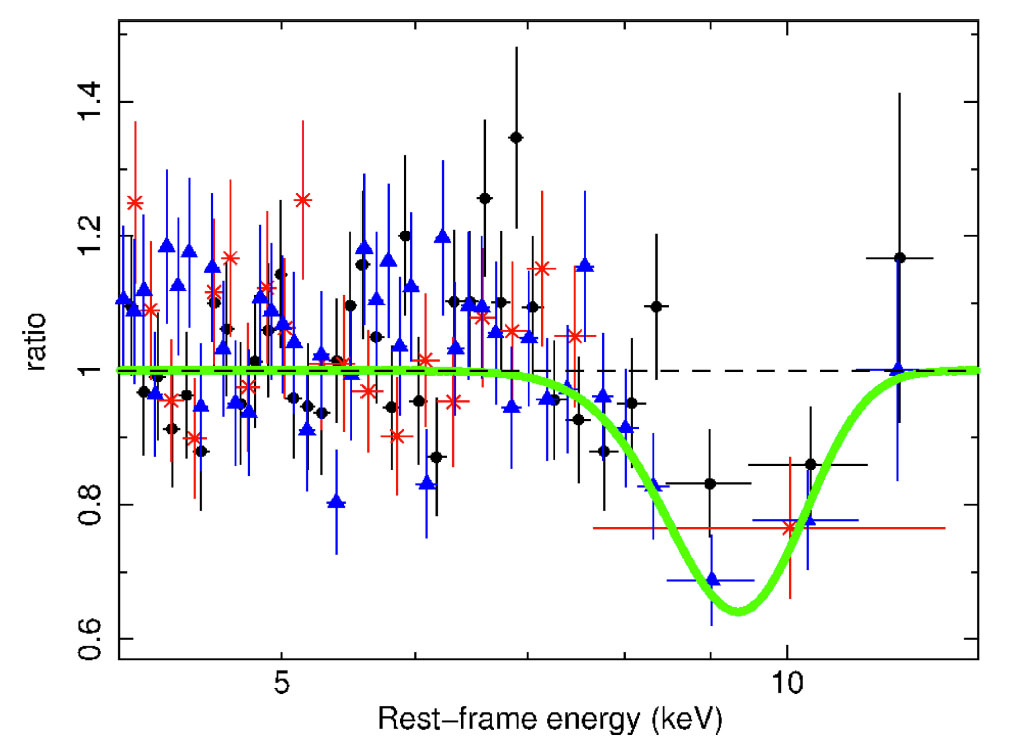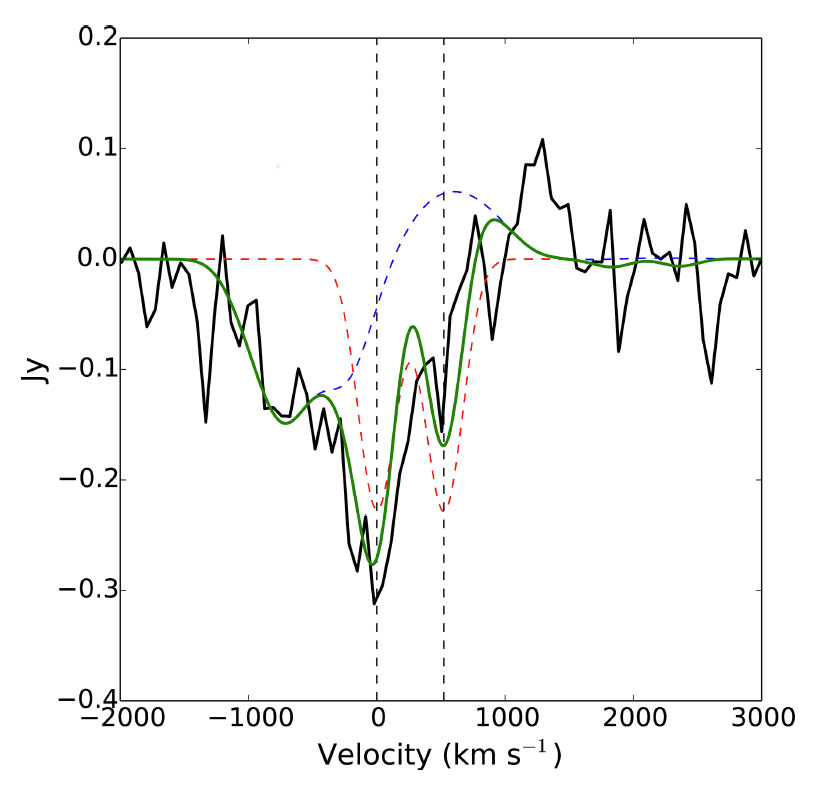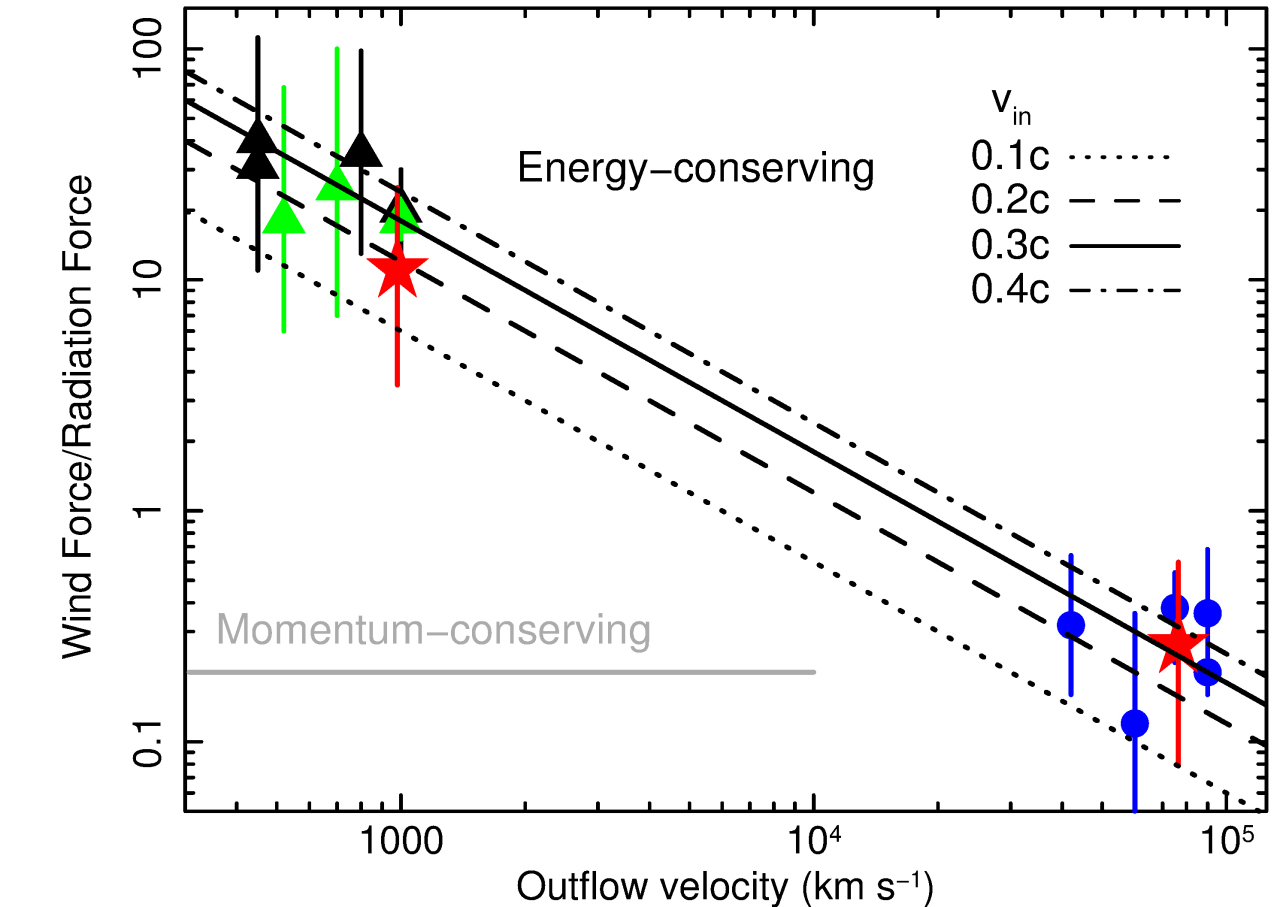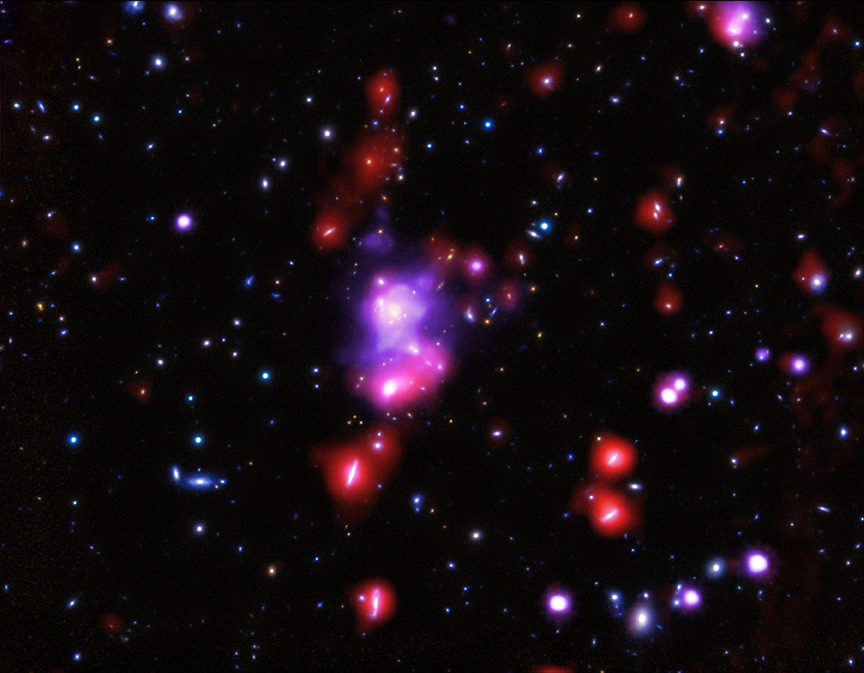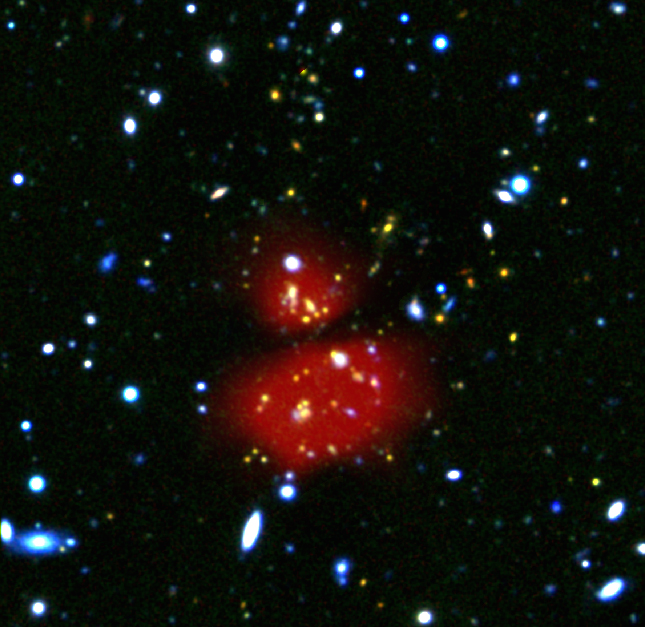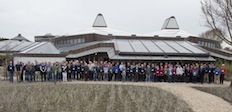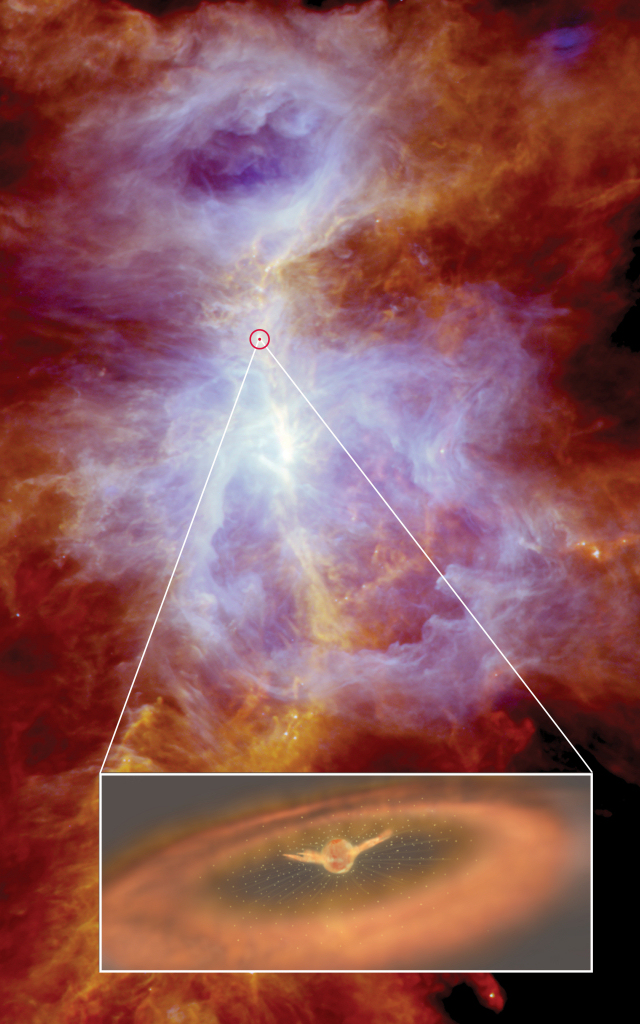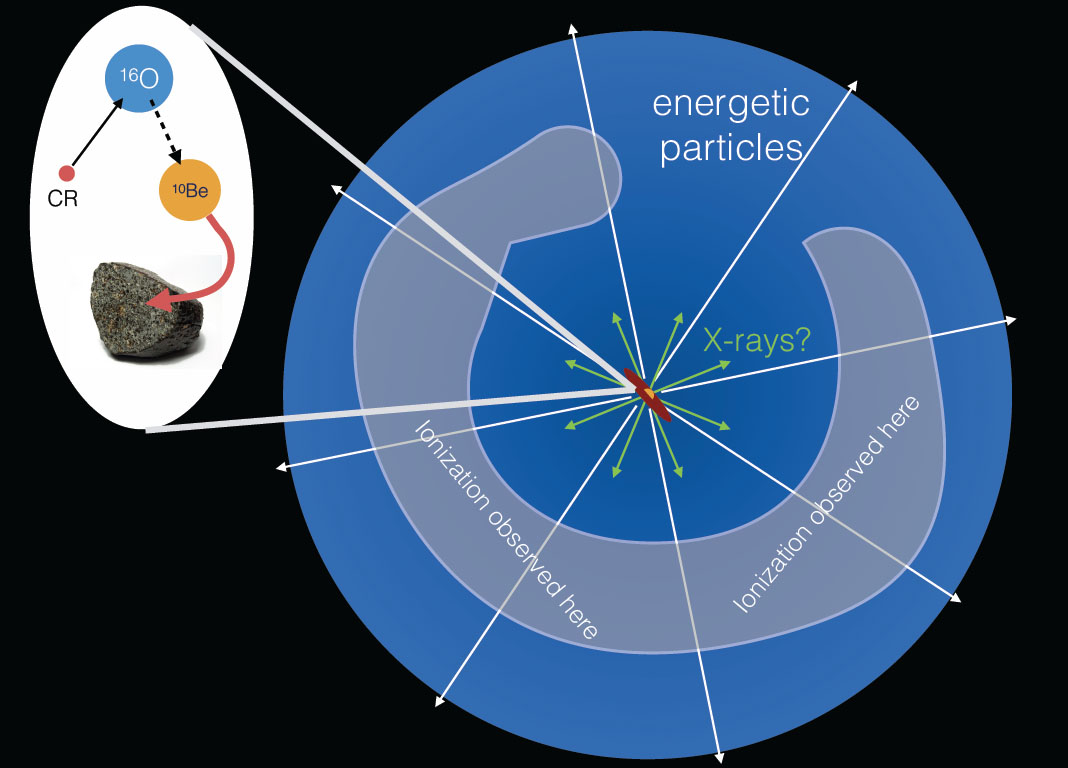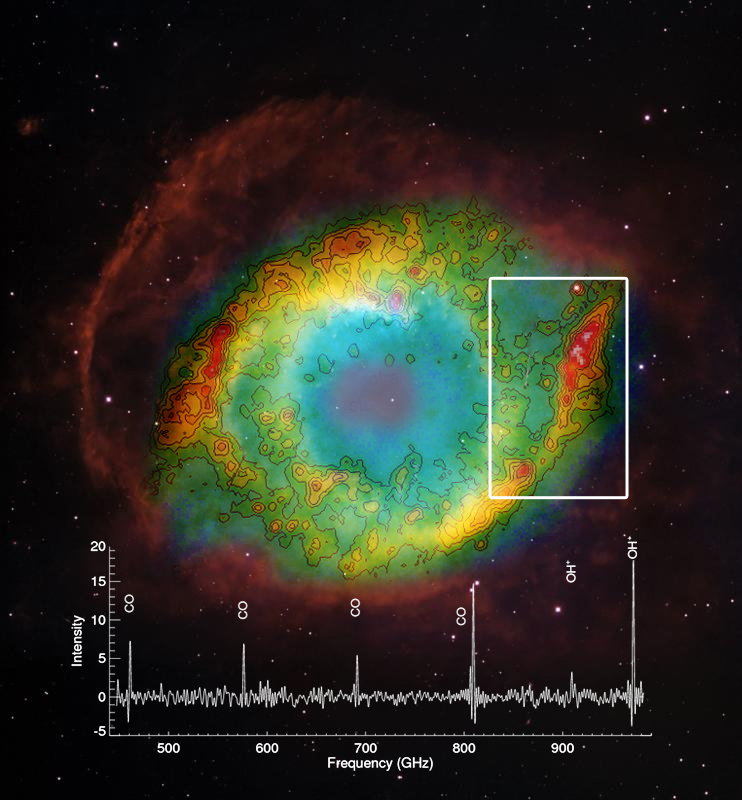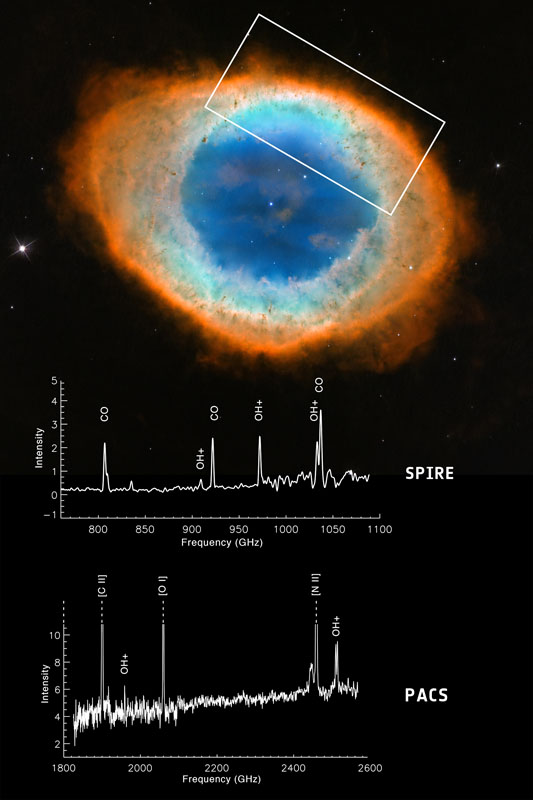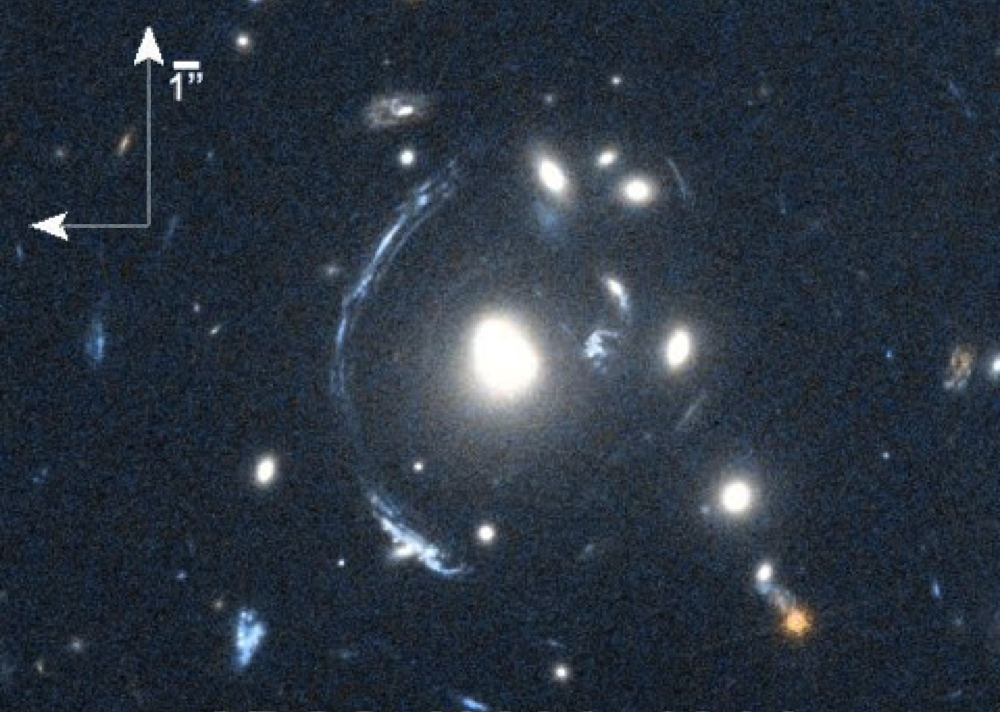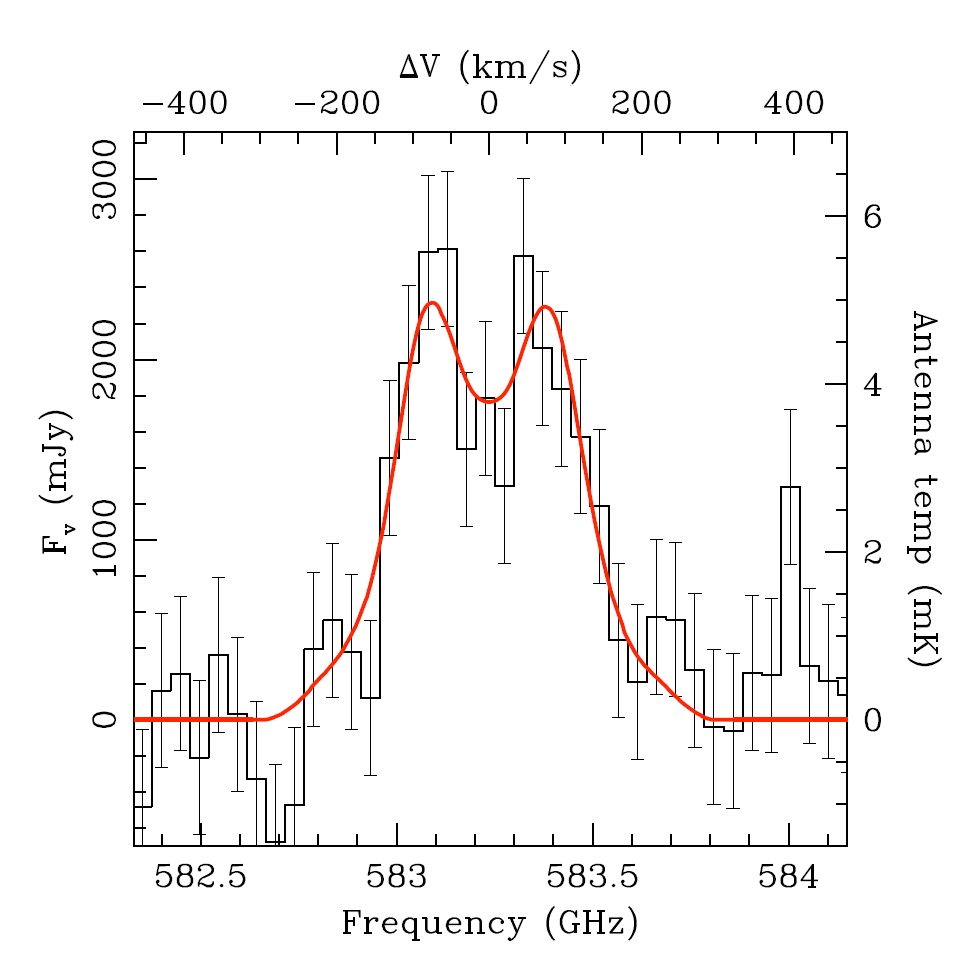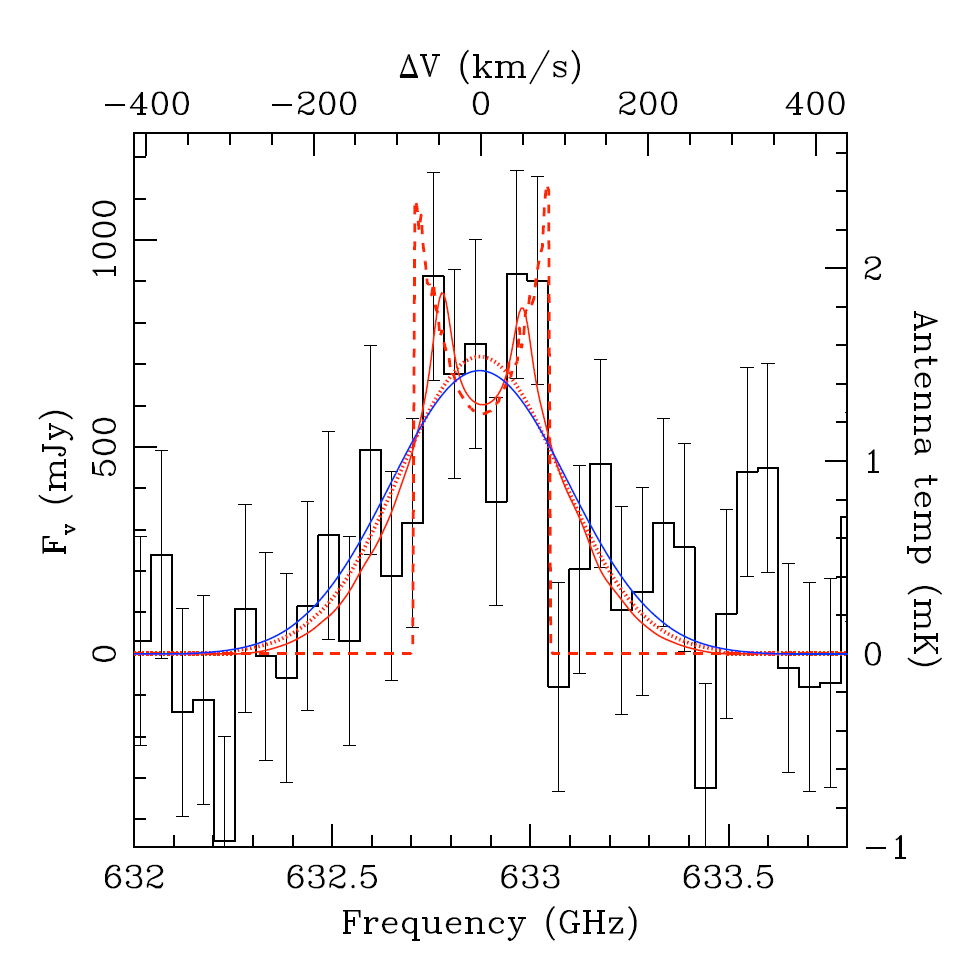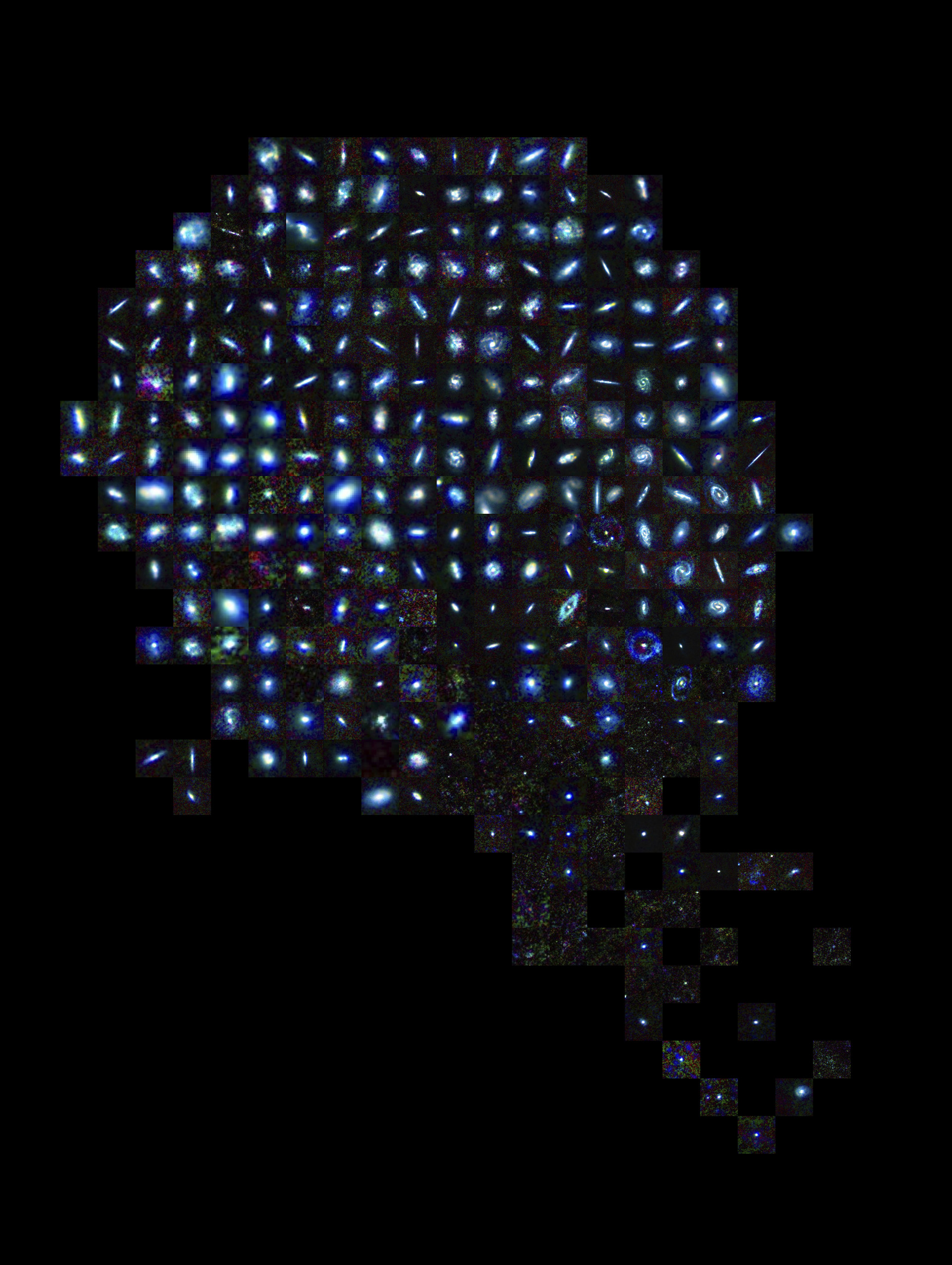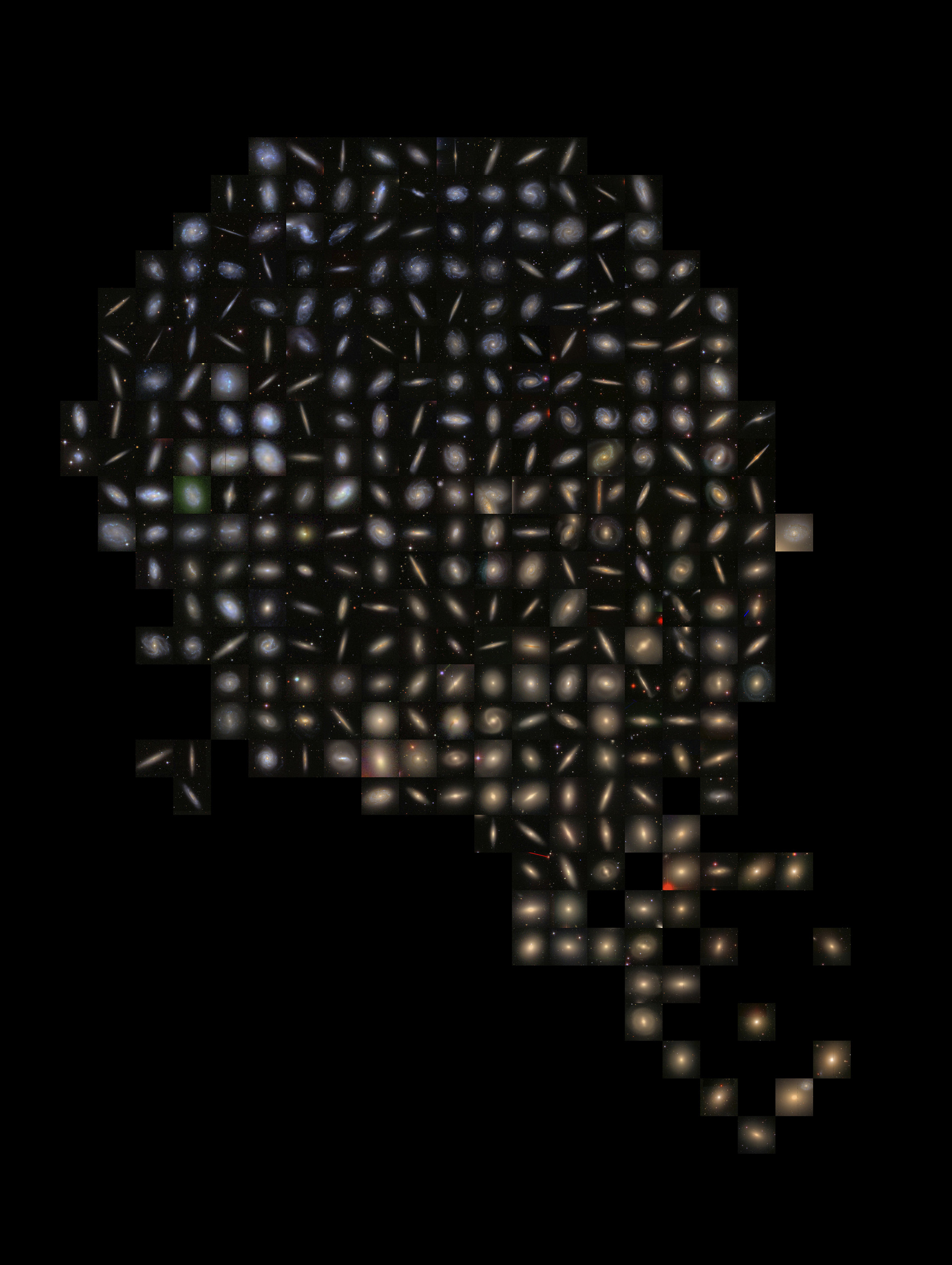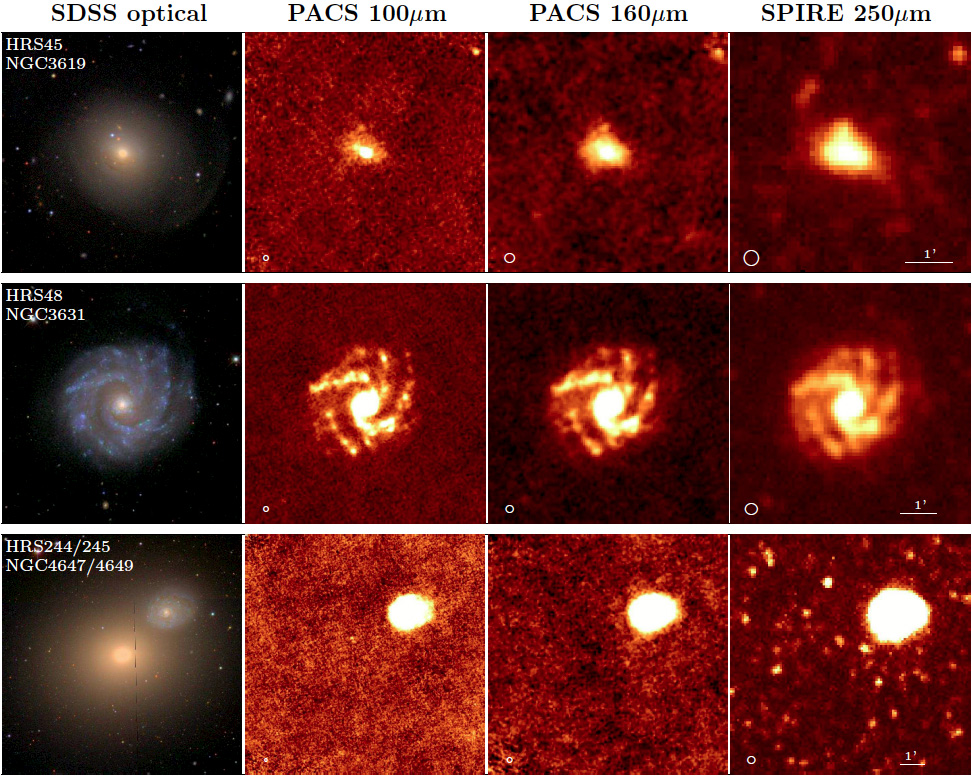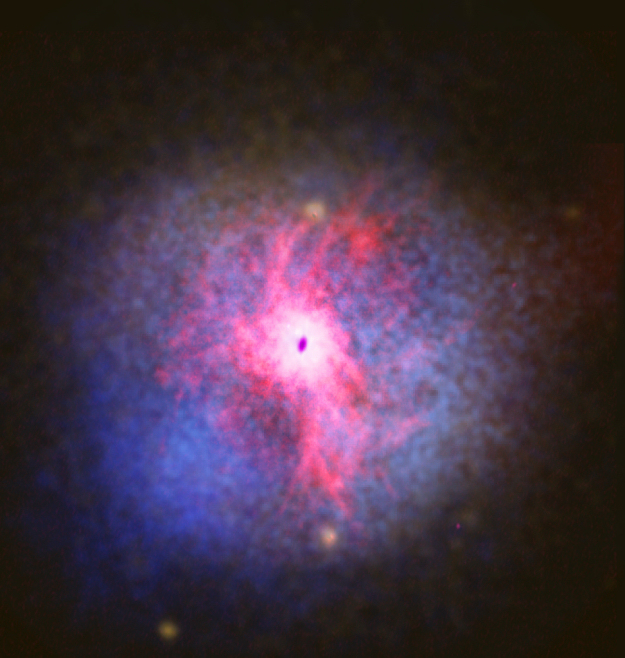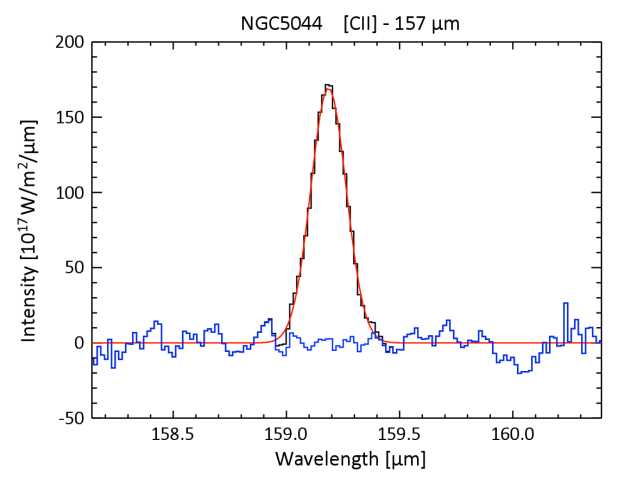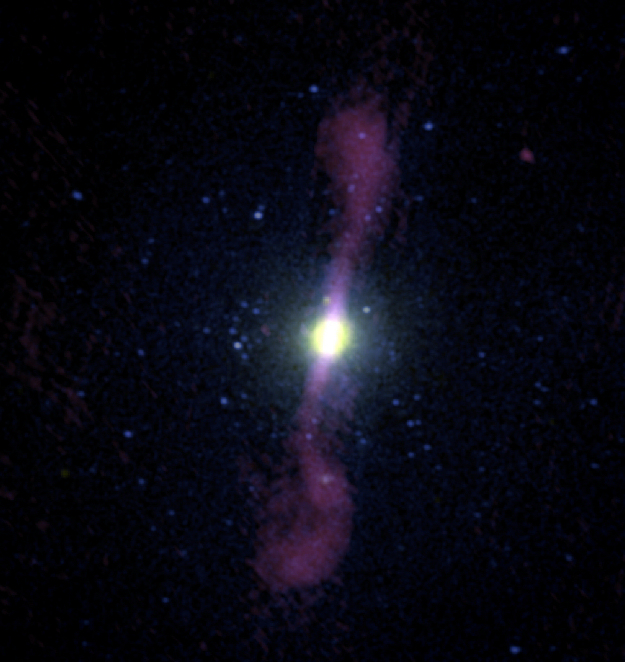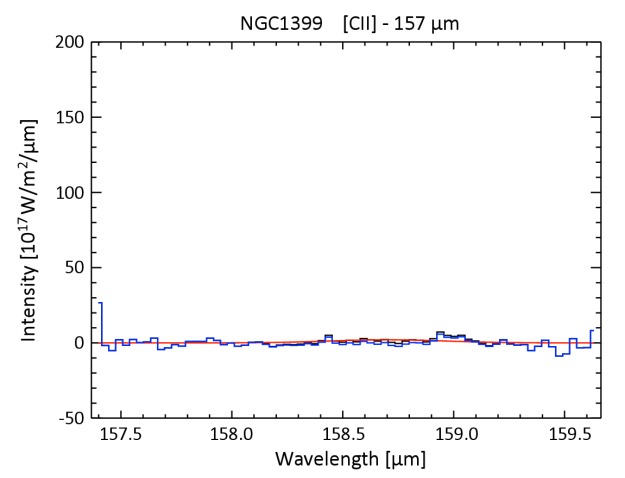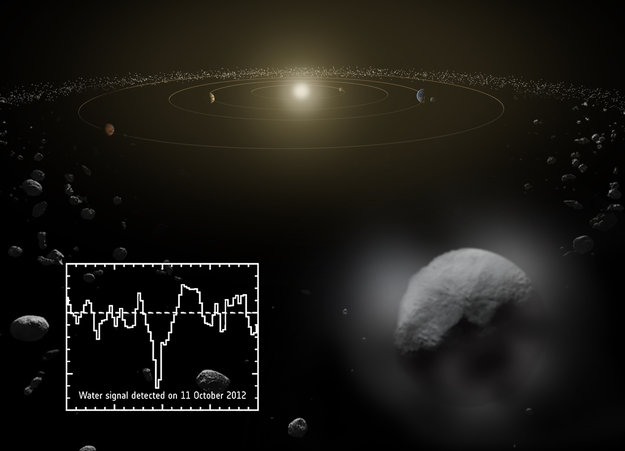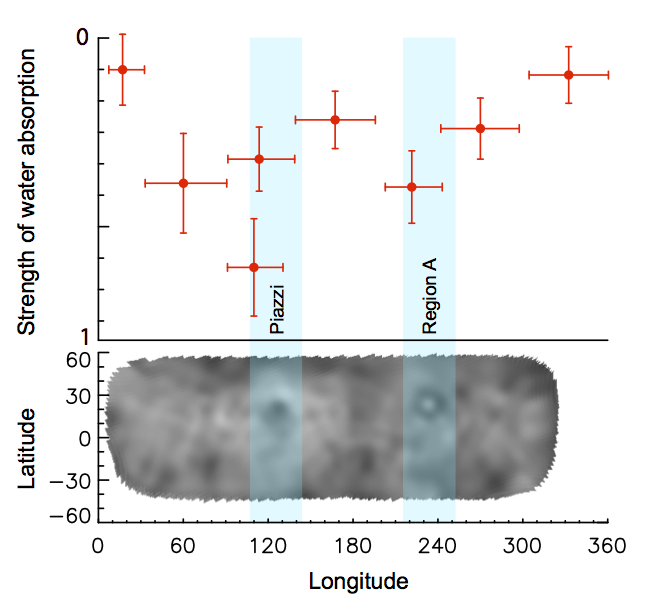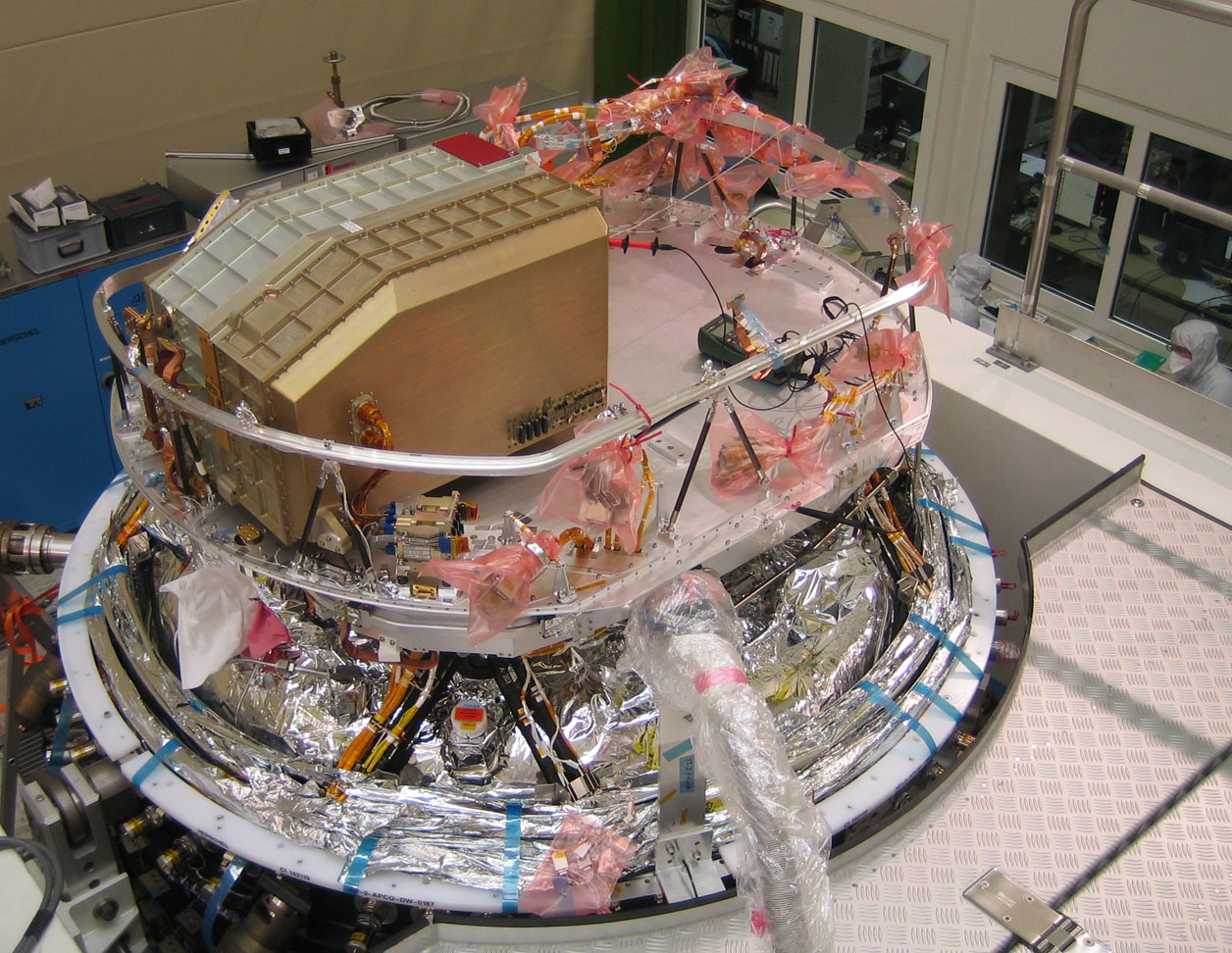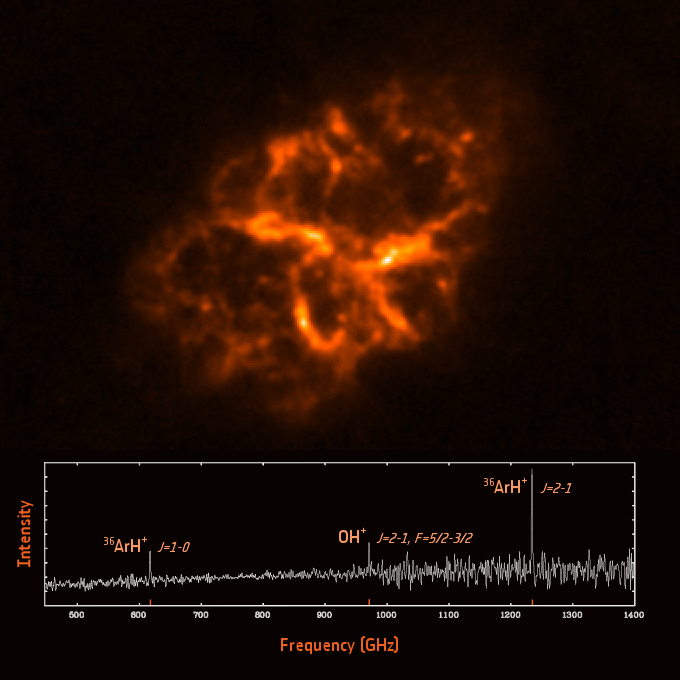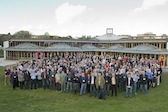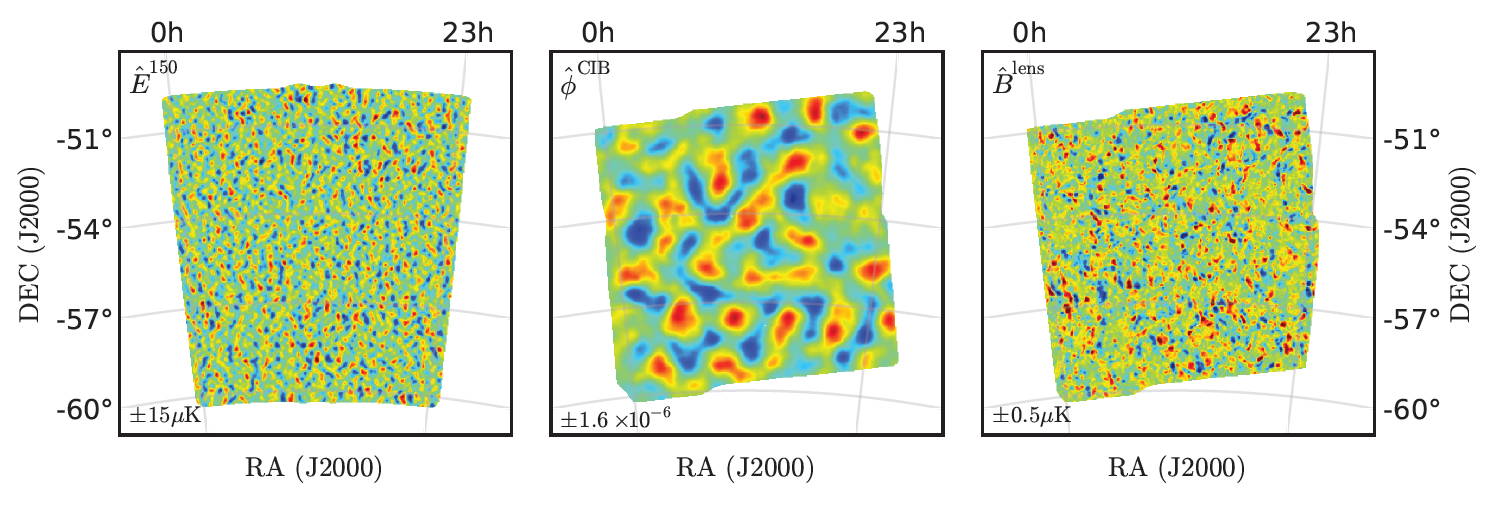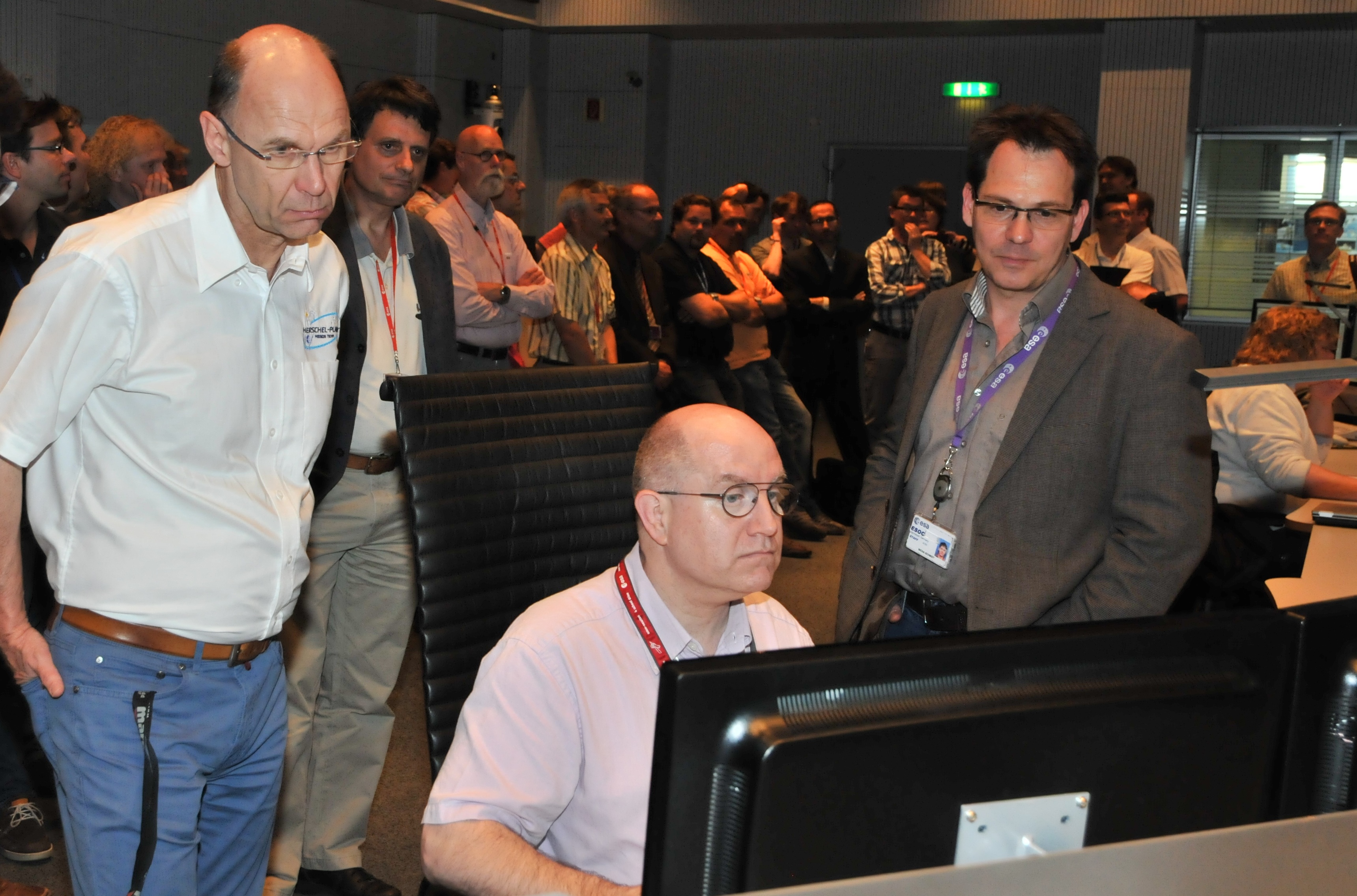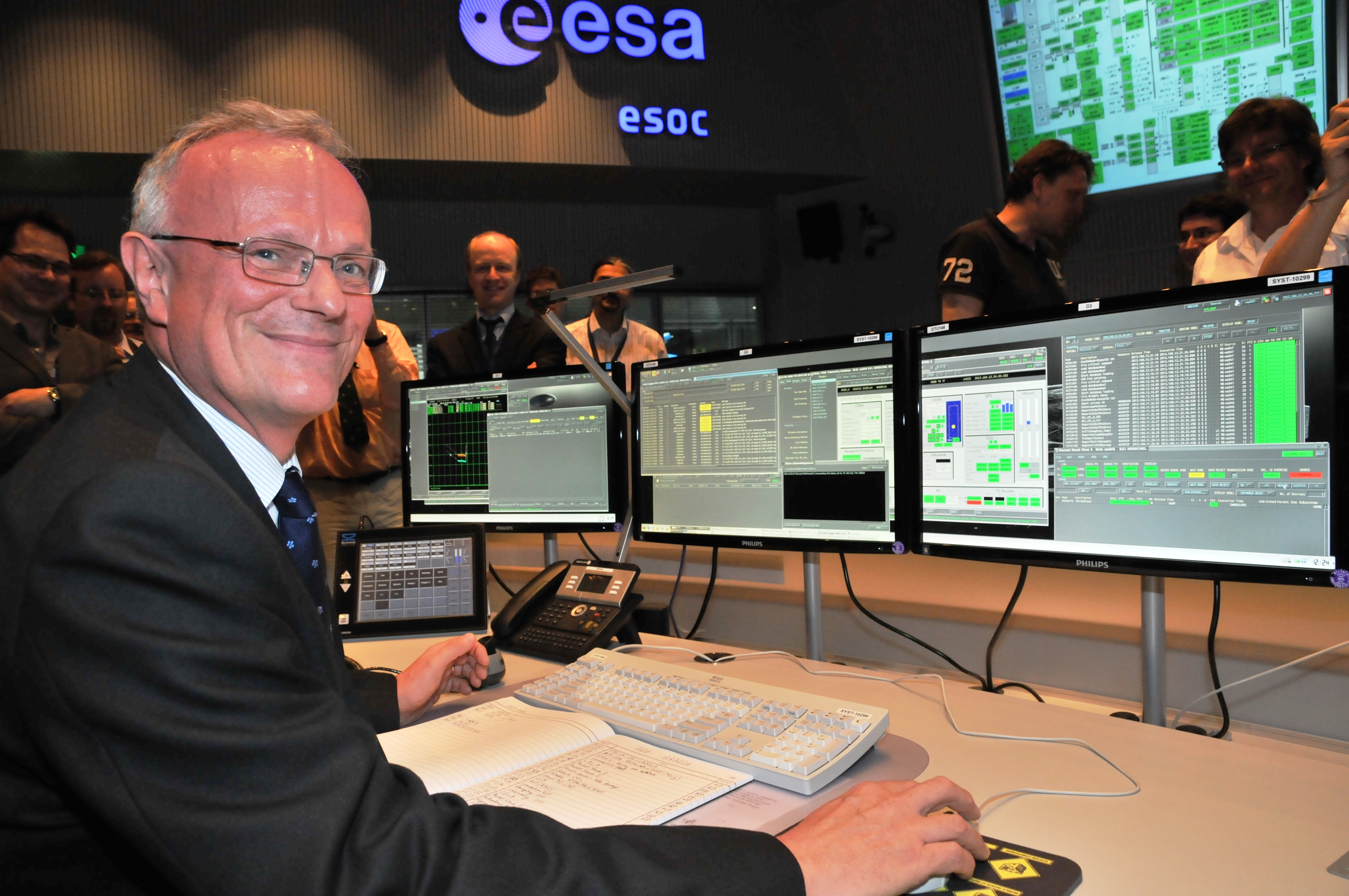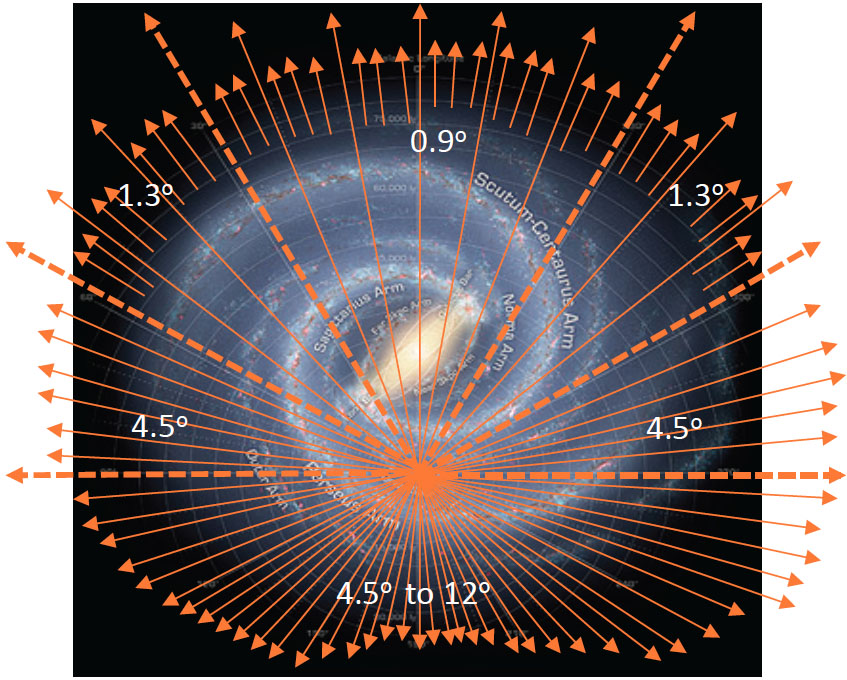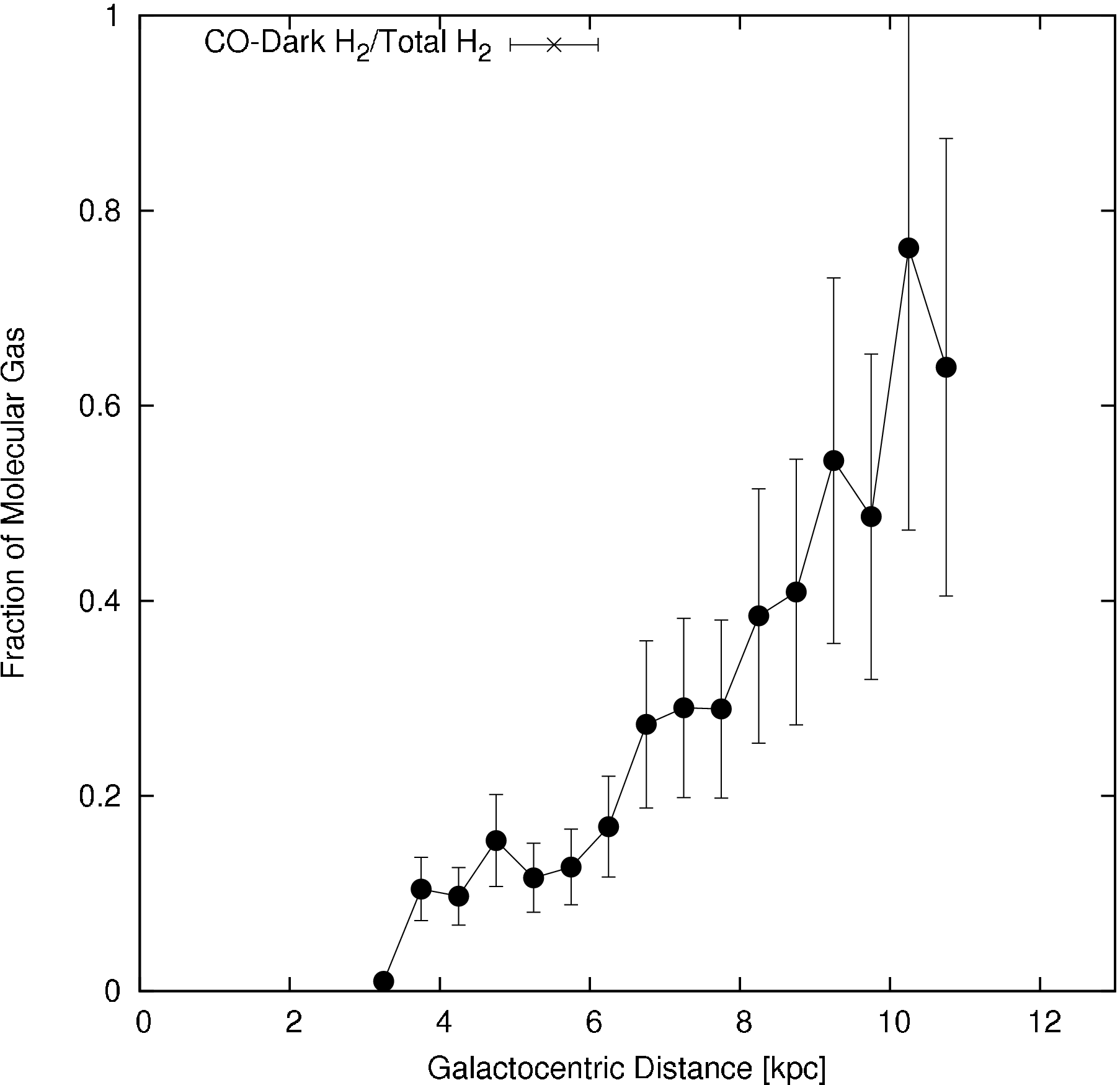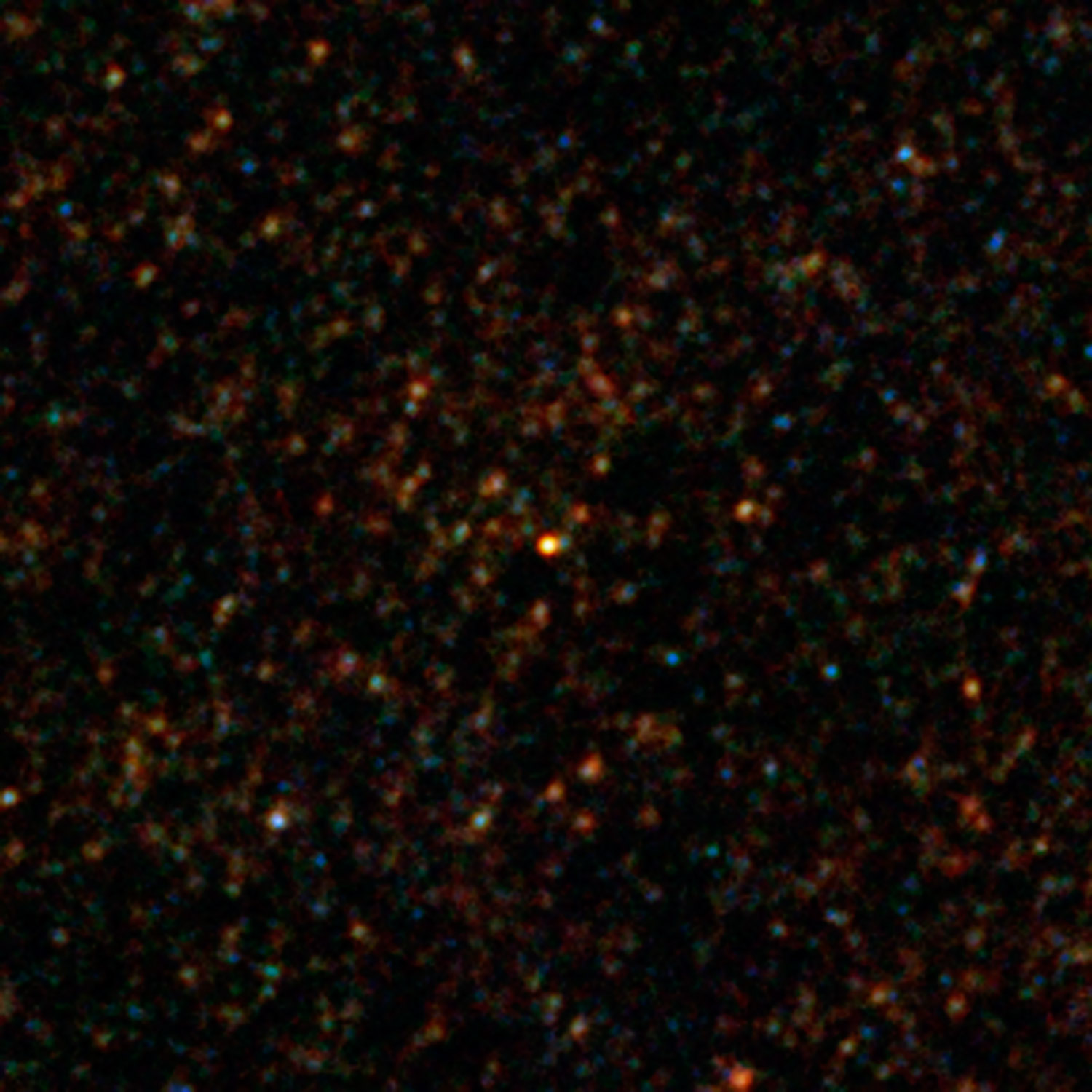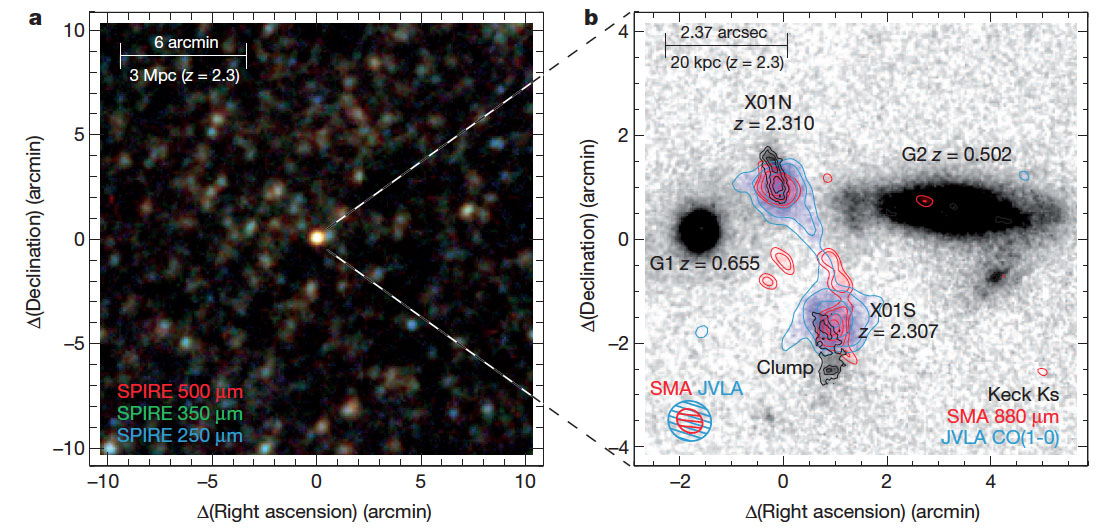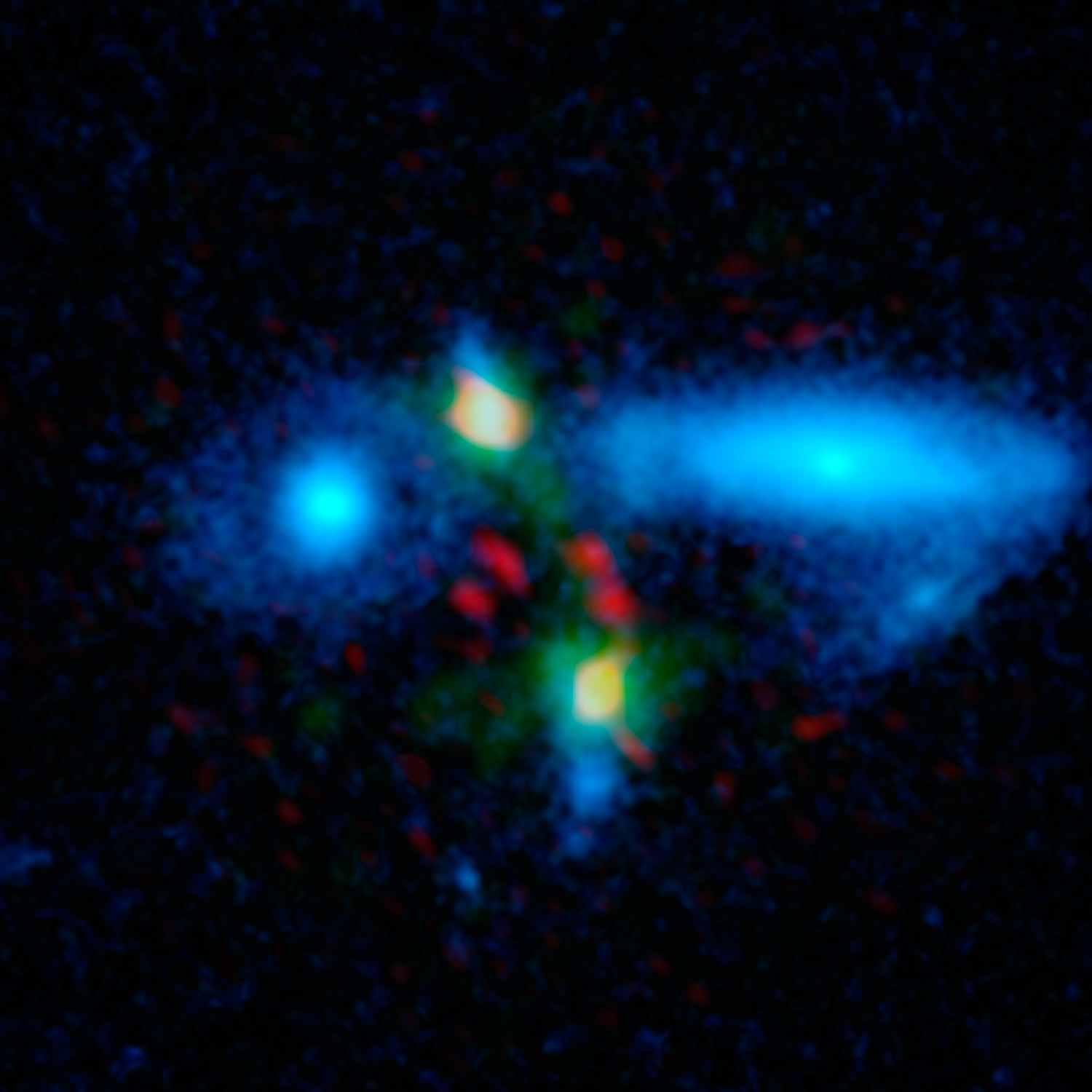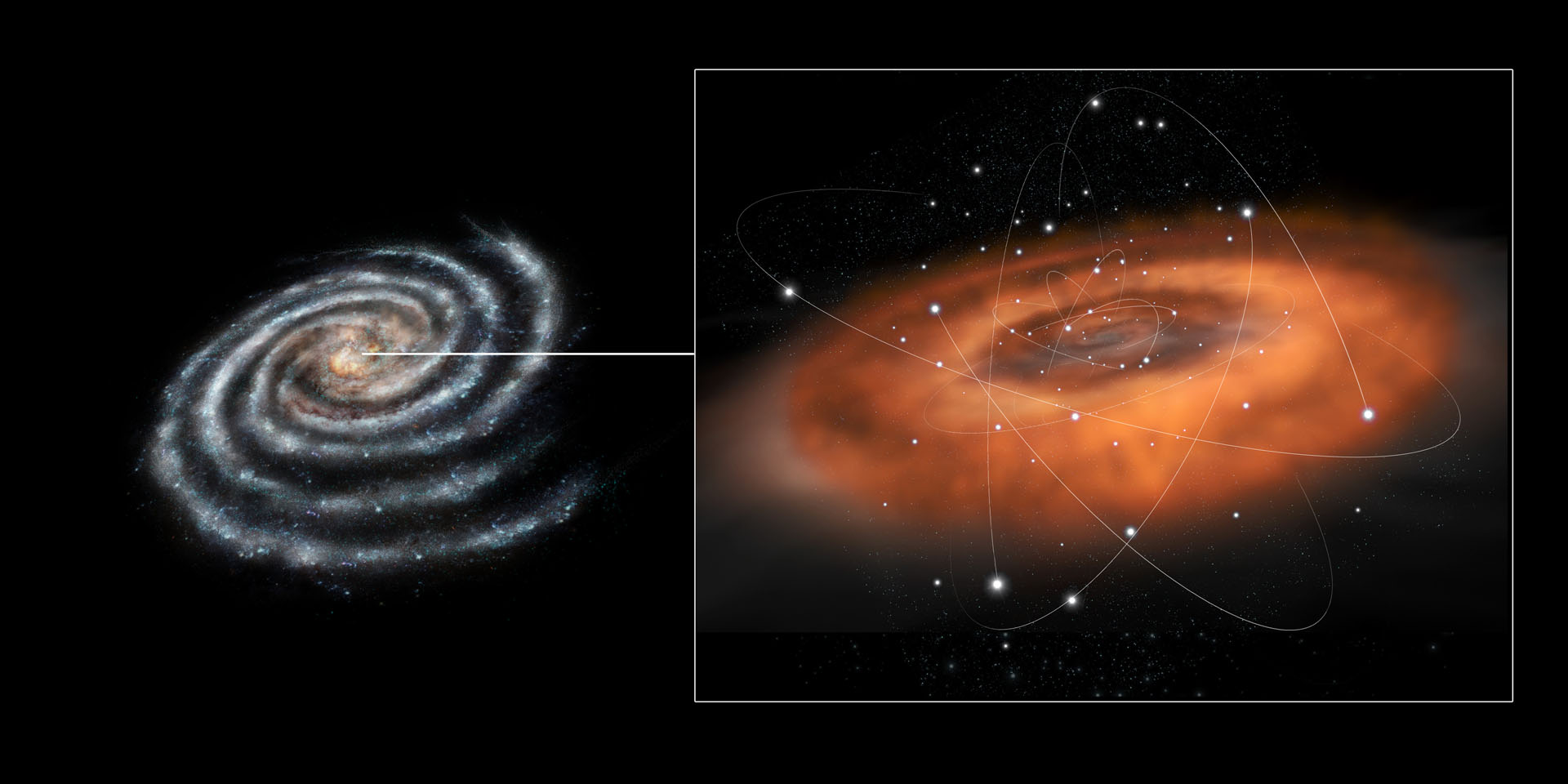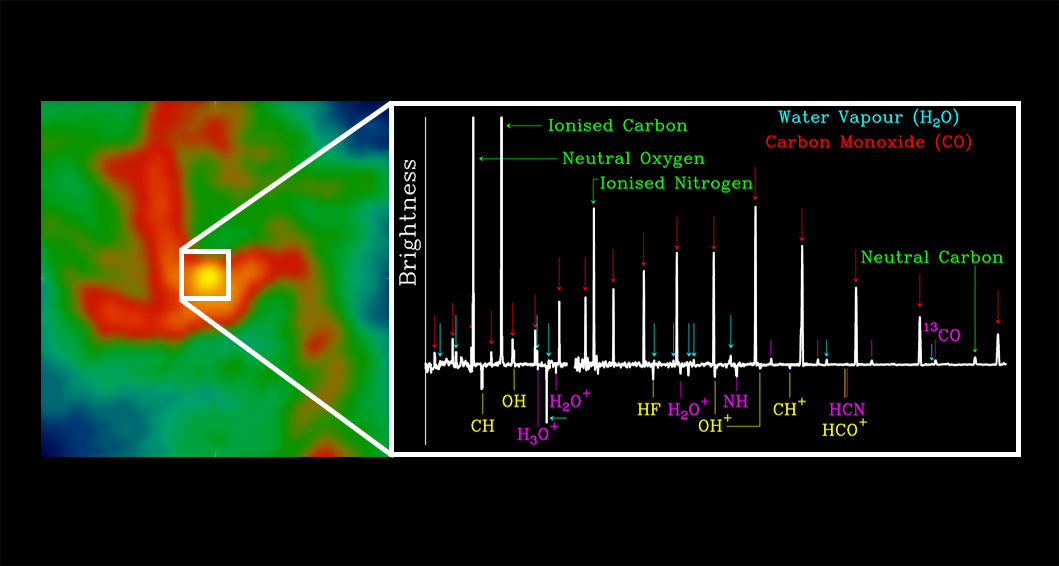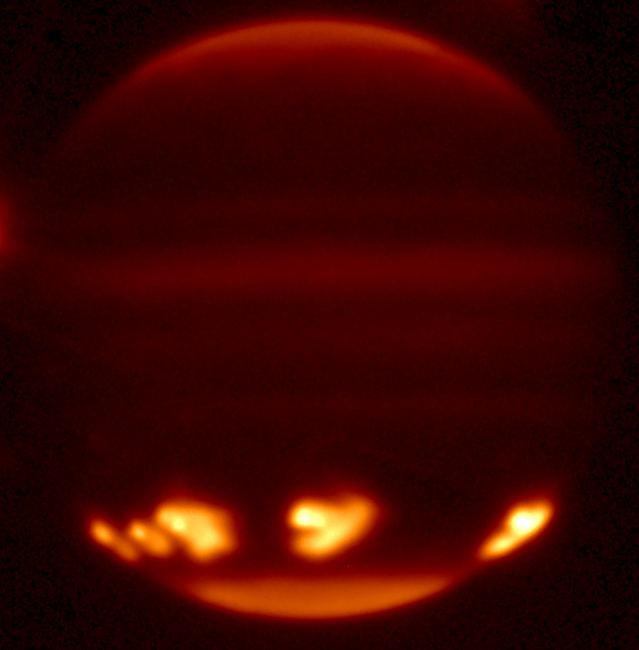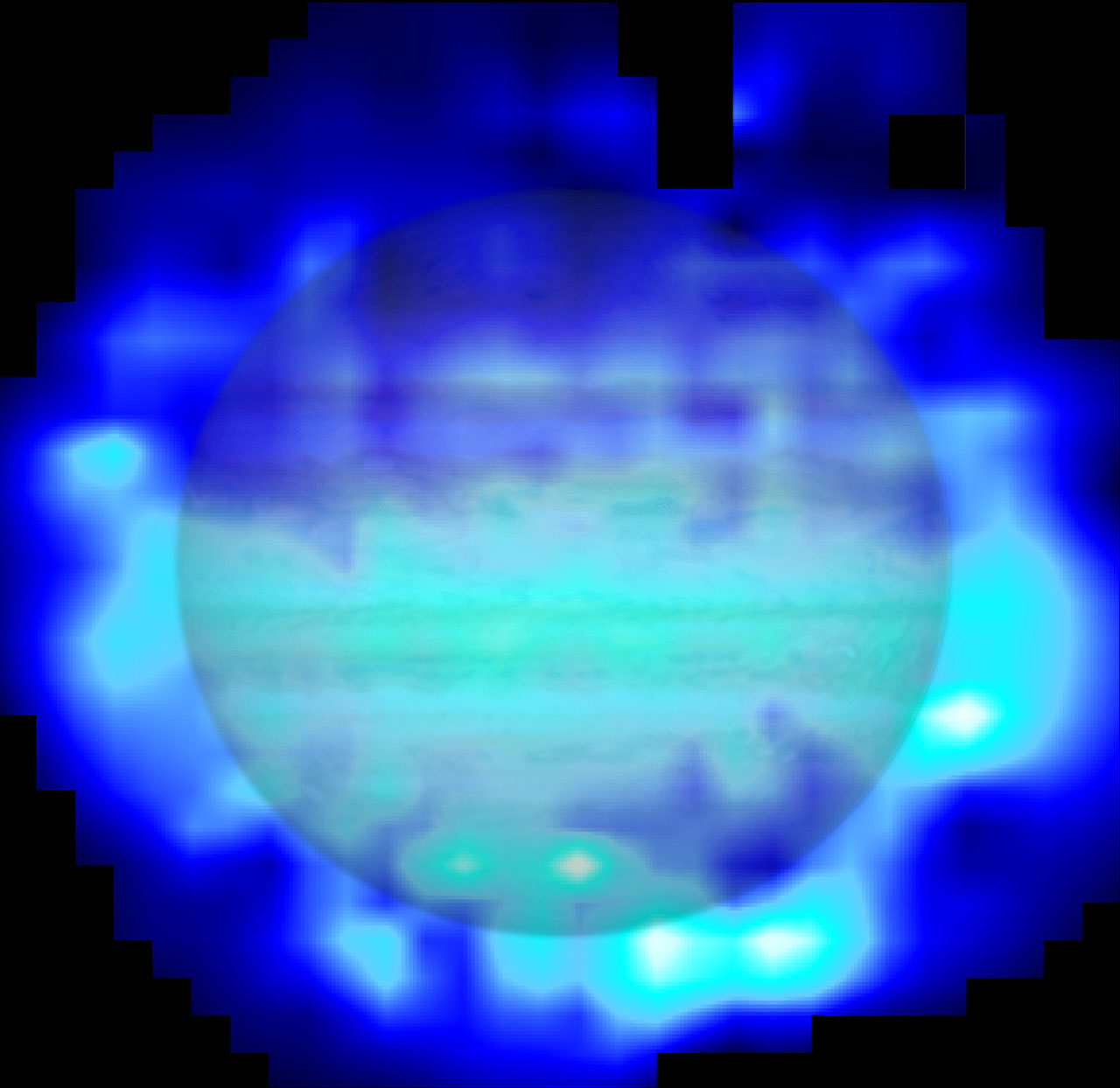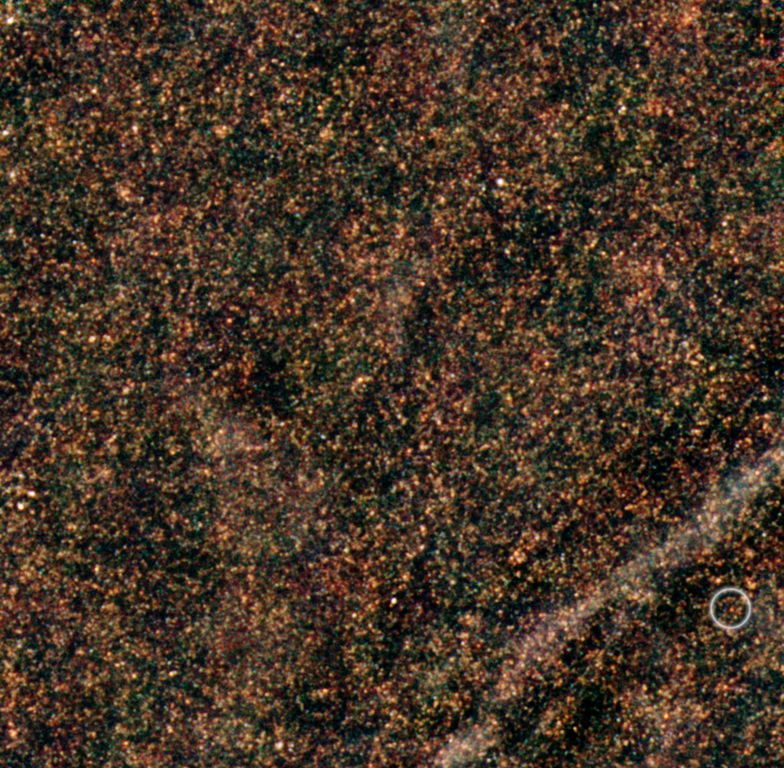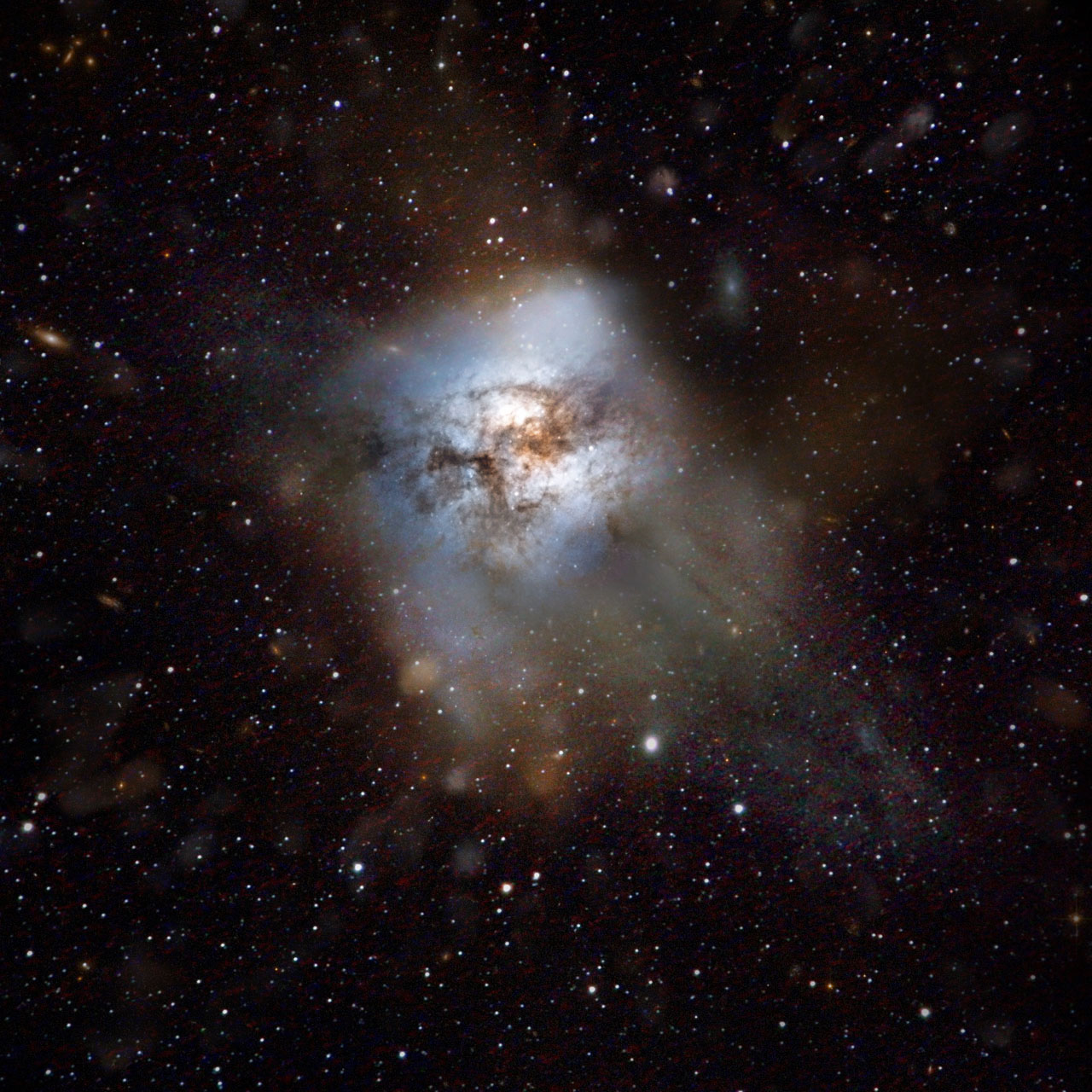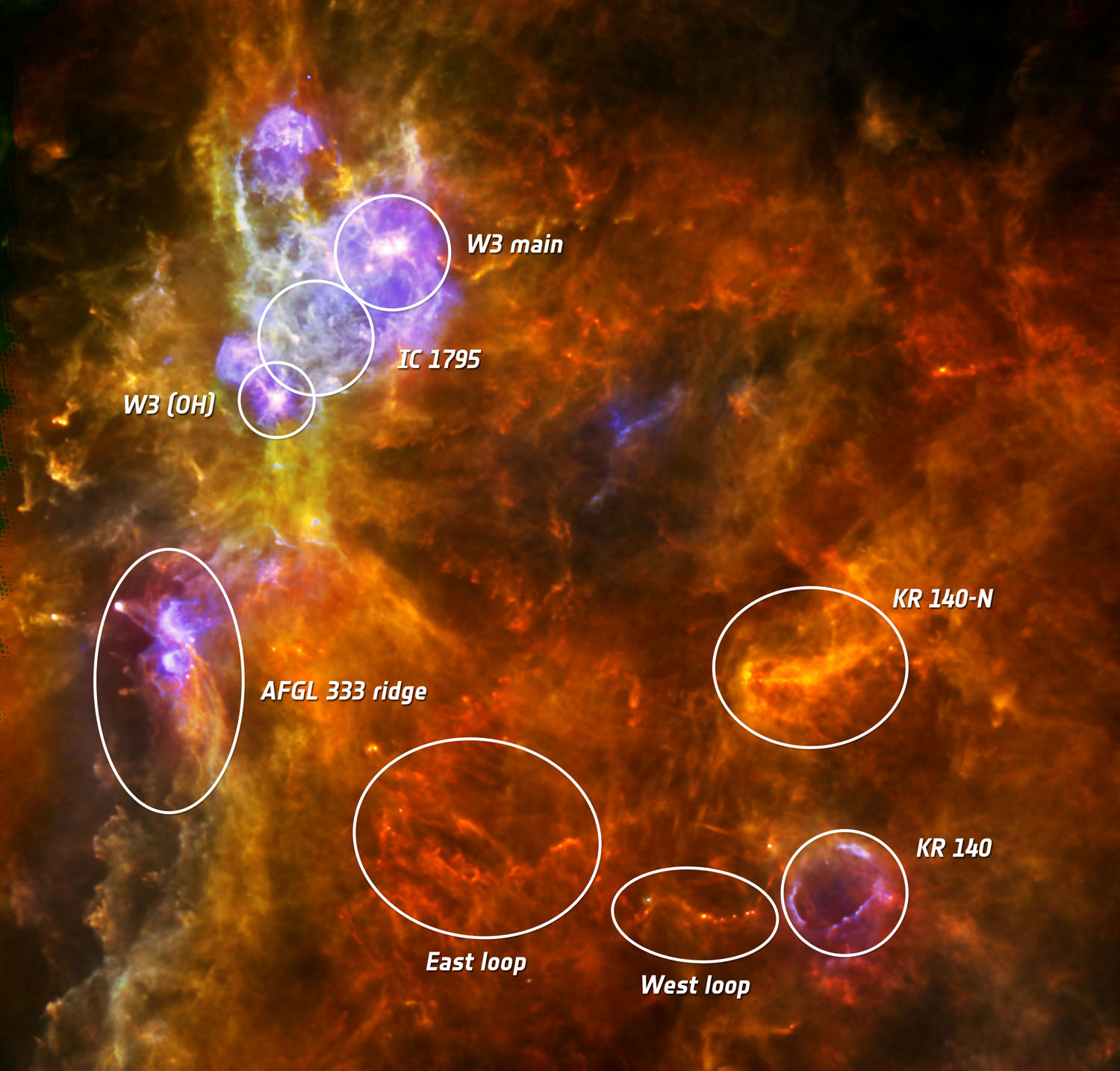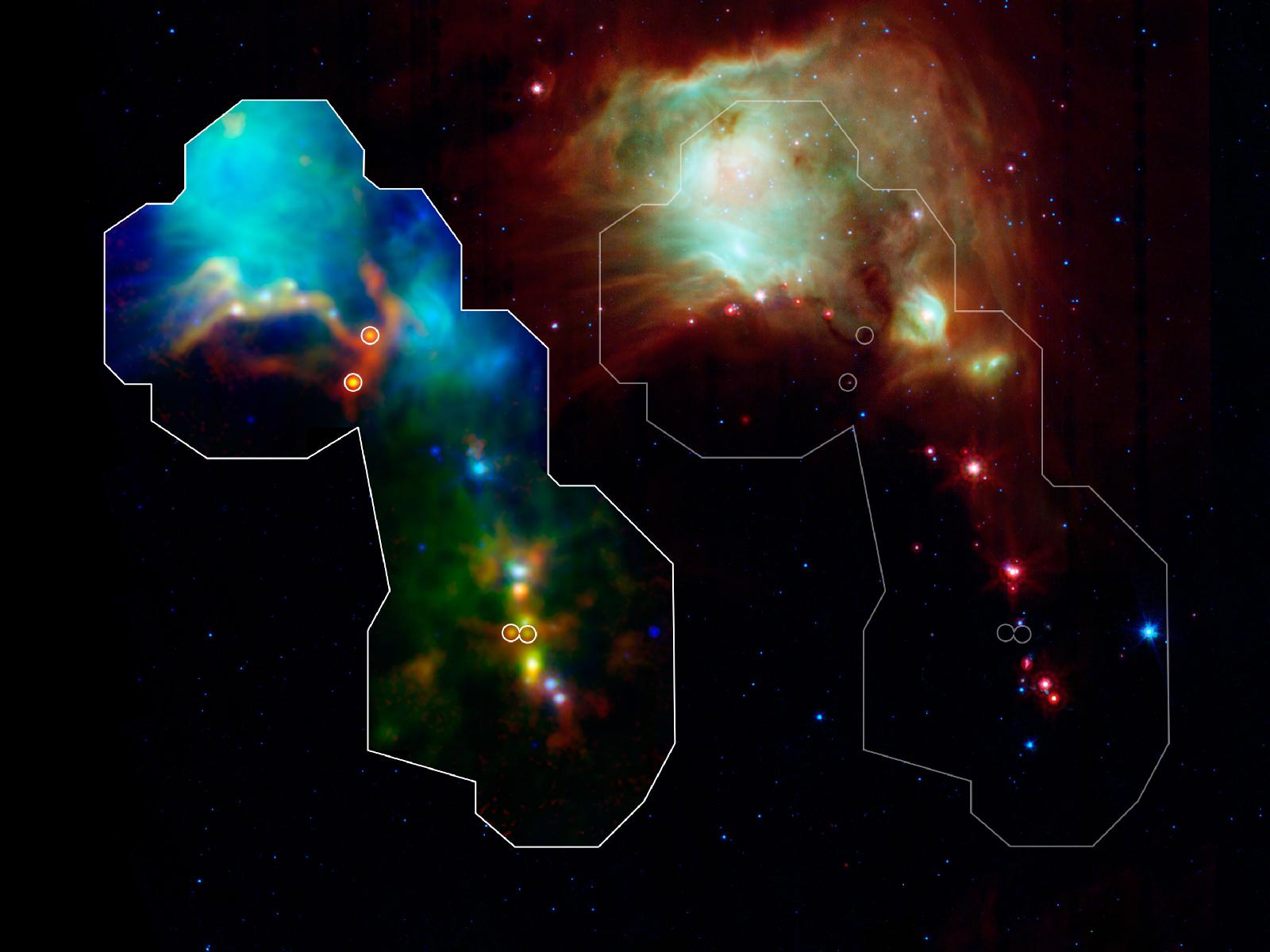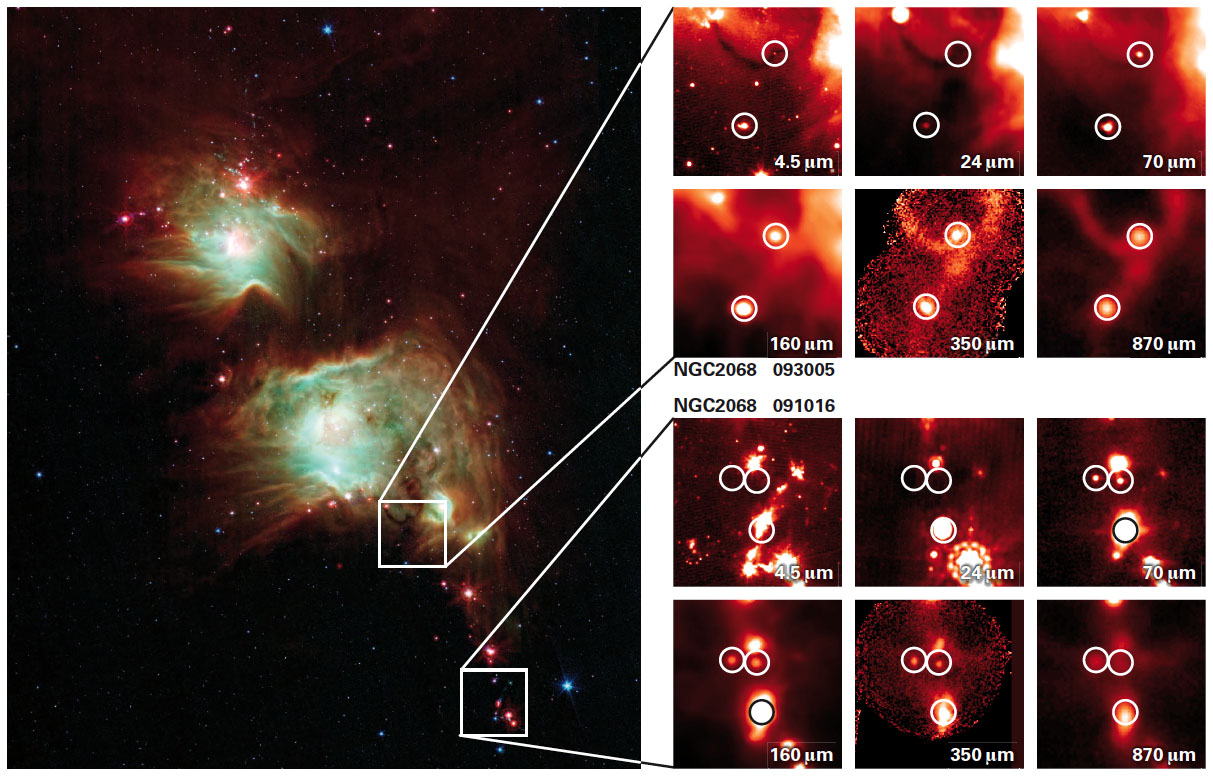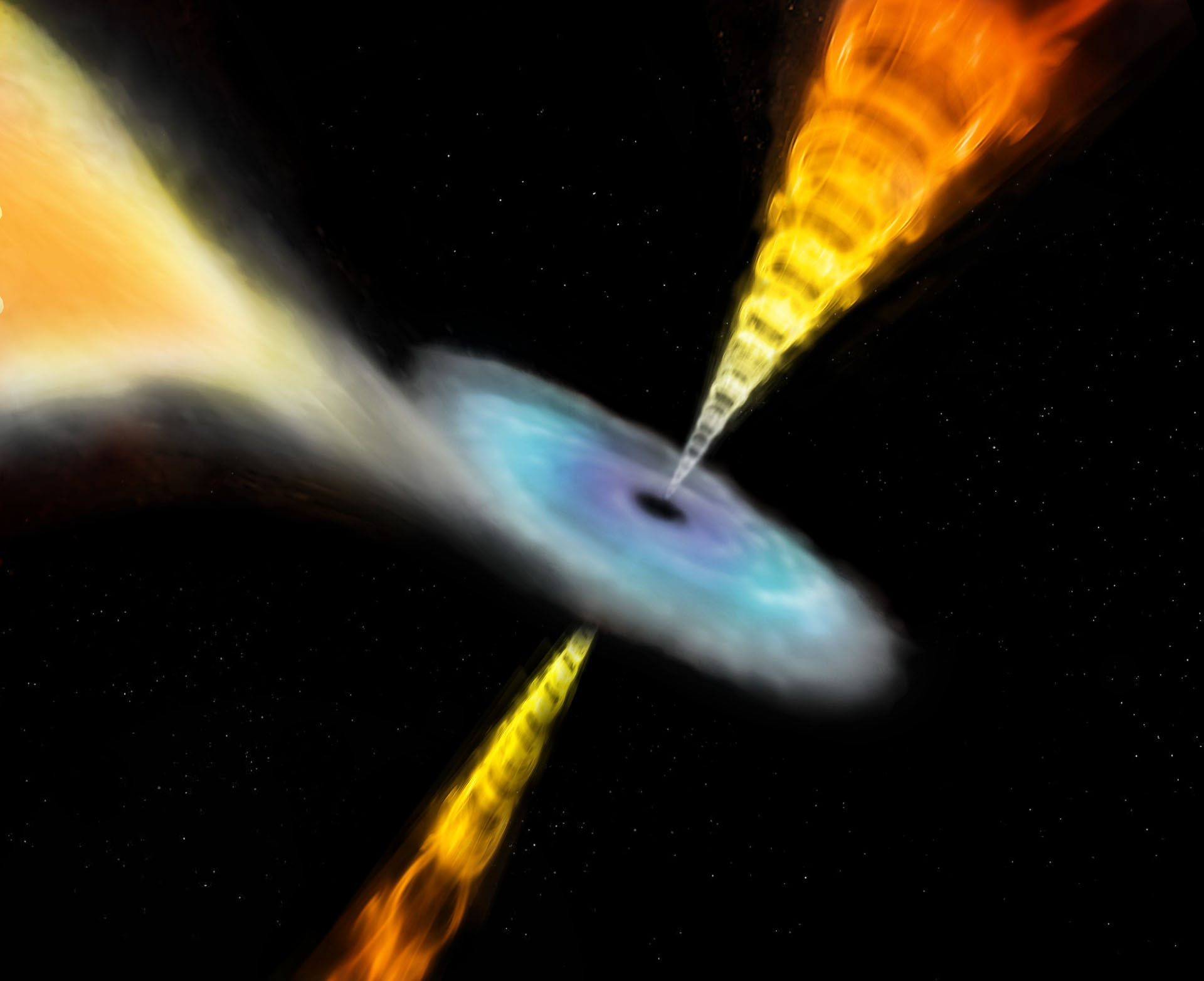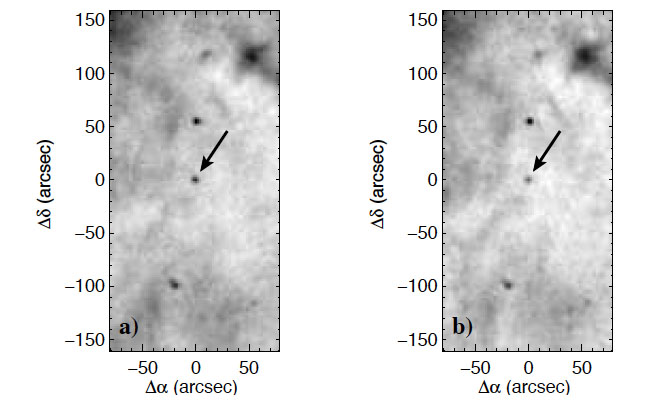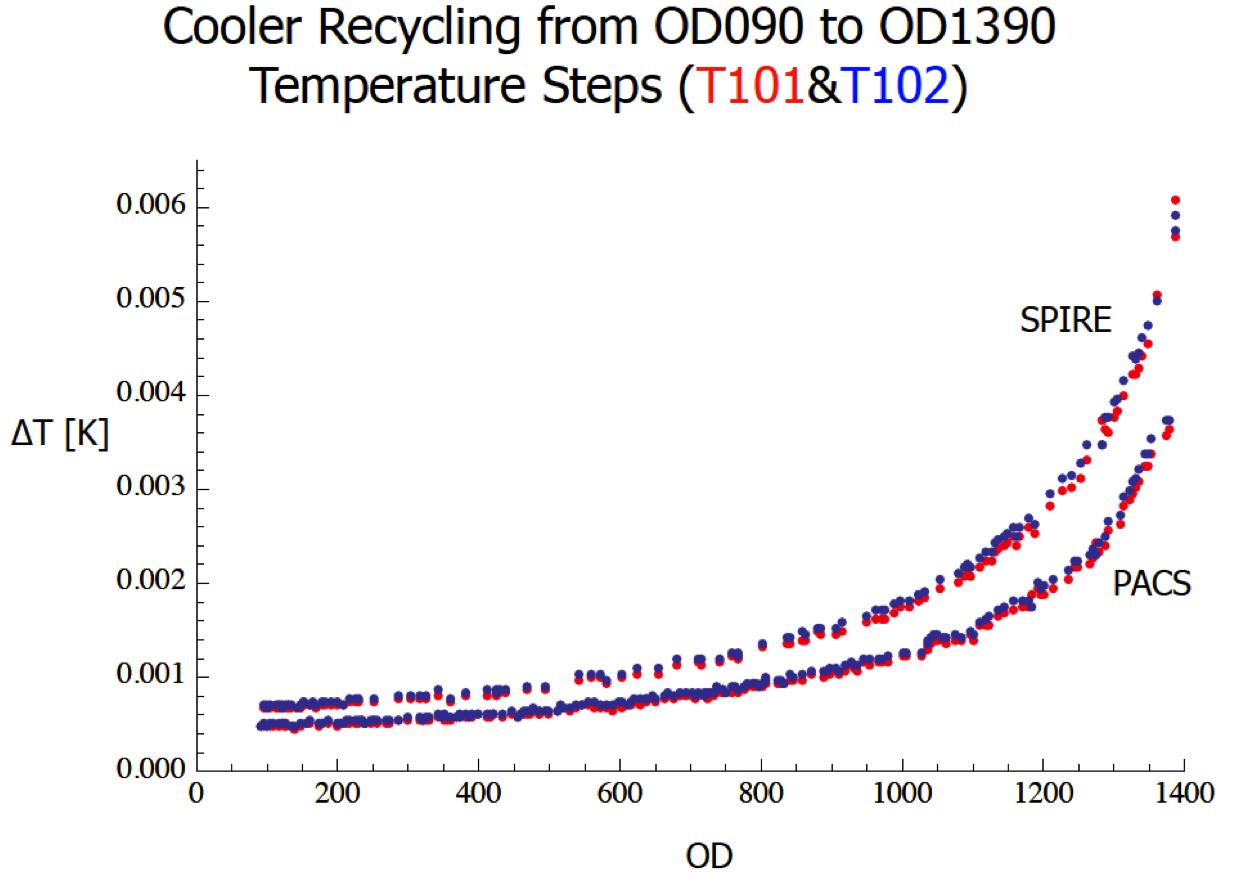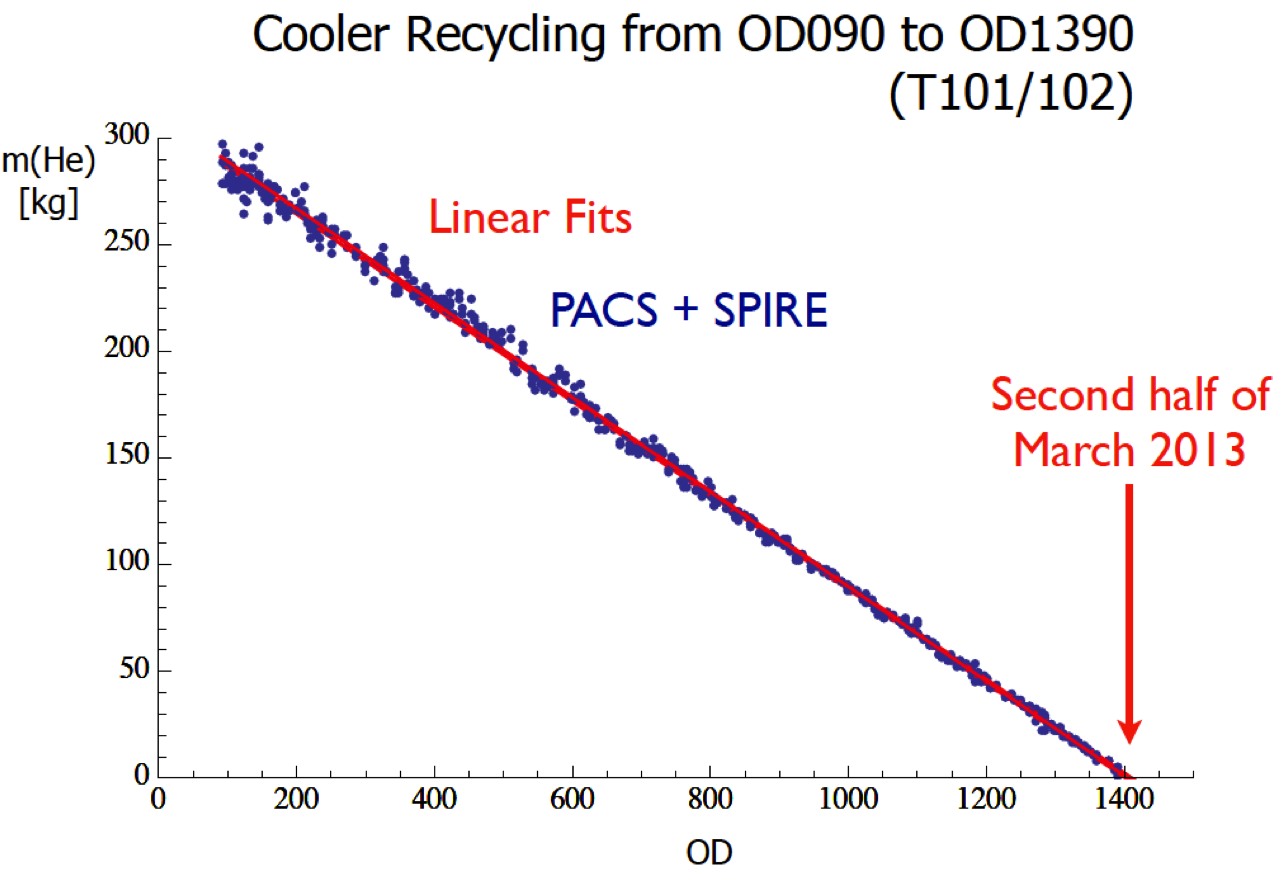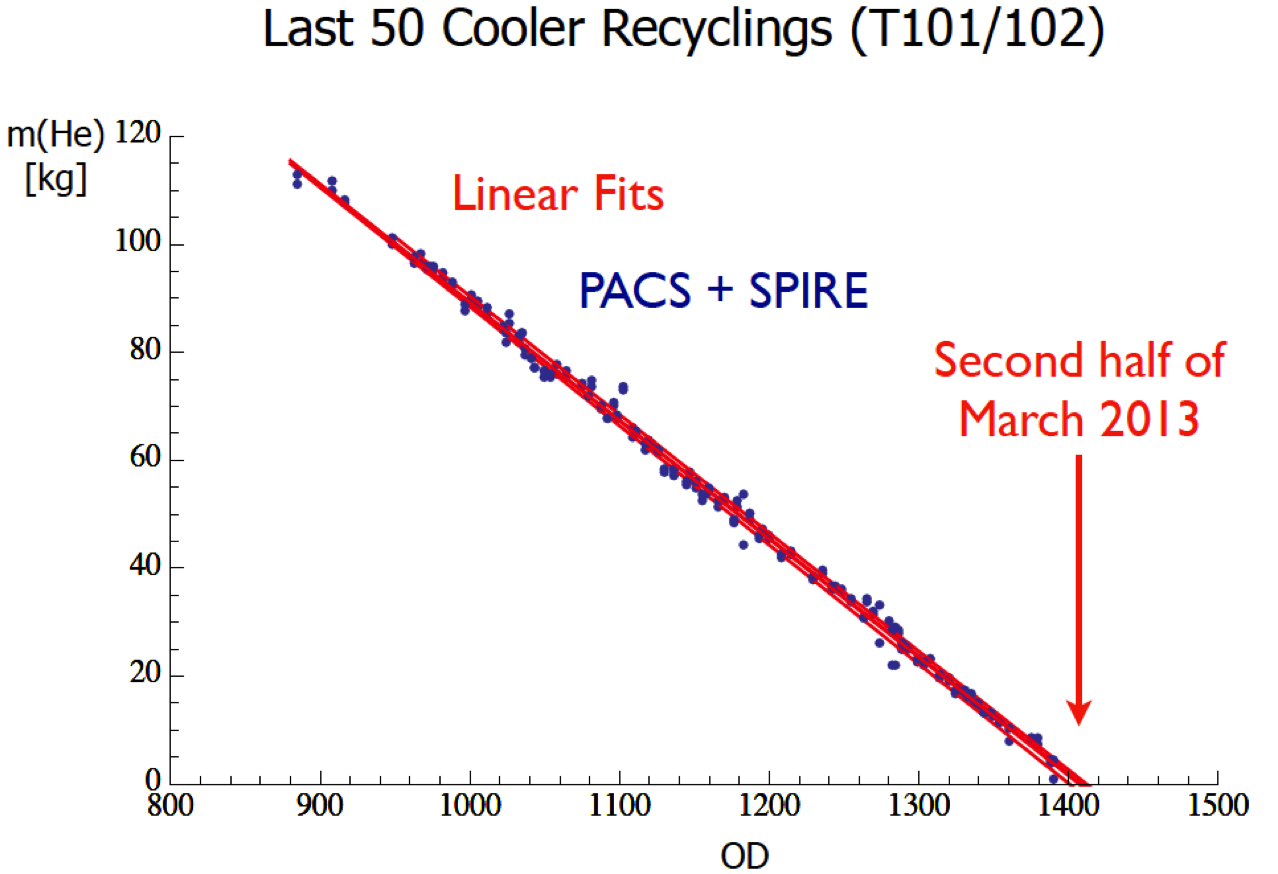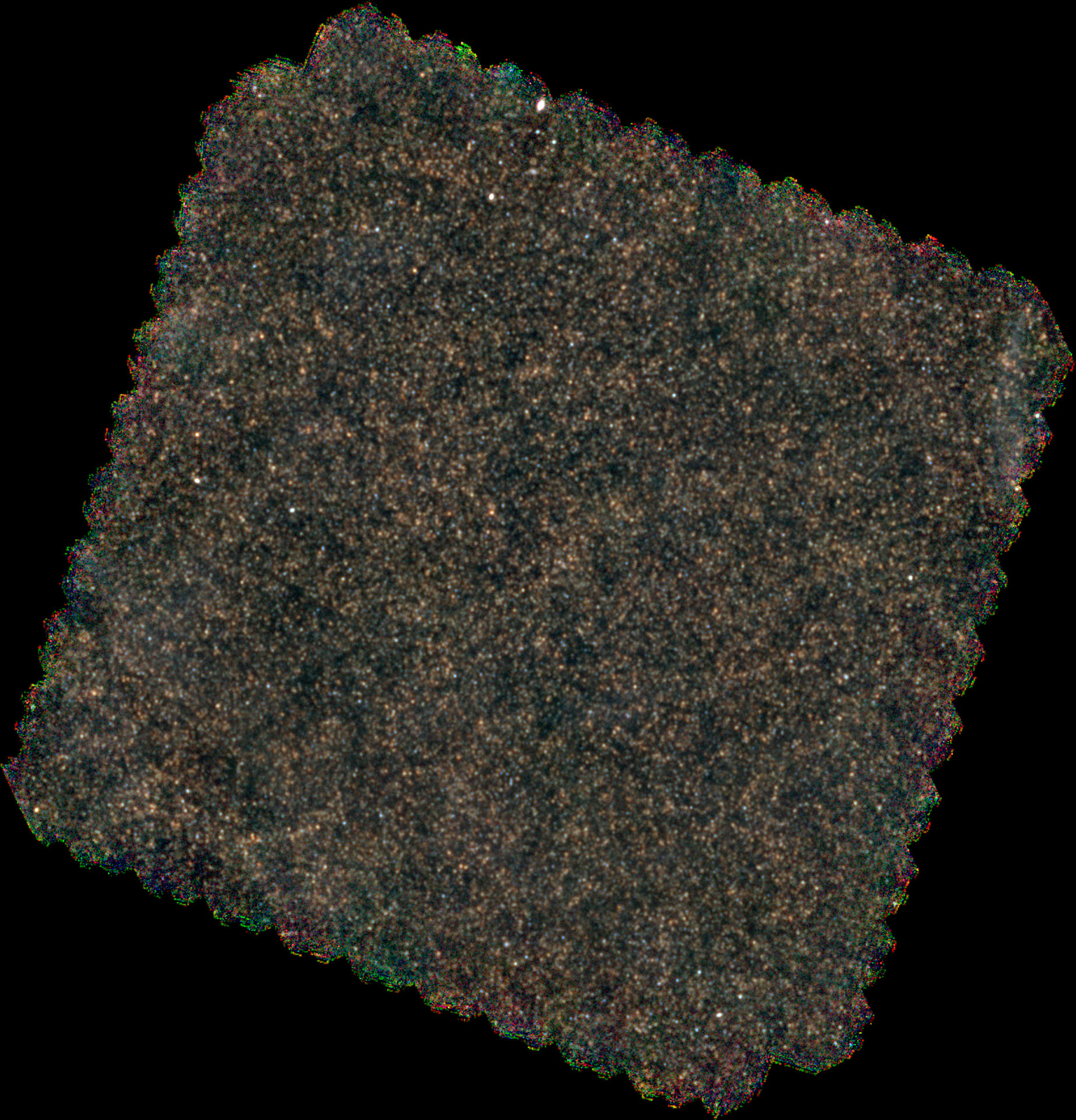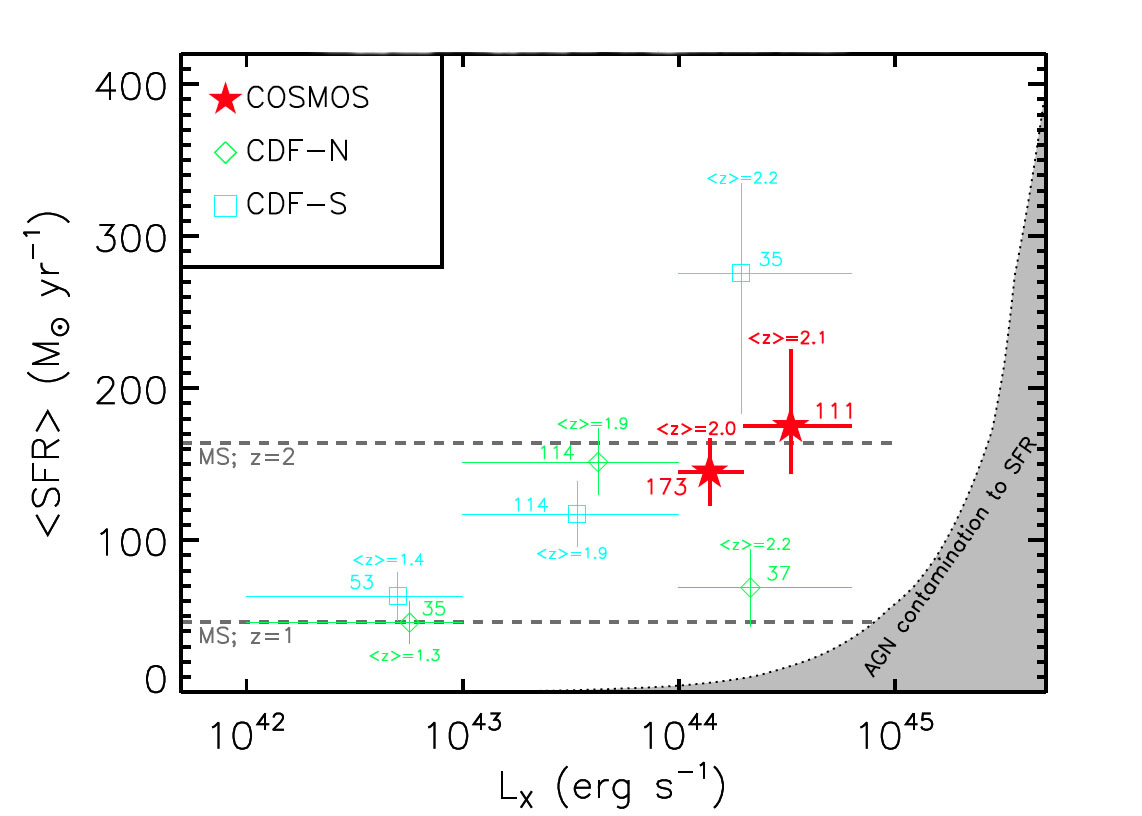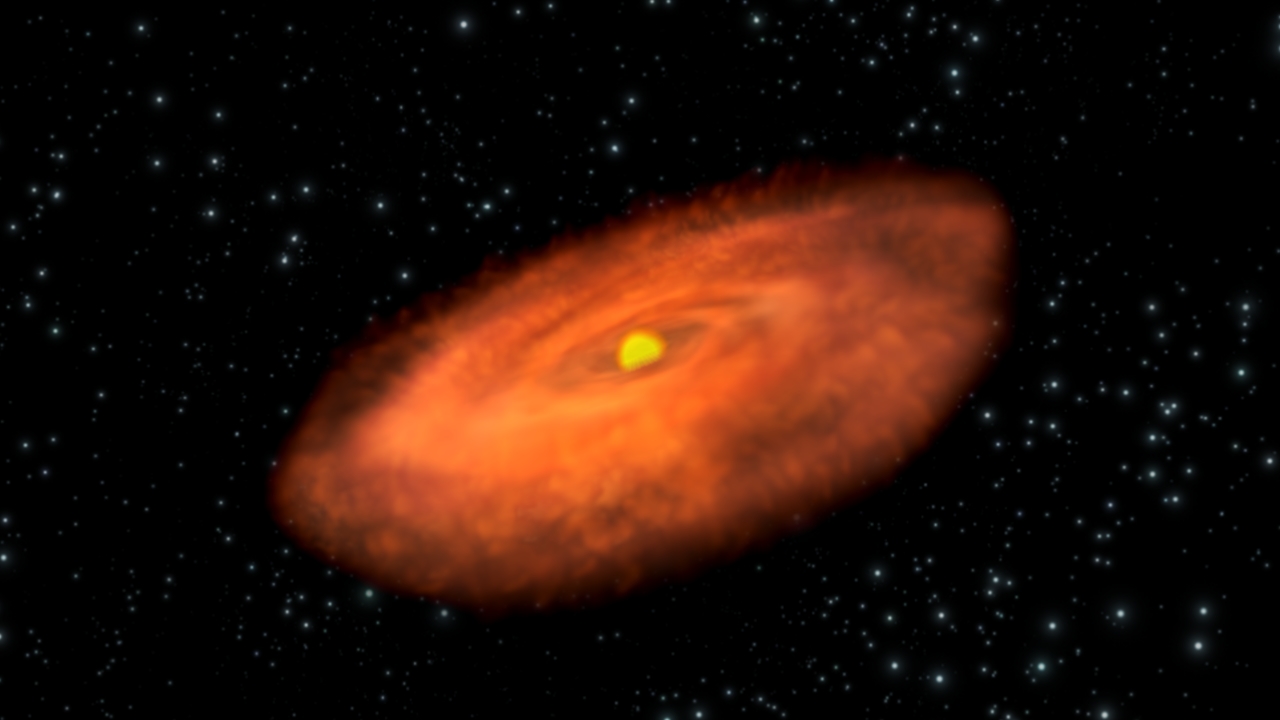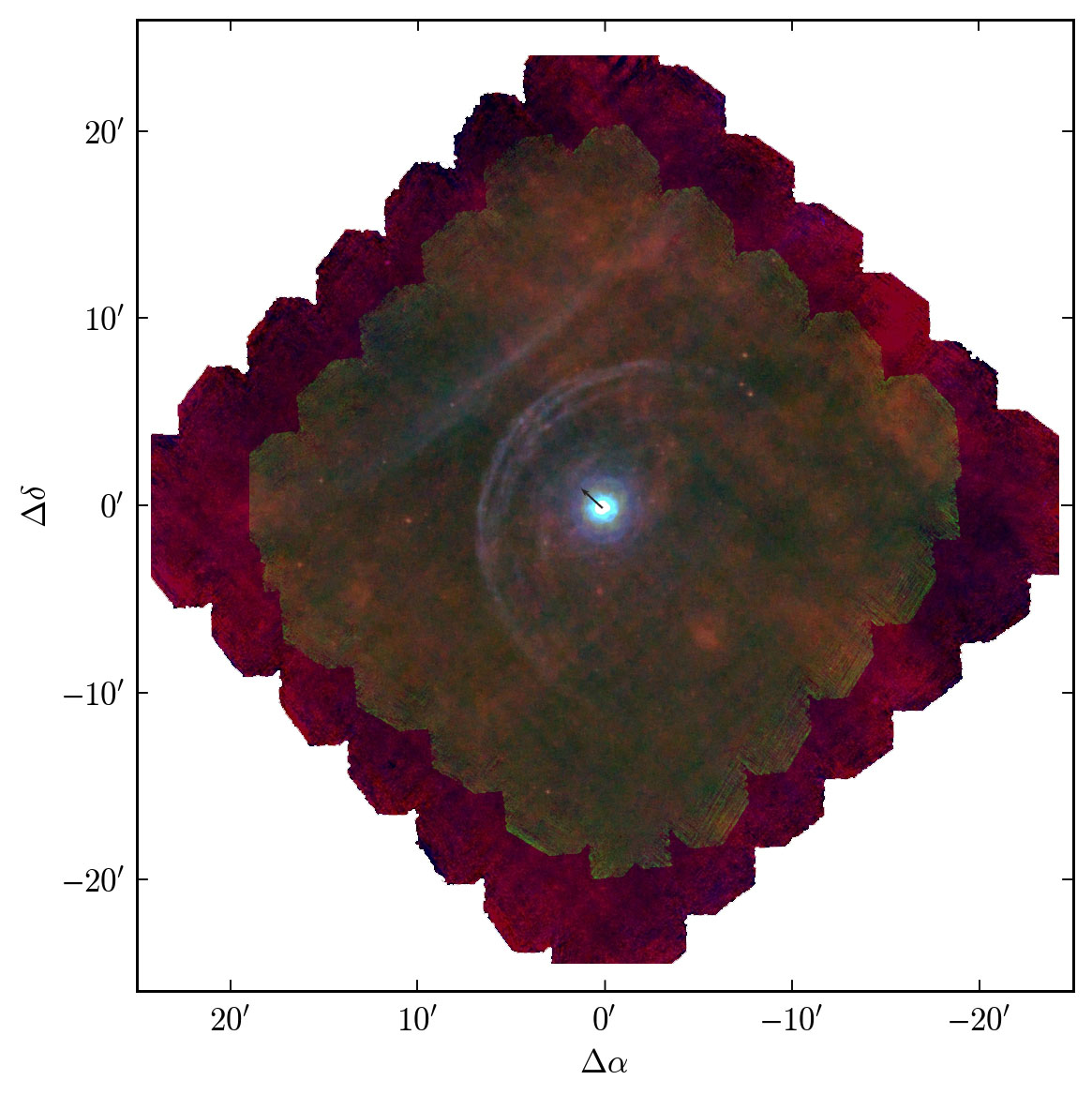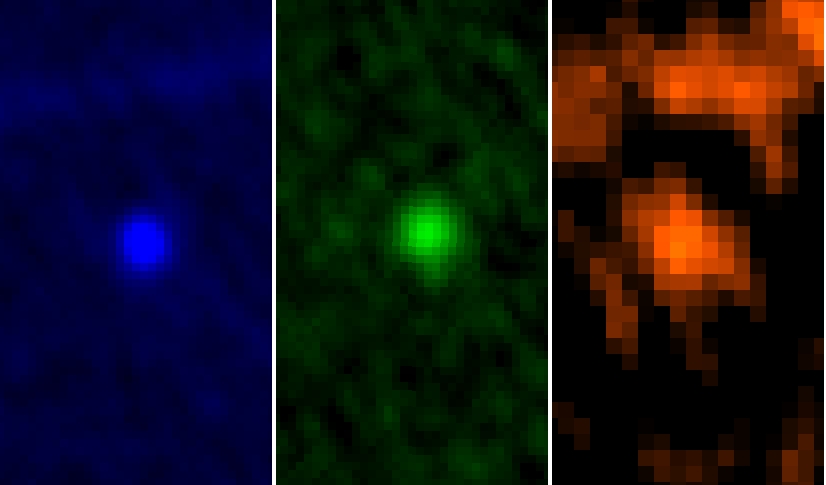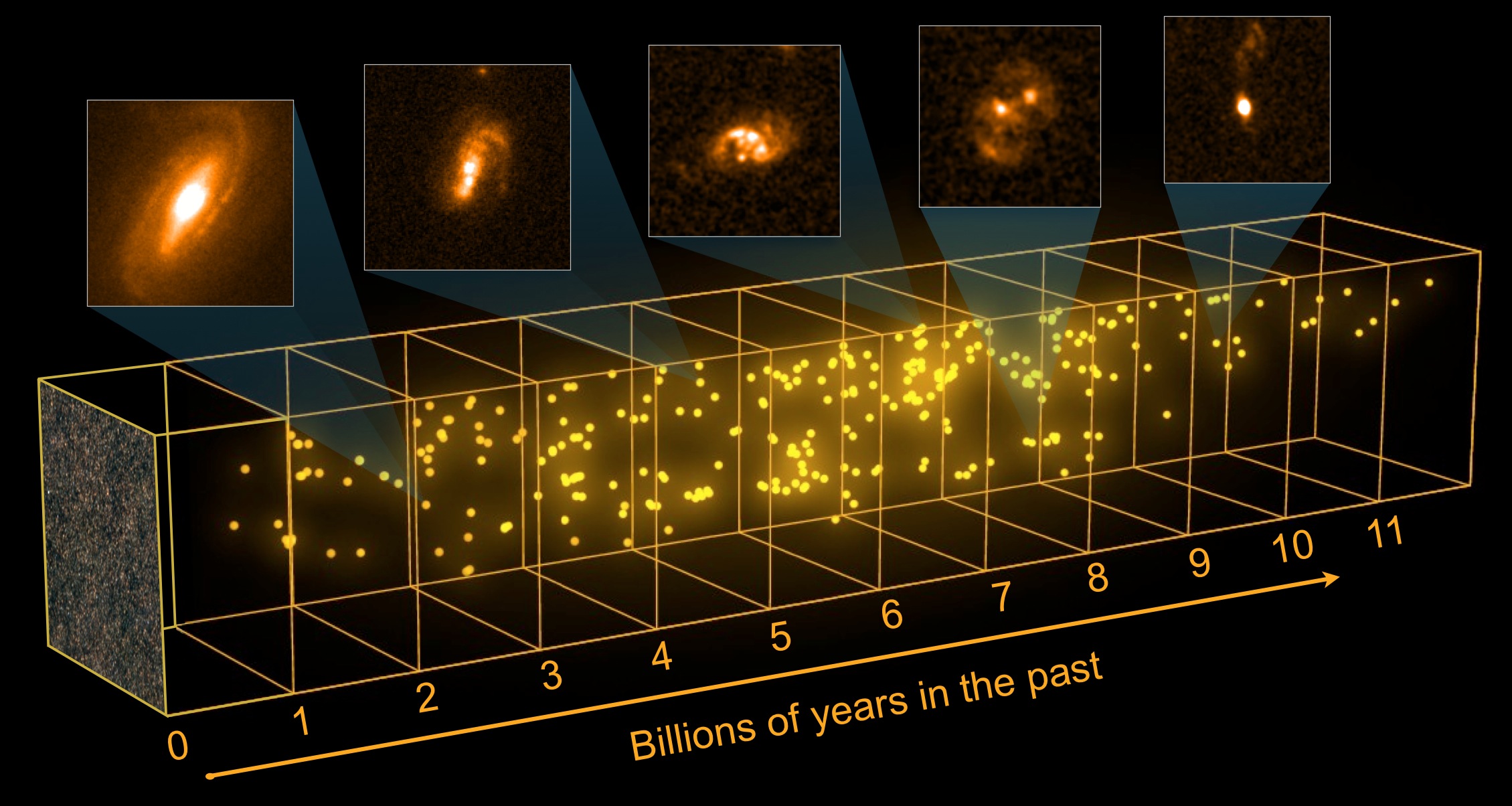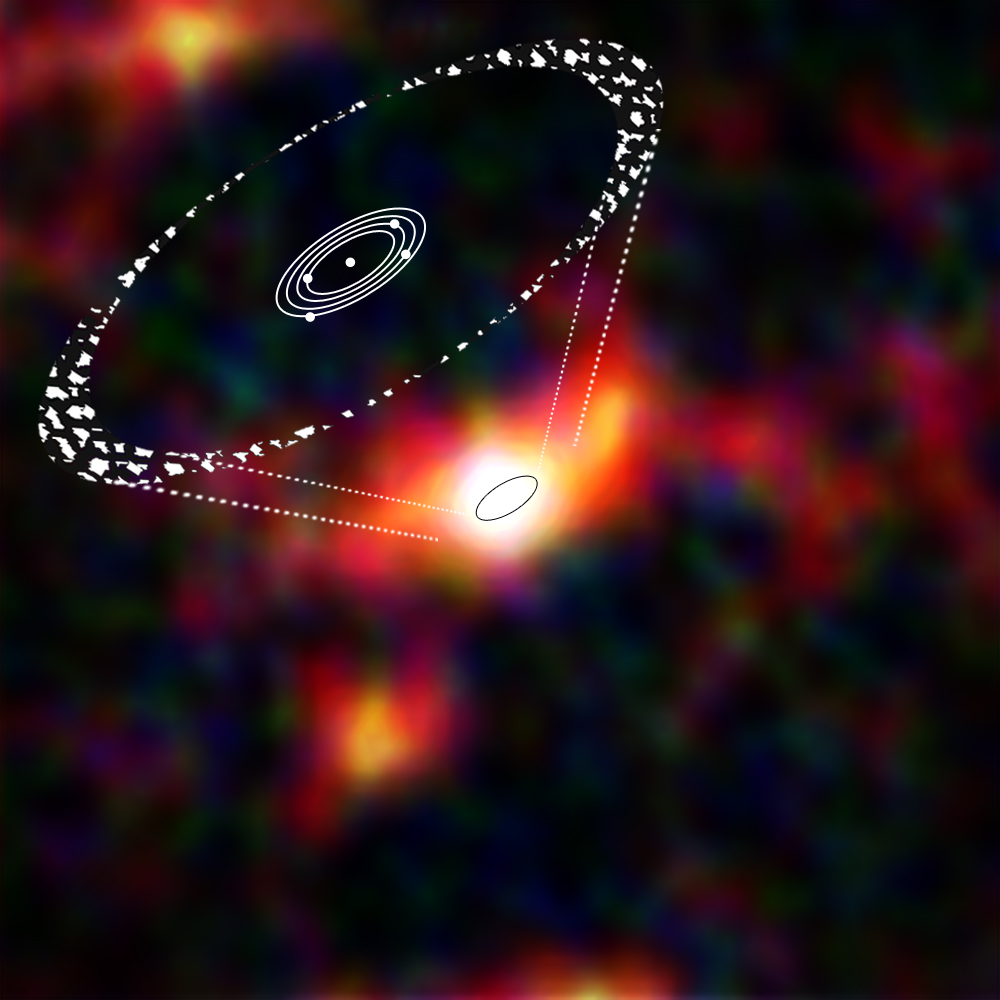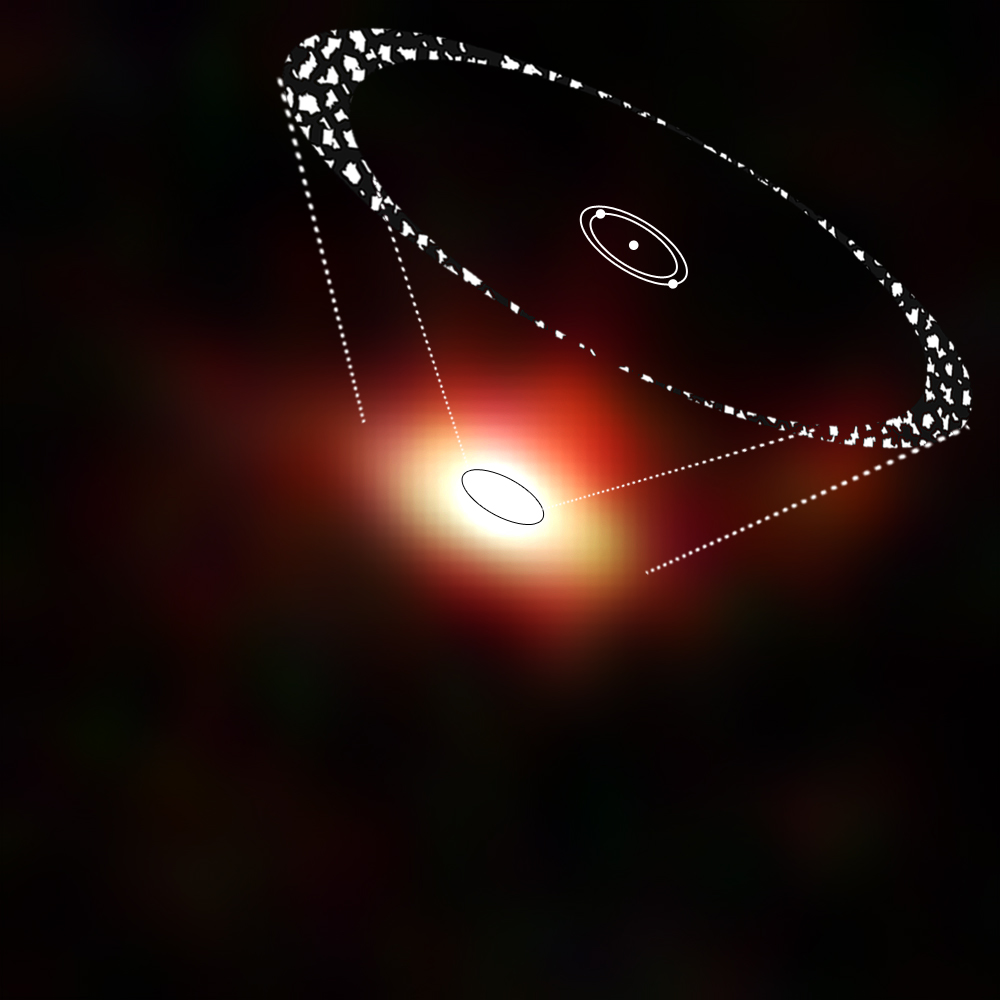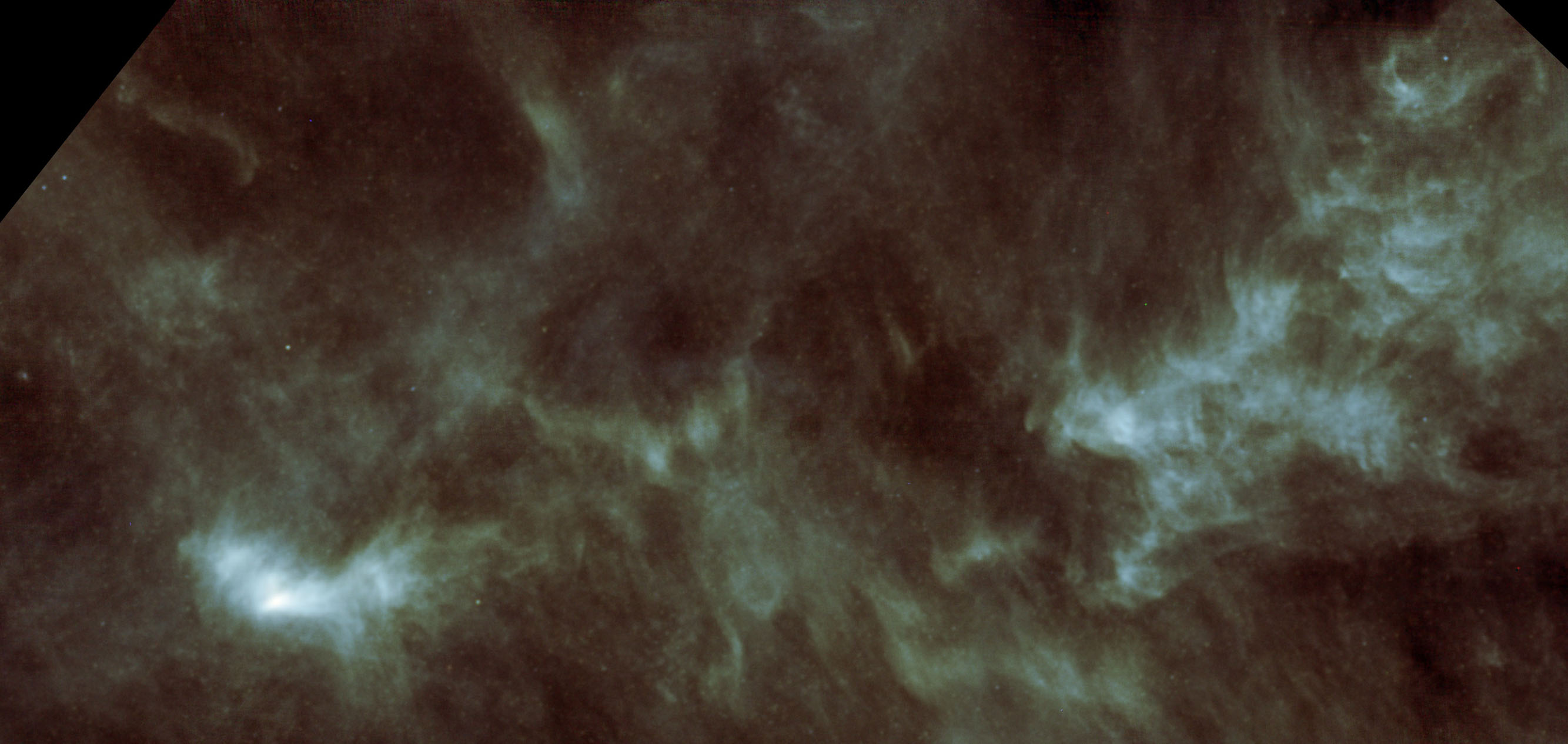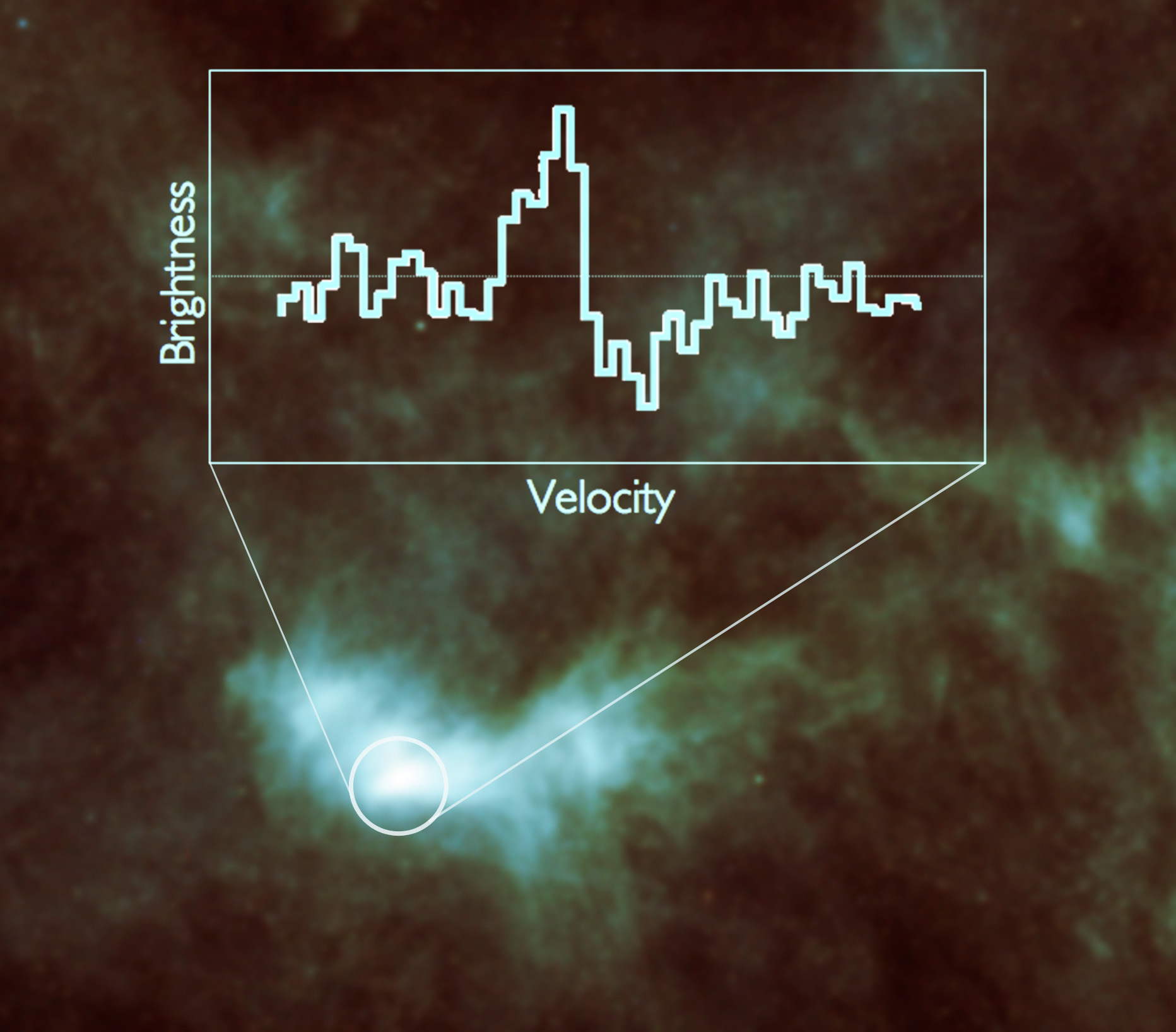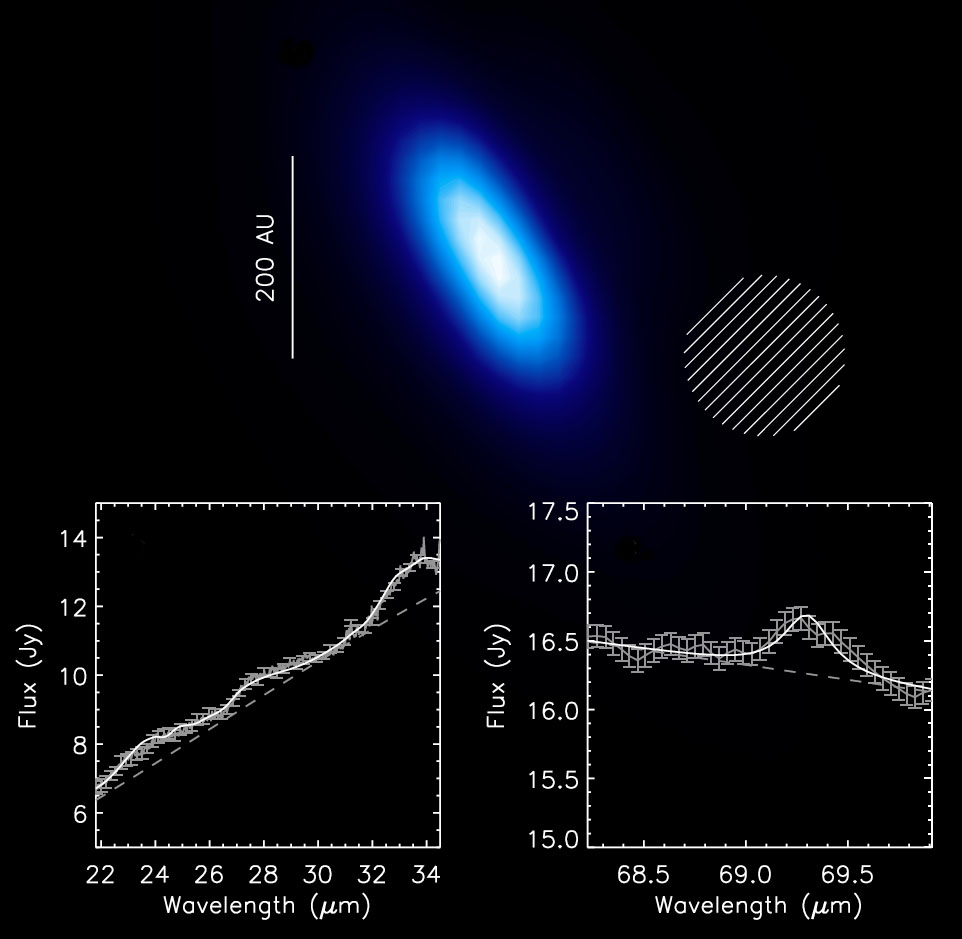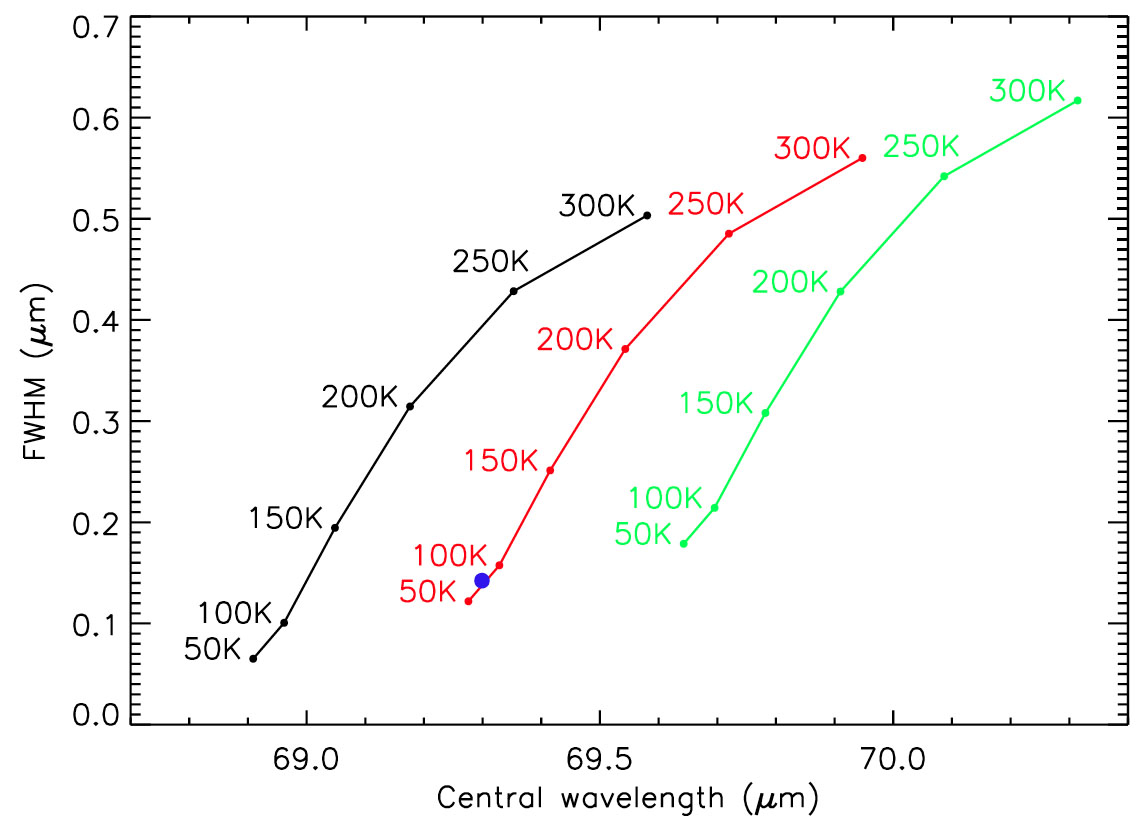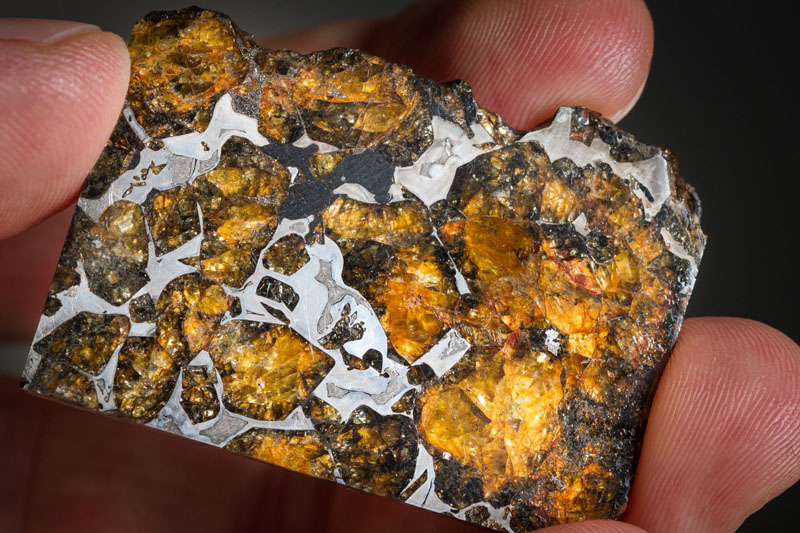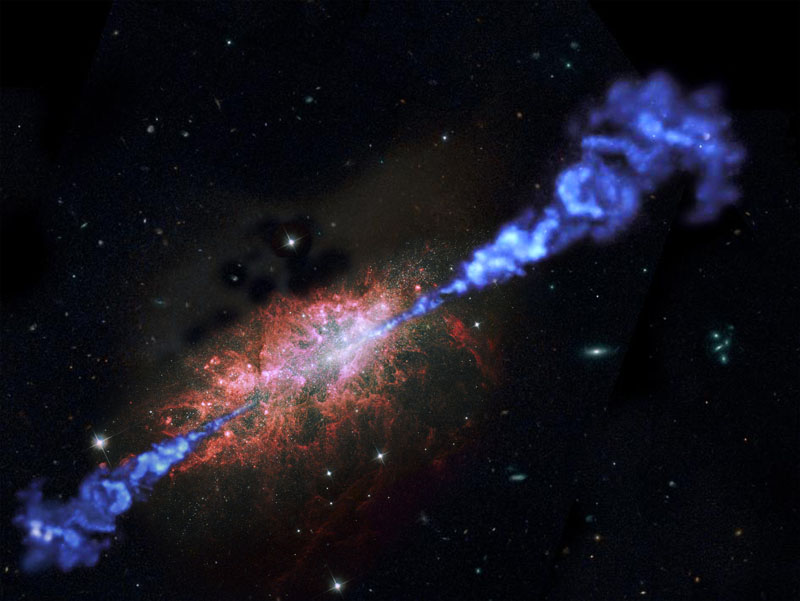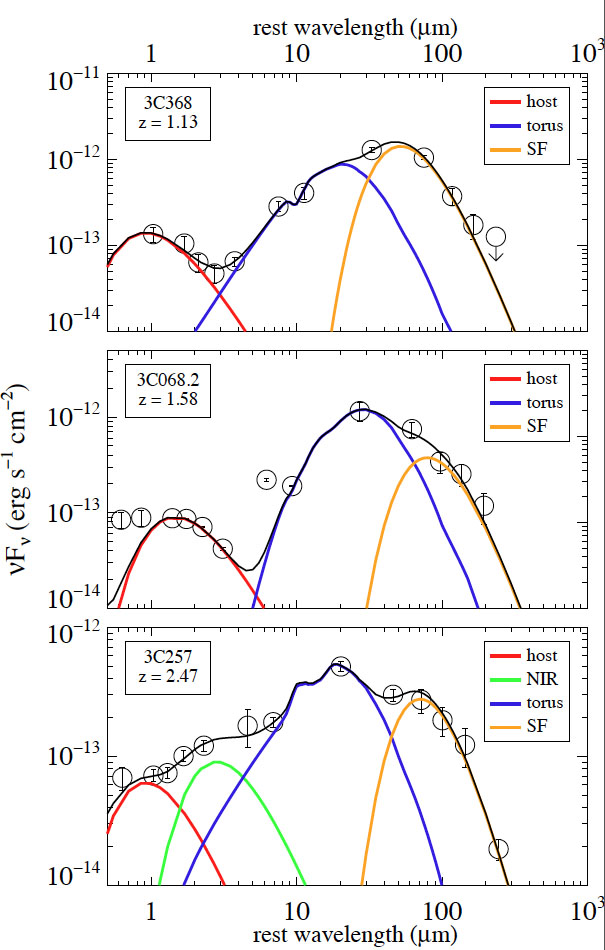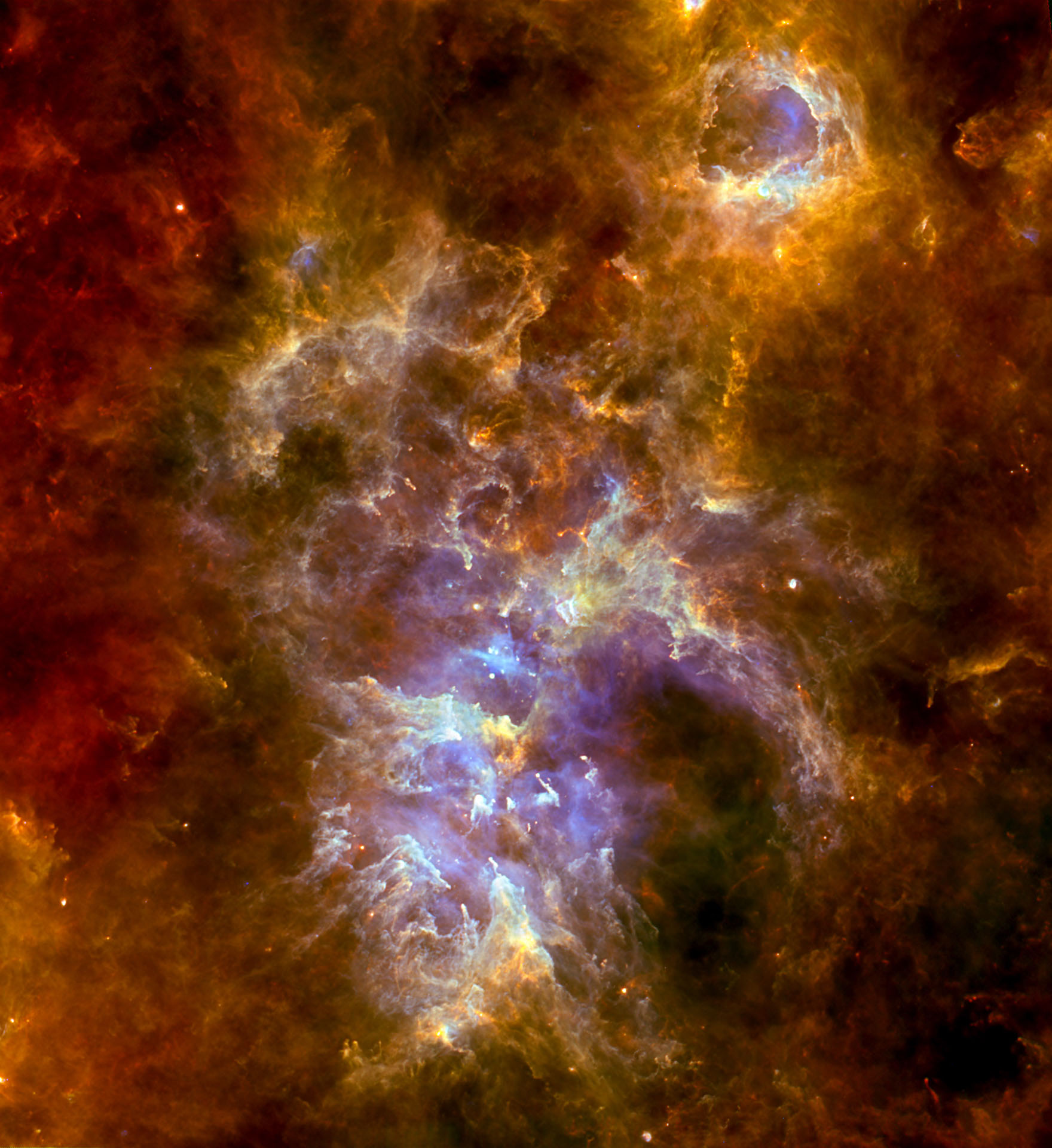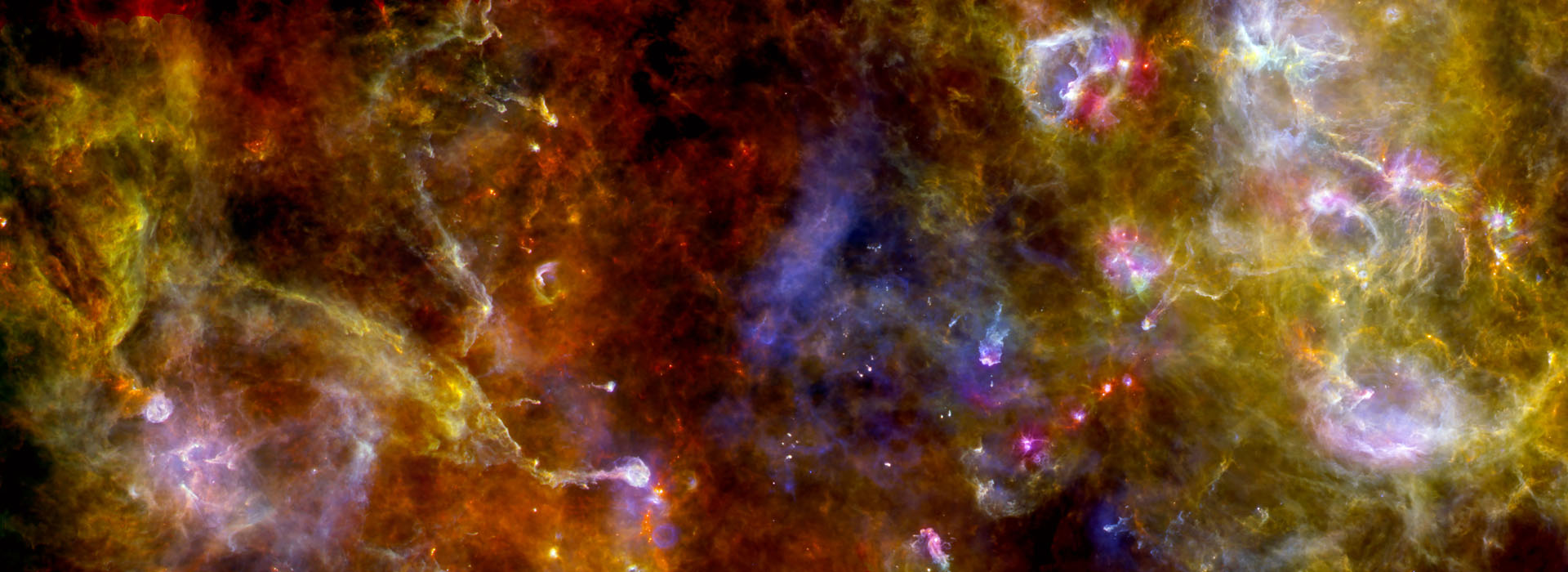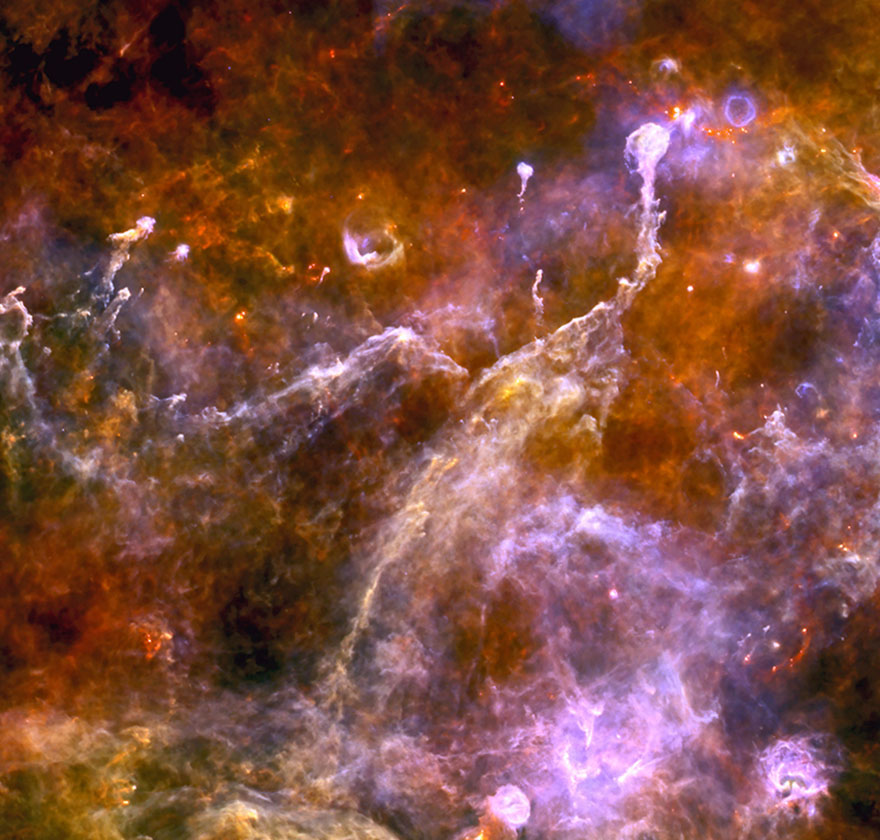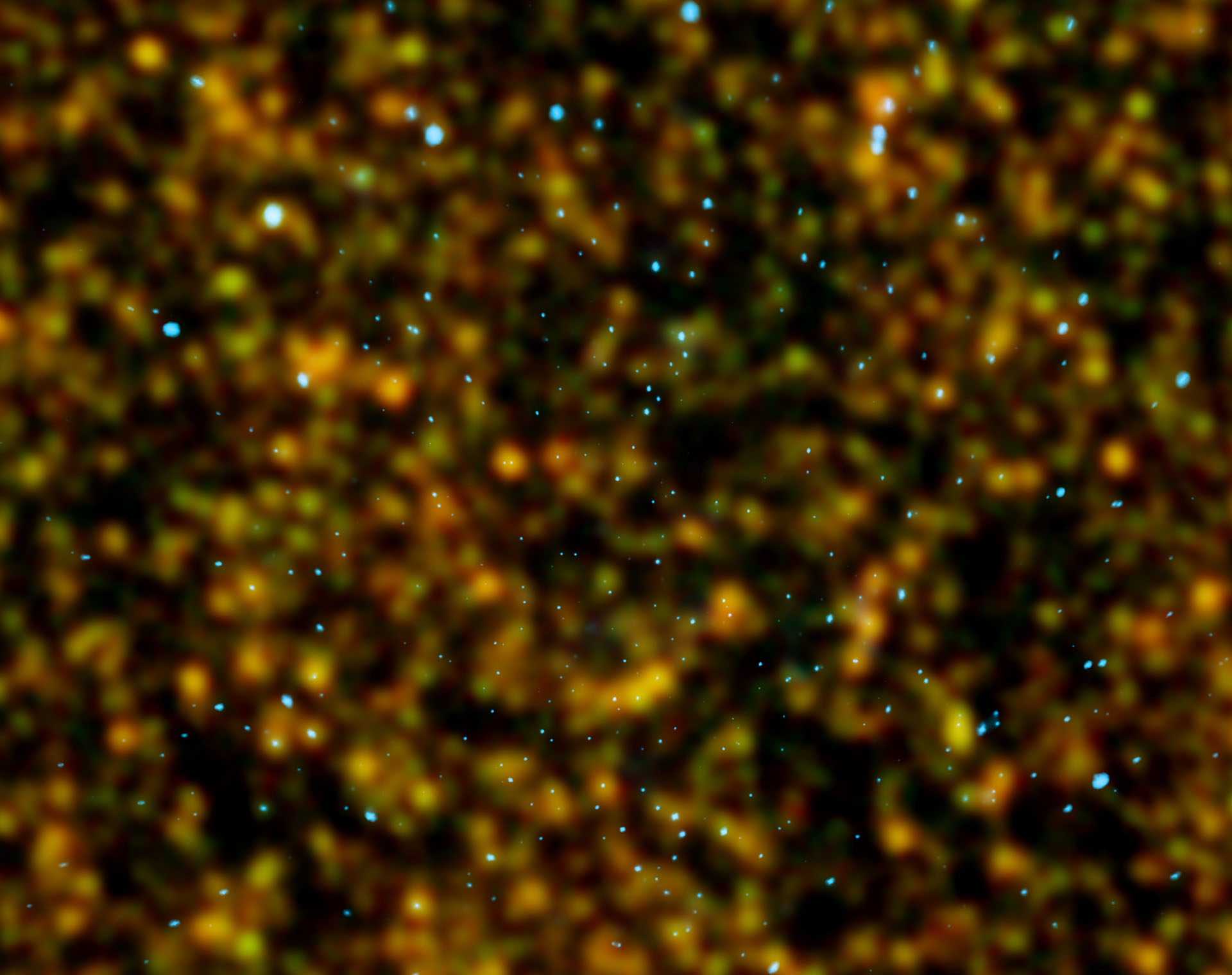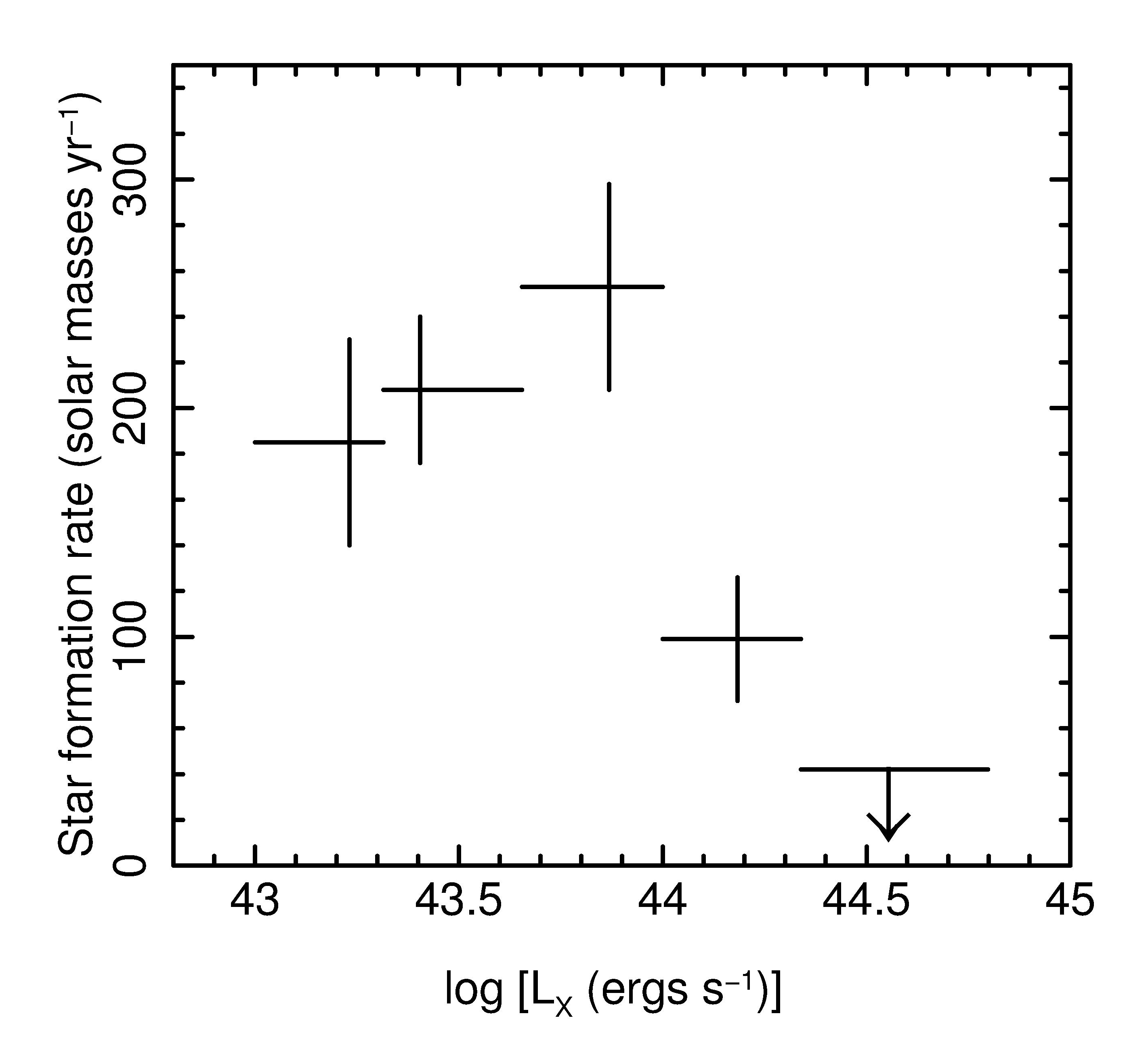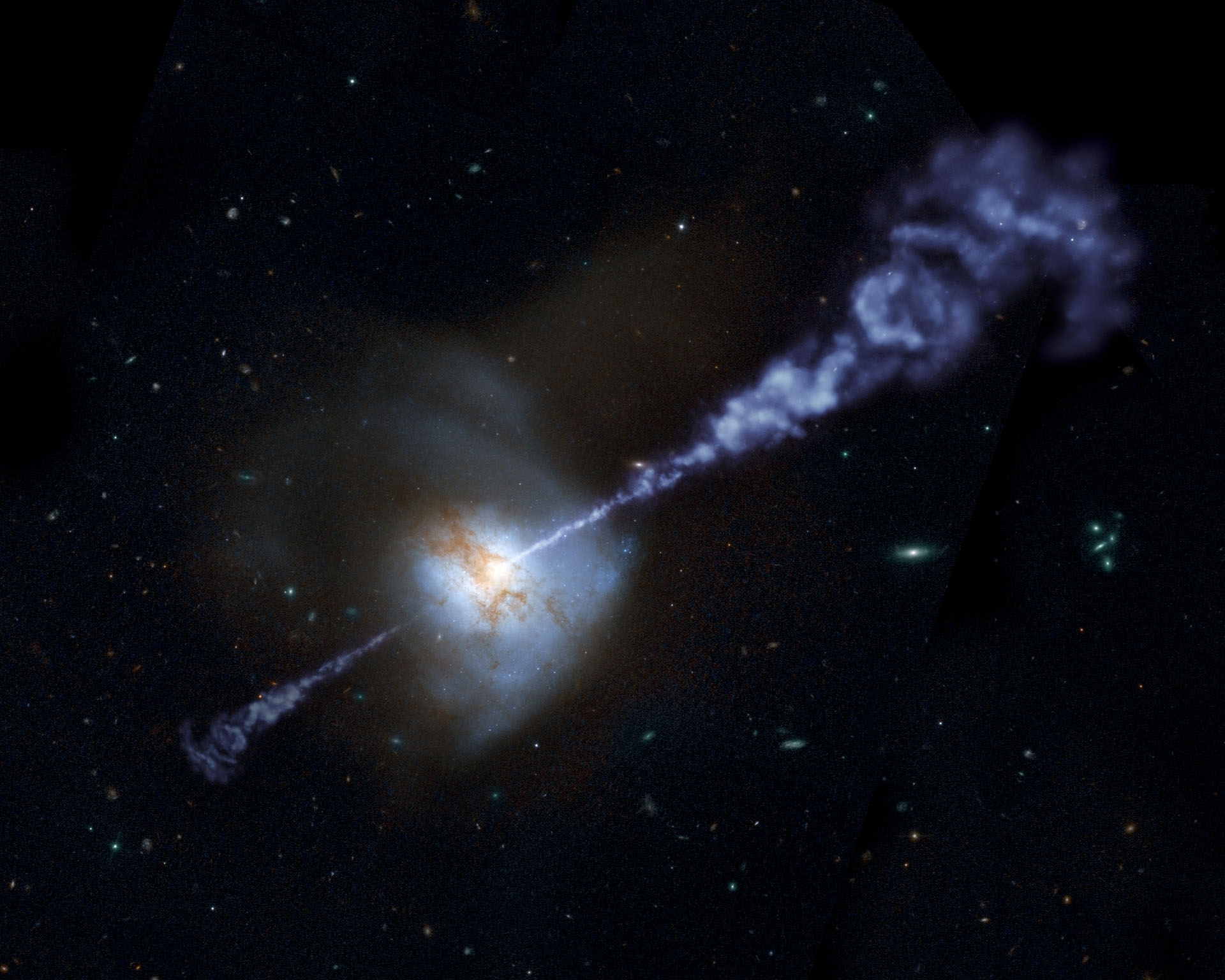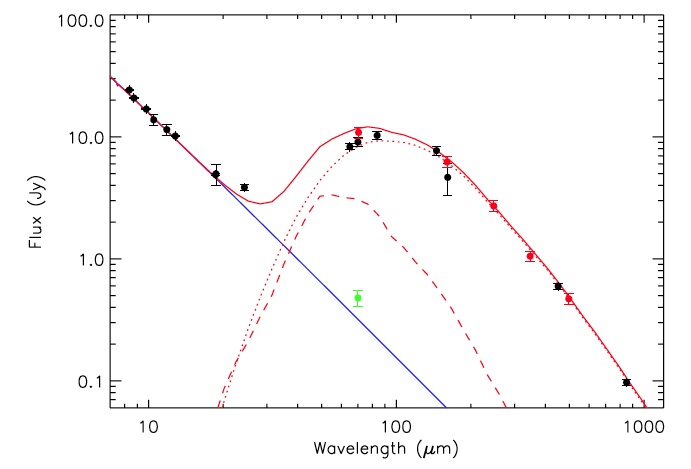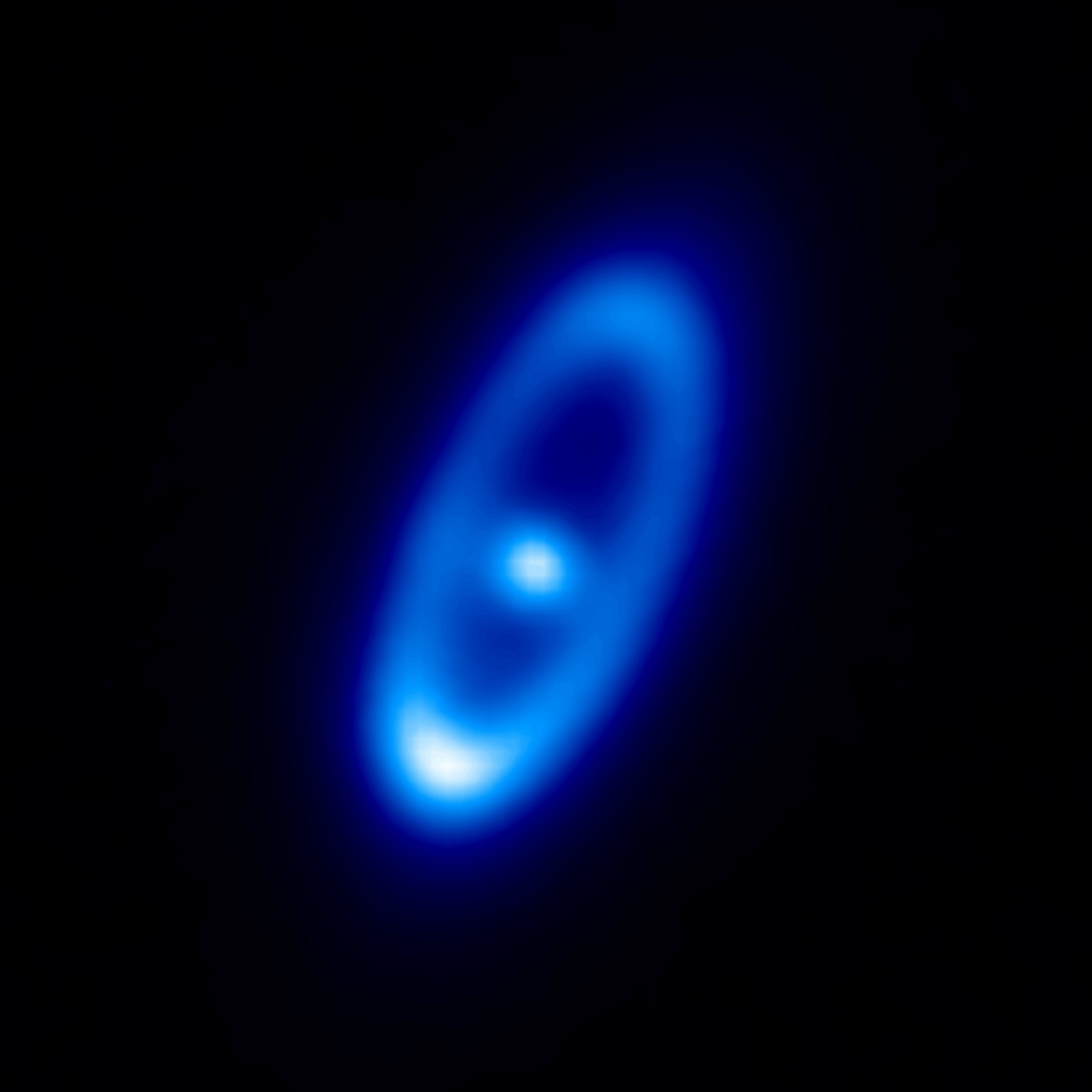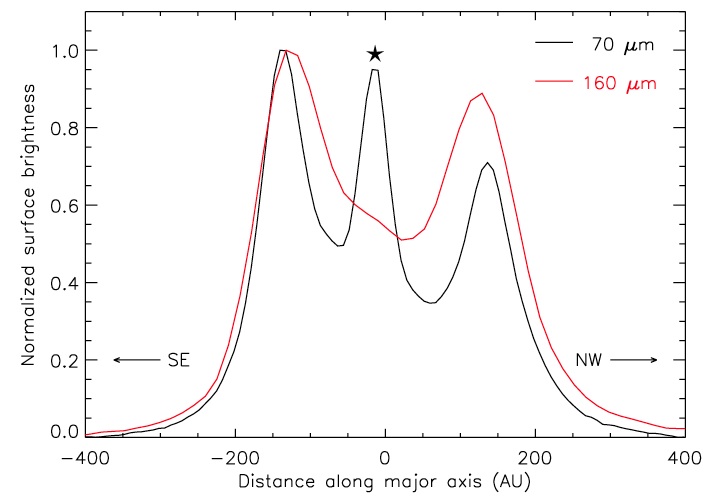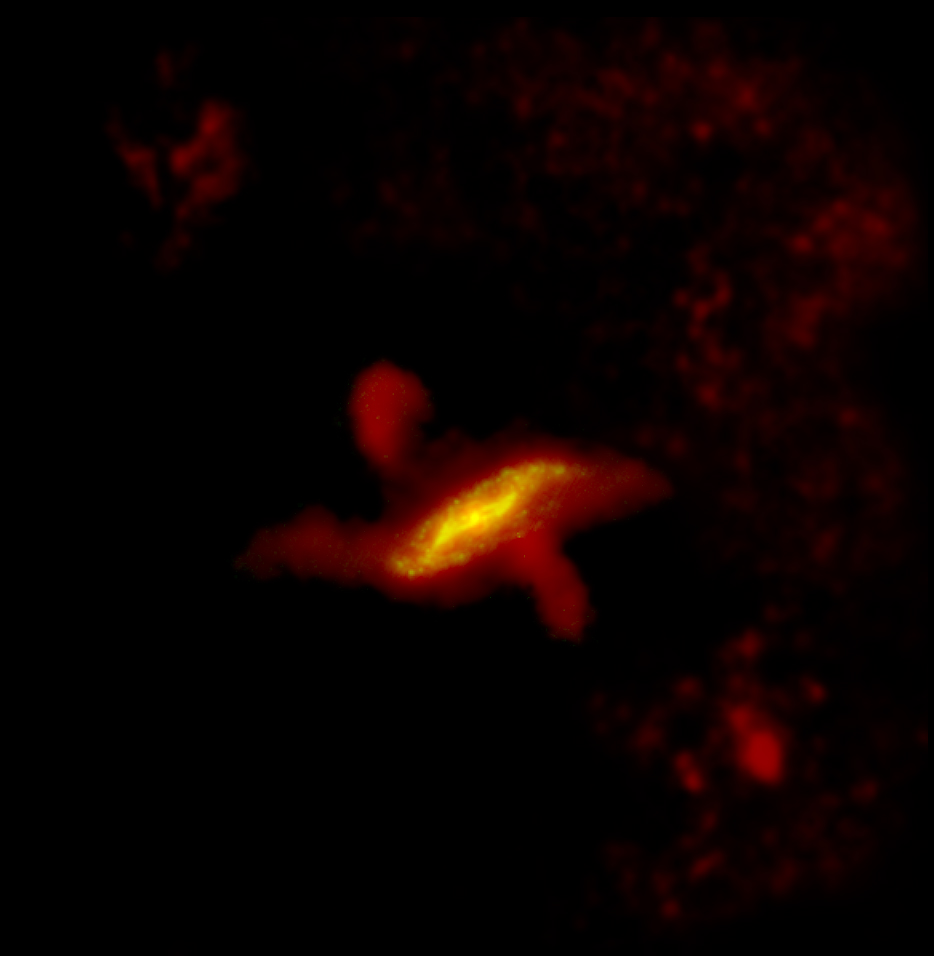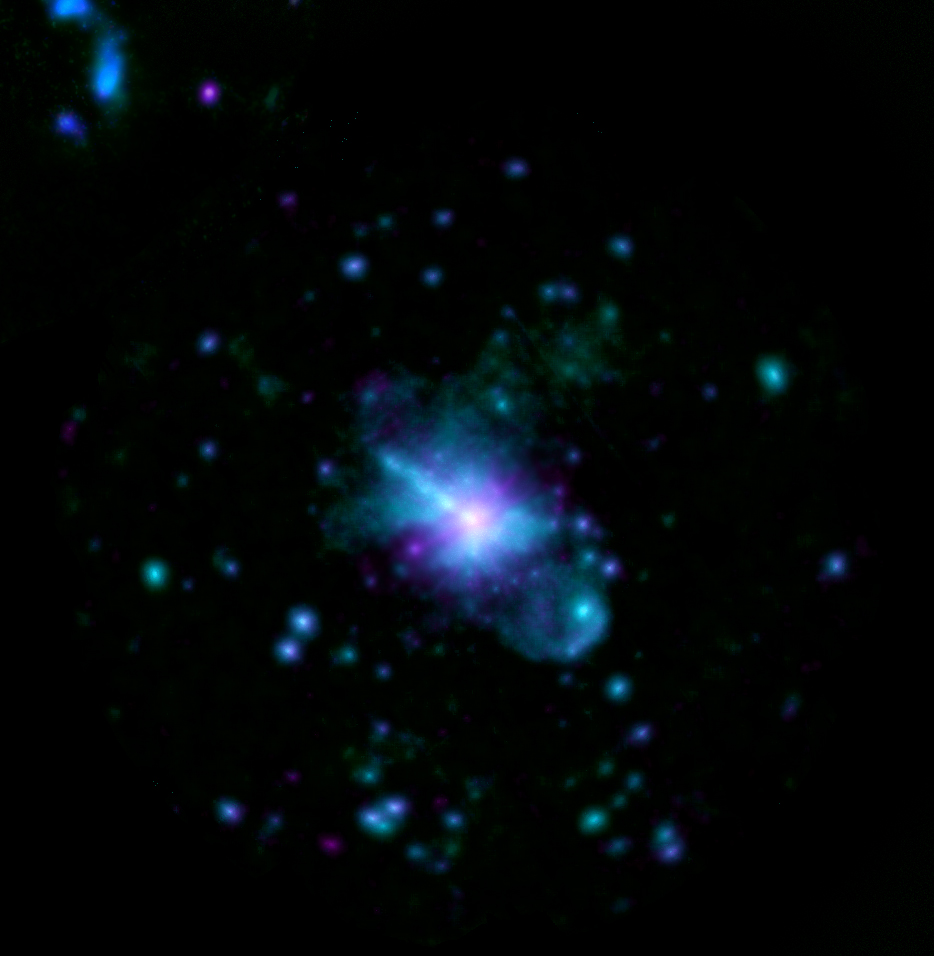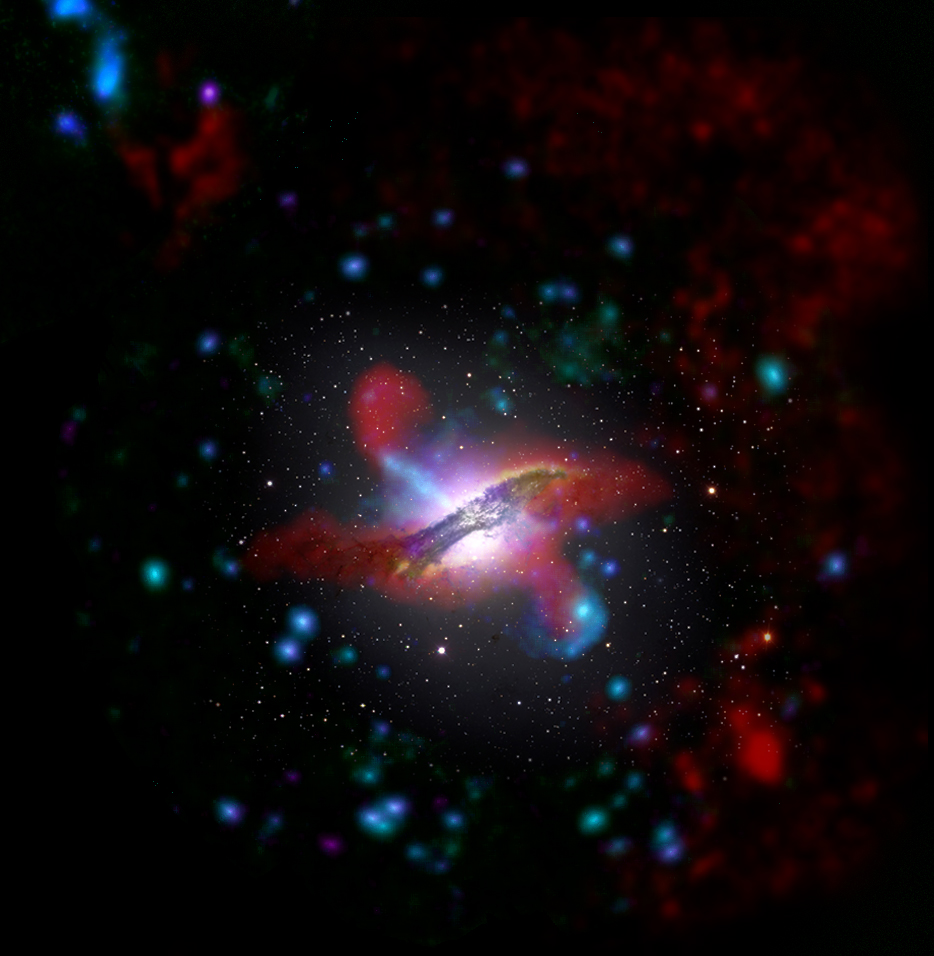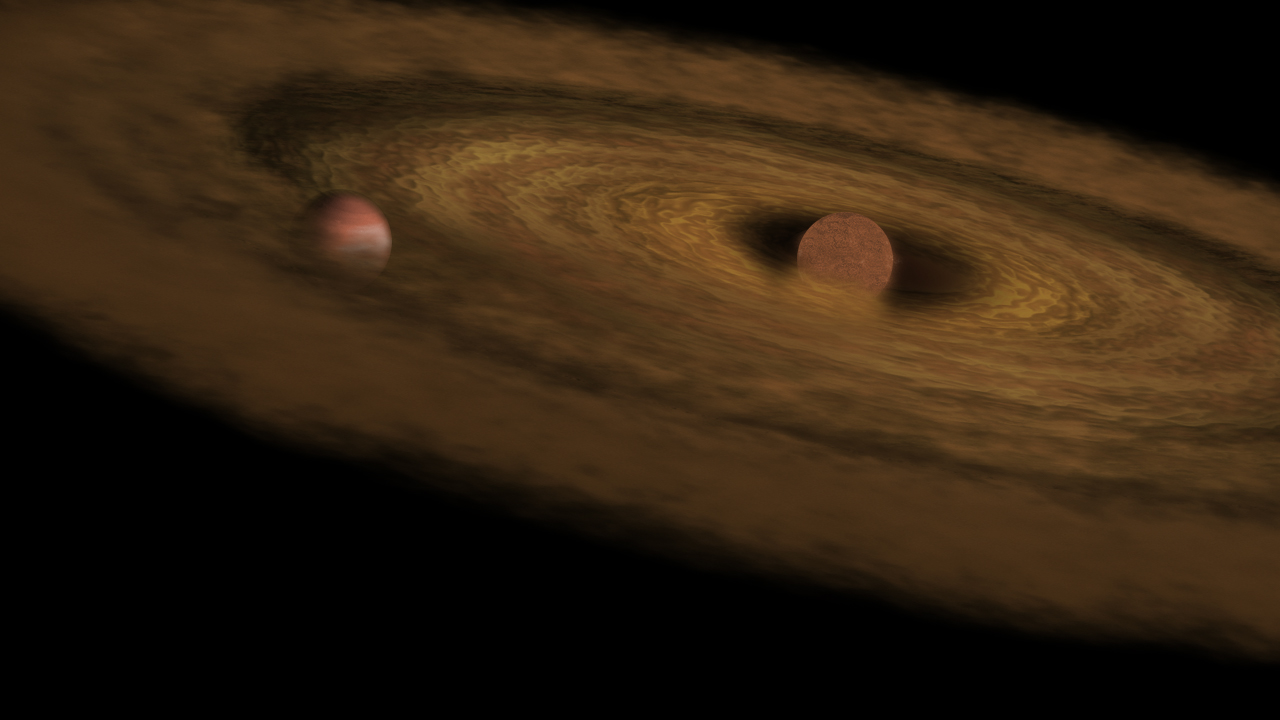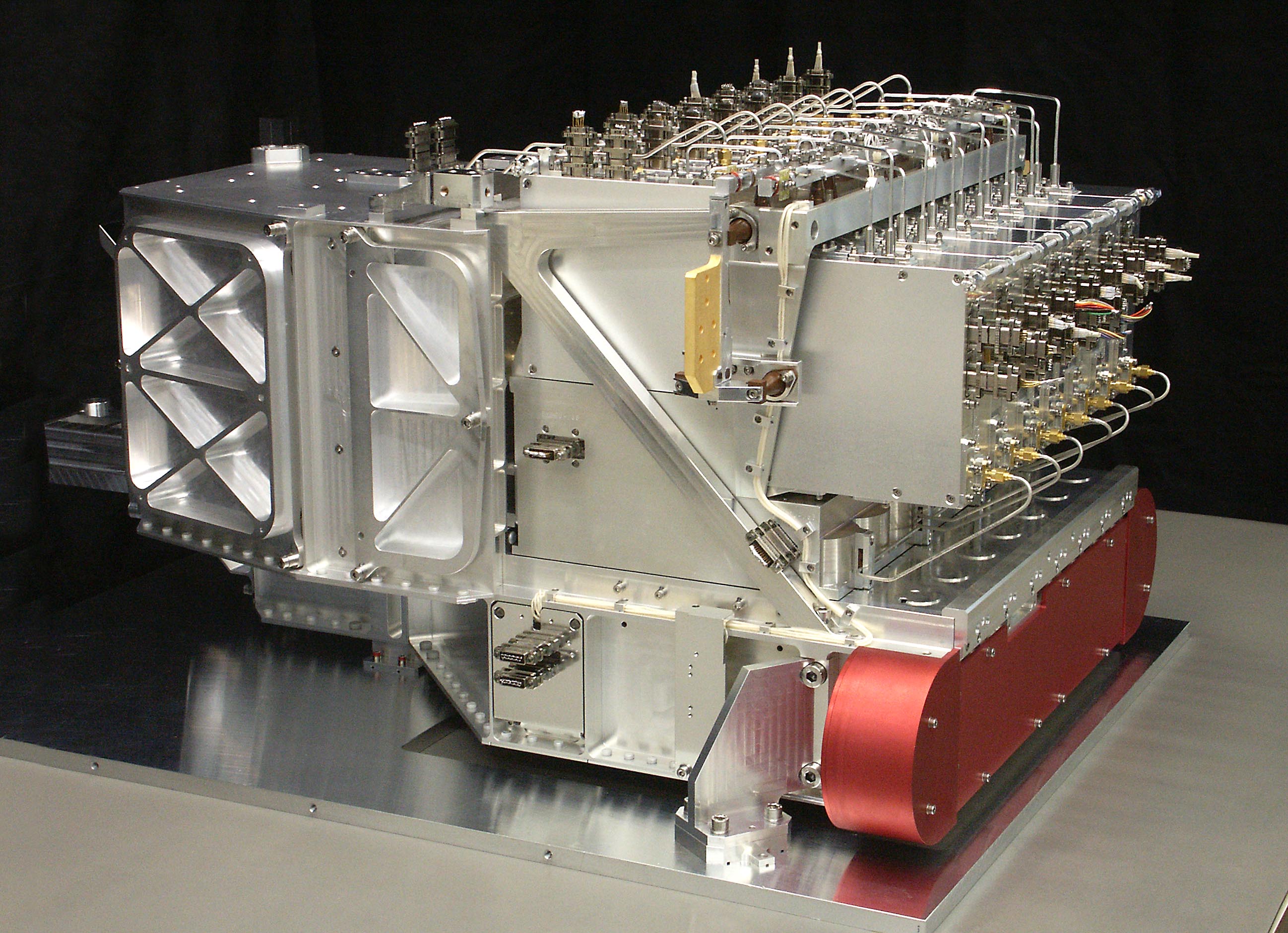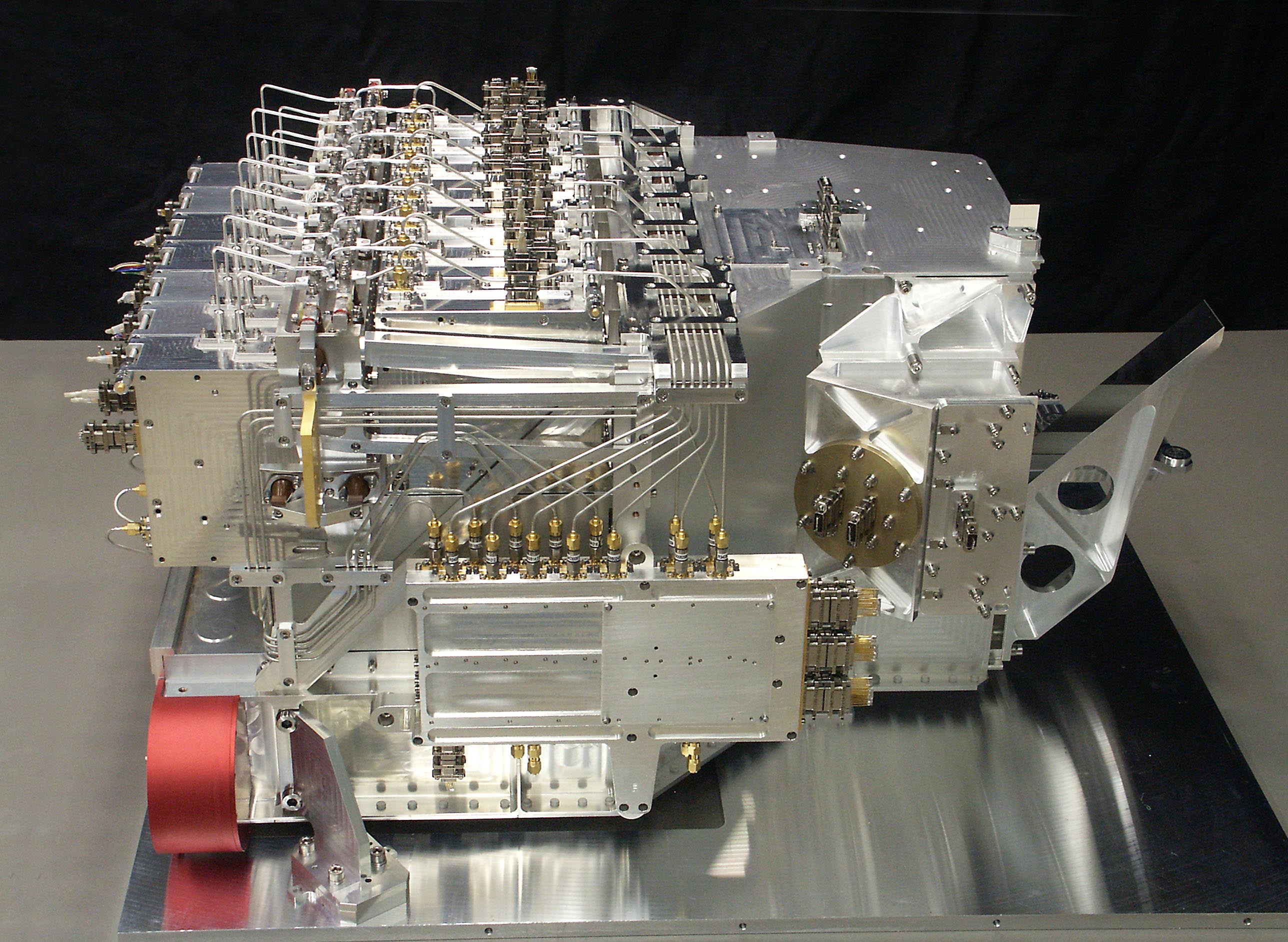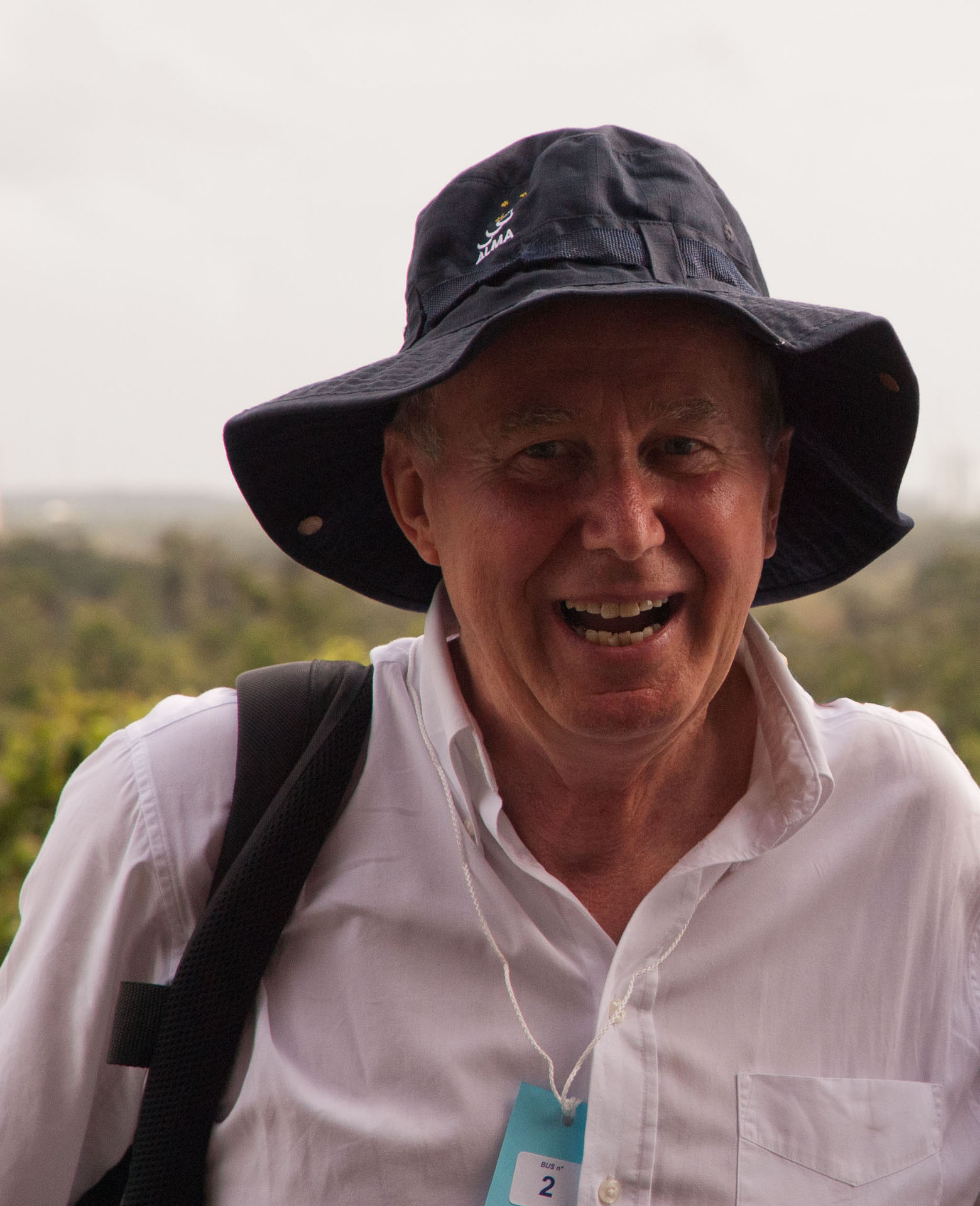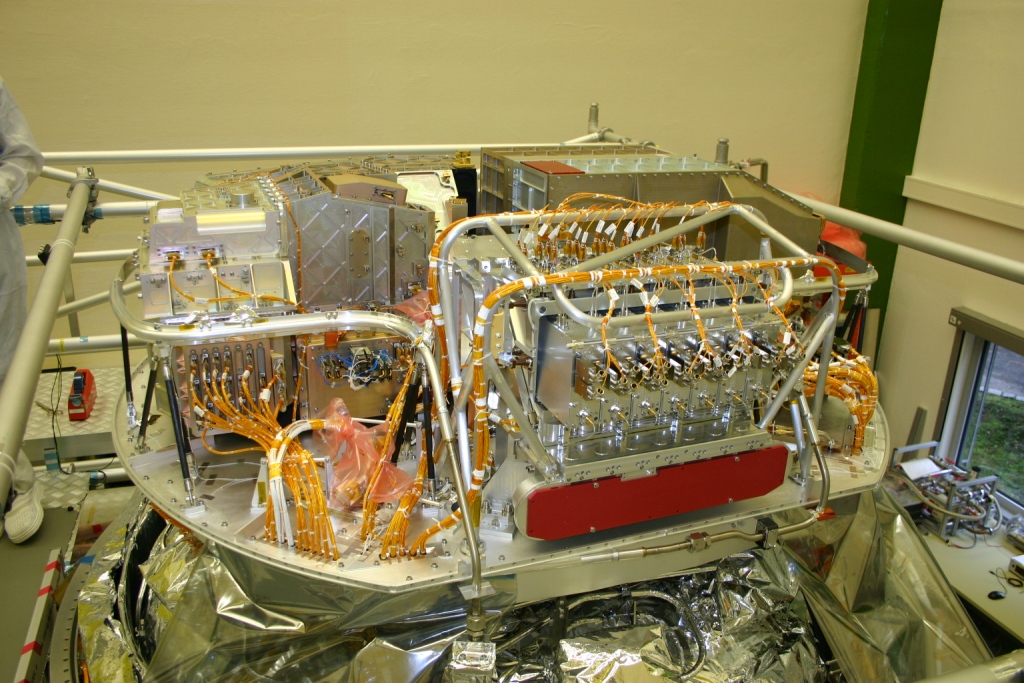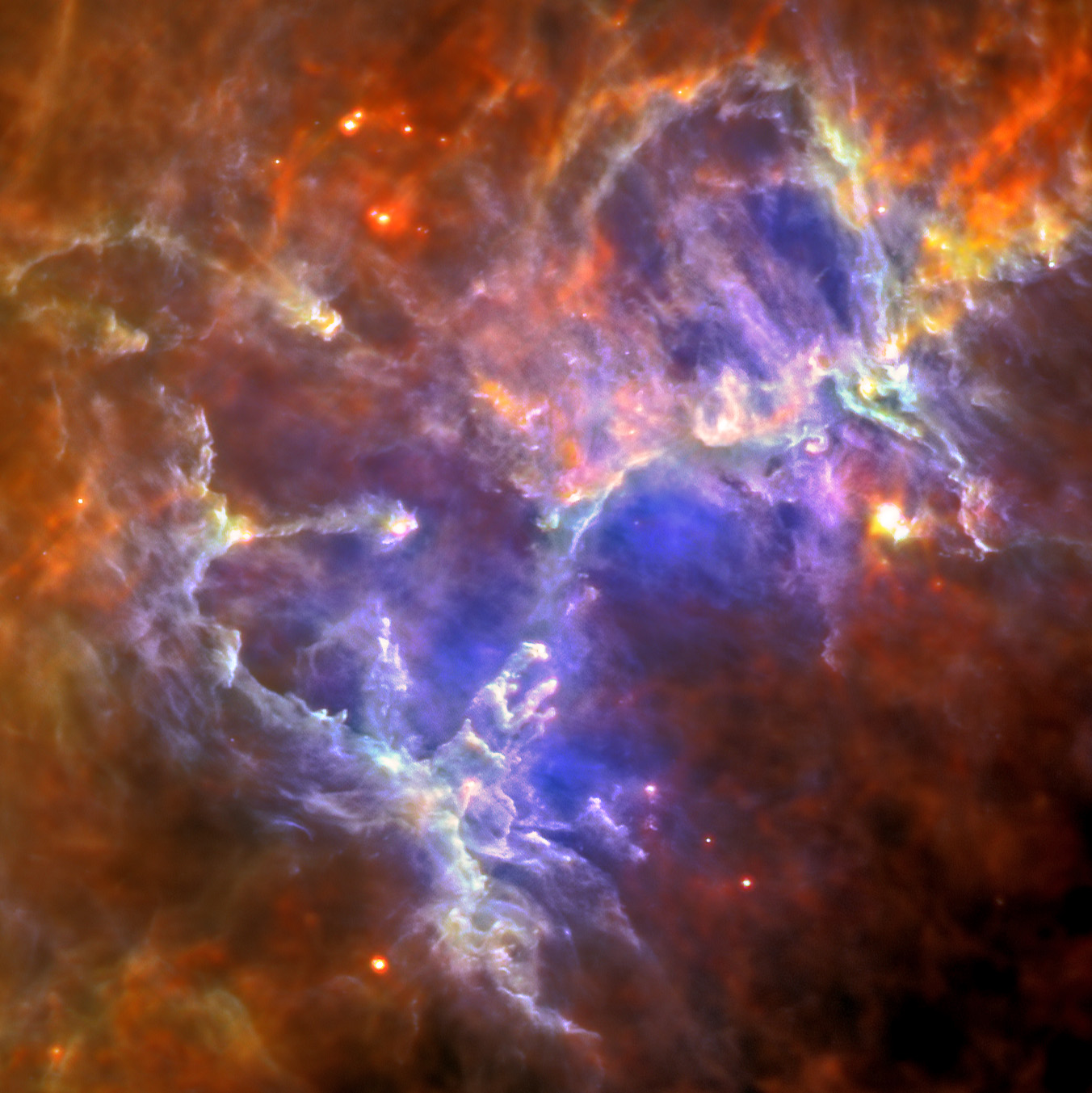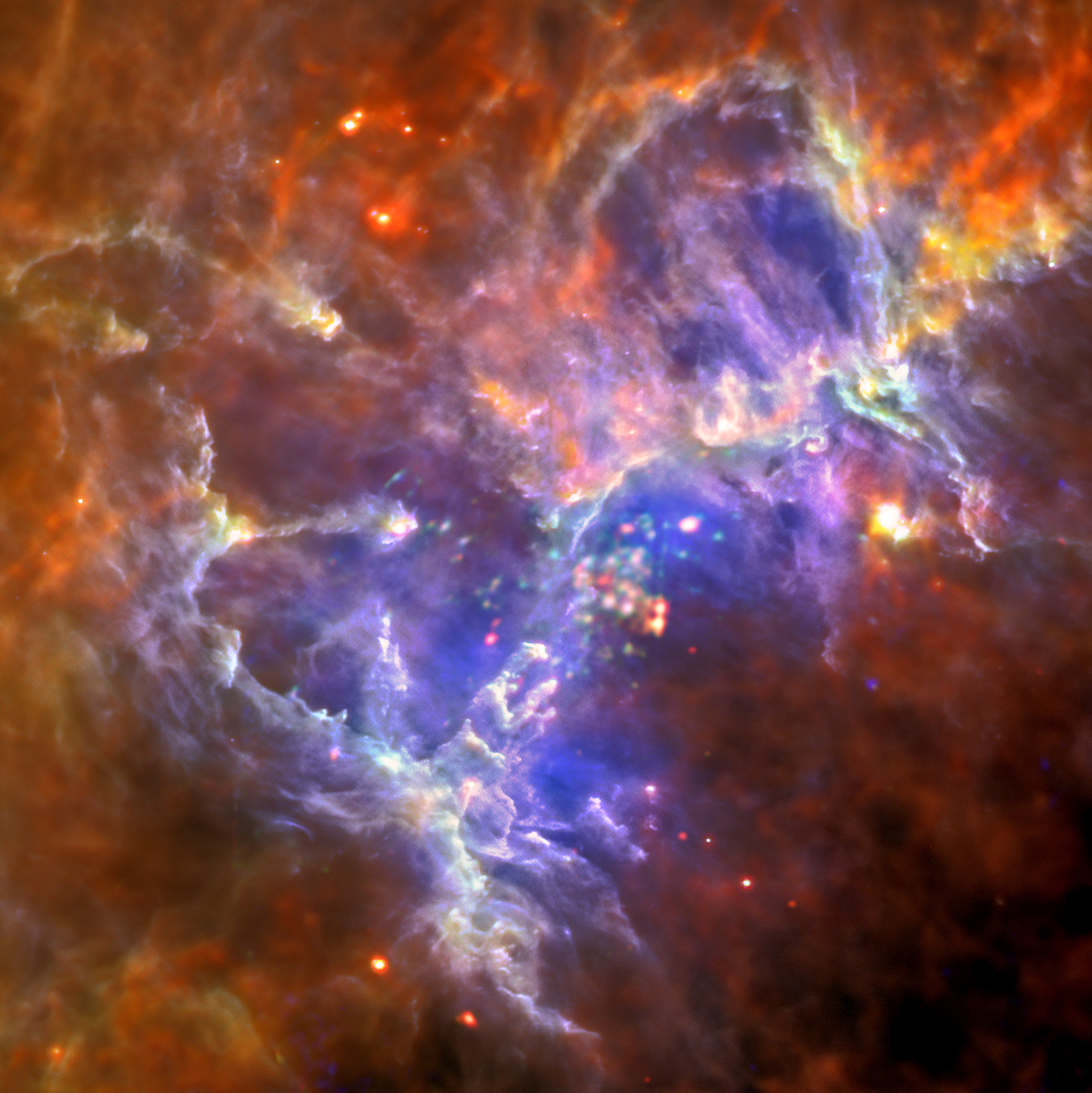Herschel Latest News - Herschel
Herschel Latest News
Status summary: Herschel was successfully launched together with Planck on 14 May 2009. Science observing started in autumn 2009 and continued until 29 April 2013, when end-of-helium took place in DTCP#1447 after successfully performing all observing scheduled for OD#1446. Herschel is now in post-operations phase until the end of 2017.
All Herschel science data are publicly available from the Herschel Science Archive. Herschel has successfully conducted ~23400 hr (~37,000 AORs) of HOTAC-approved science observations, that can be searched and listed using the Observing Log. In addition ~2600 hr (~6600 AORs) of science calibration observations and an increasing amount of "User Provided Data Products" (UPDPs) are also being served by the HSA.
The Herschel Refereed Publications Library is maintained and can be found both in the form of an ADS listing and in a searchable web interface on the Scientific Publications webpage.
2015
Herschel provides velocity-resolved [CII] map of Orion. Herschel/HIFI has obtained spatially and velocity resolved observations of the 158 µm [CII] fine structure emission line from ionised atomic carbon, C+, of a ~7.5x11.5 arcmin field (indicated in the Herschel image left above) in Orion (Goicoechea et al. 2015). The resulting data cube (or '3D view') together with ancillary data provides a new view of the iconic Trapezium region, our closest high-mass starforming region. Due to its proximity it can be studied in detail and can serve as a laboratory for understanding the conditions in starbursts, the present observations in particular serve to investigate CII emission in conditions of high UV irradiation, resembling those in starburst galaxies. For more information see the newsrelease provided by the authors which also contains captions to images and a movie, and the posting by SRON.
HCSS 13 bulk reprocessing completed. The bulk reprocessing of all available science and calibration observations in the Herschel Science Archive using HCSS 13.0 has been completed. This means all standard (pipeline) products are available processed with this version. Highlights include improved pointing reconstruction as well as improvements for specific data products as outlined in the What's new in HIPE 13: Highlights web page and the recent Helpdesk massmail.
Herschel Science Archive version 6.3 released. The Herschel Science Archive has been updated to version 6.3. Although HSA 6.3 is a minor bug fixing release we want to emphasize that as of HSA 6.1, released in February 2015, the Herschel Science Archive offers the possibility to perform more refined queries on instrument-specific observational parameters like band, wavelength, filter, map size... through the new "Instruments Advanced Query Panels". For more information on what's new in every archive release you can visit the HSA News web page.
2015 AIAA Space Systems Award conferred to the Herschel and Planck Project Team. We are happy to announce that the AIAA Space Systems Award has been conferred this year to the Herschel and Planck Project Team for outstanding scientific achievements recognized by worldwide scientific community and for the outstanding technical performances of the two satellites.
Herschel filaments galore! The identification of large-scale filaments in emission by Herschel (Wang et al. 2015) has been featured in a Space Science Portal webrelease. Extrapolating there could be close to a hundred of these very large structures in the Galaxy. This discovery has triggered an in-depth look at Herschel filament studies published in a SciTech webrelease, followed by a Space Science Image of the Week release. Above from left to right Herschel images of the massive G49, G64, and G47 structures, and on smaller scale in Taurus A, see further in the releases linked.
Herschel and Planck join forces to unravel proto-clusters. Herschel follow-up of unusually bright Planck sources show the majority (~94%) of them to be due to intense star formation in galaxies in proto-clusters (over-densities of galaxies compared to reference fields), providing literally 'new light' on a missing piece of cosmological structure formation, while a small number (~3%) are individual lensed galaxies (Planck Collaboration XXVII 2015). For more information on this discovery and figure captions see the ESA Herschel SciTech and Space Science Portal web releases, and the paper itself.
Supermassive black holes can drive galactic molecular outflows. Supermassive black hole (SMBH) accretion winds and molecular outflows are known in many galaxies. Now by combining observations by Herschel of the OH 119 um doublet line and by Suzaku in X-rays in the same galaxy, IRAS F11119+3257, it has been shown that the small-scale fast SMBH accretion winds can drive the large scale molecular outflows in this z=0.189 ULIRG. This result has been published in Nature (Tombesi et al. 2015). For more information on this discovery and figure captions see the ESA Herschel SciTech and Space Science Portal web releases, and the paper itself.
2014
Herschel discovers galaxy cluster core ablaze with star formation. In the present universe galaxy clusters cores are typically populated by massive "red and dead" galaxies. At some point in cosmic history, however, these galaxies must have formed the bulk of their stars. Now Herschel has observed a massive cluster labelled XDCP0044 at redshift z=1.58 (lookback time ~9.5 Gyr) where galaxies in the cluster core exhibit strikingly high amounts of star formation, the first time this has been seen in a massive cluster (Santos et al. 2015). For more information on this discovery and figure captions see the ESA Herschel SciTech web release.
'Star Formation Across Space and Time' symposium material posted! The Star Formation Across Space and Time symposium was held on 11-14 November 2014. In the four days 59 talks were given and 54 posters displayed by about 120 attendees. The talks and most posters have been posted on the symposium website. Thanks to everyone who participated and helped making the symposium a very enjoyable and successful event. Thank you!
Herschel may solve meteorite mystery. Chemical abundances observed in the stellar nursery OMC-2 FIR4 by Herschel/HIFI may solve a mystery regarding the chemical composition observed in some meteorites (Ceccarelli et al. 2014). Enhanced abundances of the molecular ions HCO+ and N2H+ indicate energetic particles collide with the material in the protostellar envelope. Similarly it is suspected that the young Sun emitted large fluxes of energetic particles creating short-lived radionuclei, like 10Be, whose decay products can be found in some meteorites. For more information on this discovery and figure captions see the ESA Herschel Space Science Portal and SciTech web releases.
Herschel discovers OH+ around planetary nebulae. For the first time the molecular ion OH+ has been detected around PNe by Herschel, both in PACS and SPIRE spectra (Extaluze et al. 2014; Aleman et al. 2014). It plays a crucial role in the formation of water. The discovery was unexpected because the central stars, with effective temperatures in excess of 100,000 K, produce very harsh environments. It now appears the high-energy photons may actually be the key by producing the proper physical conditions to form the OH+ molecules. For more information on this discovery and figure captions see the ESA Herschel Space Science Portal and SciTech web releases.
Herschel finds z~2 galaxy is kinematically mature. Average ('main sequence') galaxies at z~2, when the universe was about 3 Gyr old, contain more molecular gas and produce more stars, scaled to stellar mass, compared to today. This was the epoch of peak star-formation activity and galaxy assembly. Taking advantage of flux boosting provided by gravitational lensing remarkable velocity-resolved observations of the C+ line (emitted wavelength 158 µm) with Herschel/HIFI of two such galaxies have now been obtained (Rhoads et al. 2014). For one of them, S0901 (lensed optical image) it is clear that it is dominated by orderly rotational motion (left spectrum), in other words it is kinematically 'mature'. The other galaxy, the Clone (right spectrum), could be a second example. For more information on this discovery and figure captions see the ESA Herschel SciTech web release.
Heads-up: HUG Survey - deadline 30 April 2014. The Herschel Users' Group (HUG) would like to hear about the community's experience with the Herschel Science Archive (HSA). The questionnaire is anonymous and there is no way to trace your identity and connect it with your responses. Please respond by 30 April 2014 so that the HUG can discuss the results during their next meeting. Access the Survey here.
Herschel Reference Survey of dust in representative sample of nearby galaxies. Herschel has observed a sample of 323 local galaxies in order to investigate how dust emission in the 100-500 µm range correlates with other galactic properties (Cortese et al. 2014). The HRS is the largest representative sample of nearby galaxies, spanning four orders of magnitude in stellar mass, and a wide range of morphologies, cold gas contents, metallicities, and star formation activities. There is a smooth transition in the shape of the dust SED (dust absorption coefficient β with frequency) when moving from giant to dwarf galaxies. This variation is observed to be much more related to the metallicity of the ISM than to the mass or morphology of a galaxy. For more information and figure captions see the ESA Herschel Space Science Portal and SciTech web releases.
Herschel detects cold gas in nearby giant elliptical galaxies. Contrary to general belief, by performing Herschel/PACS observations in the restframe 158 µm C+ line in a sample of nearby giant elliptical galaxies, cold gas has been detected in six out of eight targets (Werner et al. 2014). However, despite the presence of the cold gas these galaxies do not form stars. It is argued this is because the jets from their central supermassive black holes heat or stir up the gas preventing it from turning into stars. For more information and figure captions see the ESA Herschel SciTech web release.
Herschel discovers water on Ceres. Herschel/HIFI observations of dwarf planet (1) Ceres in the 557 GHz ground-state water line have conclusively revealed water vapour (Küppers et al. 2014). Observations on four different occasions including repeatedly throughout a complete Ceres revolution indicate that the probable origin of the observed water are two localised sources on the surface of Ceres. This is the first unambiguous detection of water vapour around an object in the asteroid belt. For more information and figure captions see the ESA Herschel SciTech and Space Science Portal web releases.
Herschel/SPIRE Consortium awarded RAS Group Achievement Award. In its 'Ordinary Meeting' held on 10 January 2014 the Royal Astronomical Society announced that the Herschel/SPIRE Consortium will be awarded the 2014 RAS Group Achievement Award for achievement by a large consortium in astronomy. The Award will be presented in the National Astronomy Meeting to take place in Portsmouth in June 2014. http://herschel.esac.esa.int/Images above: Part of the SPIRE consortium in Cardiff in June 2013, and the SPIRE focal plane unit being integrated onto the Herschel optical bench in Astrium in April 2007. See also the RAS press release and the UK Herschel outreach webpages.
2013
Herschel stumbles on noble gas molecule 36ArH+ in the Crab Nebula. Using the Herschel/SPIRE FTS spectrometer lines from the noble-gas based molecular ion argon hydride 36ArH+ have been detected in an astronomical icon, the Crab Nebula (Barlow et al. 2013). This serendipitous discovery lends direct support to the hypothesis that the Crab Nebula is the product of a core-collapse explosion of an 8-16 solar mass star, observed by the Chinese in 1054 AD as a supernova. The detection of 36ArH+ is consistent with the observed 36Ar having been synthesised in the supernova explosion. For further information and image captions and credits see the ESA Herschel SciTech webrelease and Space in http://herschel.esac.esa.int/Images.
'The Universe Explored by Herschel' symposium material posted! The Universe Explored by Herschel symposium was held on 15-18 October 2013 to present, discuss, and take stock of the scientific results based on Herschel to date. In the four days 114 talks were given and about 200 posters displayed by over 350 attendees. We want to collect all presentations (talks and posters) for posting on the symposium website; the talks are basically there, but many more posters are still needed! We also want to thank everyone who participated and helped making the symposium a very successful event. Thank you!
Herschel contributes to first detection of CMB 'B-modes'. By combining data from the South Pole Telescope polarisation-sensitive receiver SPTpol with Herschel/SPIRE data the first detection of CMB 'B-modes' has been achieved (Hanson et al. 2013). The CMB 'B-modes' detected are due to gravitational lensing of the CMB by (primarily) dark matter, whose distribution can be traced by the distribution of galaxies on the sky. The SPIRE data were used to map the gravitational lensing material along the line of sight, then correlations were searched for between that pattern and the polarised light coming from the CMB, as measured by SPTpol. For further information and the image caption see the ESA Herschel SciTech and Space Science Portal web releases.
'The Universe Explored by Herschel' symposium final programme posted. The final oral programme and the two poster sessions have been posted. There are only very minor updates to the oral programme, which contains 108 talks (28 plenary and 80 parallel) plus formal welcomes and five wrap-up talks. The posters have been divided into two sequential poster sessions with a total of 224 posters. A 'Herschel desk' will be manned during coffee breaks and poster sessions, with a 'goodies desk' and coffee nearby. There are currently ~340 registered participants, it is still possible to register to attend, the venue can accommodate maximum 400 people. For all information consult the meeting website. Welcome to the symposium!
'The Universe Explored by Herschel' symposium preliminary programme posted. The SOC has enjoyed the massive amount of abstracts submitted and has constructed the preliminary oral programme and compiled the preliminary list of posters. Everyone intending to attend the symposium is encouraged to register, the venue can accommodate maximum 400 people. Note that for all presenters (oral and poster) it is compulsory to register latest by 29 August 2013.
End of Herschel spacecraft operations. A crowd of people representing ESA, the three instrument teams, and industry assembled in the main control room in ESOC, while Herschel spacecraft operations were terminated on 17 June 2013. At ~12:25 UT, as its thrusters had run out of hydrazine, the last telecommand was sent to Herschel by manual commanding, causing it to turn itself off. In the pictures above (left) Göran Pilbratt and Micha Schmidt look over the shoulders of one of the spacecraft controllers, watching the pressure in the thruster tanks gradually go down, and (right) Martin "Terminator" Kessler smiles as he prepares to send the very last telecommand. For more information see the ESOC web release, and on a YouTube movie.
Herschel discovers molecular gas not traced by CO in the Milky Way. By performing C+ (158 µm) velocity-resolved observations at about 500 line-of-sights using Herschel/HIFI (left figure), molecular gas not traced by CO emission ("CO-dark" gas) has been unveiled and mapped in the Milky Way (Pineda et al. 2013 ). The result is a major revision of the global distribution of molecular gas, the fraction of CO-dark gas increases from less than 20% in the inner Galaxy to about 80% at a galactocentric radius of 10 kpc (middle figure). On average, CO-dark molecular gas accounts for 30% of the molecular mass of the Milky Way, and outside of the Sun's distance from the Galactic Centre the CO-dark gas is dominant (right figure). For more information see the ESA Herschel SciTech web release.
Great interest for the "The Universe Explored by Herschel" symposium! The deadline for abstract submission for the "The Universe Explored by Herschel" is just behind us. The response is overwhelming! The preliminary number (ahead of consolidation of possible duplicates etc) is a total of 358 abstracts. This can be divided into 280 requests for oral and 78 requests for poster presentations. Another division is along the five sessions: (i) galaxy formation & evolution 104, (ii) large scale gal structure & nearby galaxies 54, (iii) water, astrochemistry & ISM physics 84, (iv) star & planetary system formation & evolution 94, and (v) the solar system & its evolution 22 abstracts. All information about the meeting on can be found the LOC web site, which includes the calendar of events.
Herschel suggests origin of massive 'red and dead' galaxies. A rare encounter between two large gas-rich galaxies caught in the act by Herschel (Fu et al. 2013) suggests a solution to an outstanding problem: how did massive 'red and dead' galaxies form in the early Universe? The galaxy pair was initially identified in HerMES data as a single bright source, named HXMM01. Follow-up observations showed that it is in fact two galaxies linked by bridge of gas, indicating that they are merging which has sparked a star-formation frenzy of roughly 2000 solar masses per year. The end result will be a massive 'red and dead' elliptical galaxy. The images above show the HerMES field (left), a composite (middle), and a visible & radio image of the merging galaxies (right). For more information and image captions see the ESA Herschel Space Science Portal and SciTech web releases.
Herschel detects warm gas and complex chemistry towards Sgr A*. A supermassive (about 4 million solar masses) black hole lurks in the Galactic Centre, in the direction towards Sgr A*. Although it is currently "quiet", at a distance of ~8 kpc it is hundreds of times closer than any known active supermassive black hole. Herschel spectral maps of the region covering ~52-671 µm have now been obtained (Goicoechea et al. 2013), resolving emission from within 1 pc of the black hole. The emission is dominated by atomic fine structure lines and high-J CO lines, indicating hot molecular gas that may be infalling towards the black hole. http://herschel.esac.esa.int/Images above: an artist's illustration of the region around the Galactic Centre (left) and a spectrum towards the Galactic Centre (right). For more information and the full image captions see the ESA Herschel Space Science Portal and SciTech web releases.
Herschel has run dry! In the afternoon today (29 April 2013) Herschel ran out of helium! To declare end-of-helium (EoHe) a number of key temperature sensor upper limits had been defined, and with two of them attained, EoHe had formally been reached. Although Herschel is out of contact with the ground for 21 out of 24 hours, it chose to reach EoHe while in contact and increasing temperatures could be followed in real time during the DTCP. The cryogenic unit displayed rising temperatures in the helium tank, violating upper limit conditions on one key parameter today at 14:49:23 (UTC), with a second parameter confirming this at 15:20:01 (UTC), thus EoHe was declared. For more information see the ESA Press Release, the ESA Space Science Portal and the SciTech web releases.
Herschel links stratospheric water in Jupiter to comet SL9 impacts. In July 1994 at least 21 discernible fragments of comet Shoemaker-Levy 9 impacted on Jupiter. Water vapour observed in Jupiter by Herschel is now linked to these impacts (Cavalié et al. 2013). PACS mapping provides the water extent over the planetary disk, while HIFI provides the vertical (pressure) profile. The observed water is located high up in the stratosphere with a clear asymmetry between the hemispheres, indicating an external isolated event as the origin. http://herschel.esac.esa.int/Images above: Hubble (left) and near-infrared U Hawaii (middle) images of impact sites, and Herschel water extent projected onto the planetary disk (right). For more information, images, and captions see the ESA Herschel Space Science Portal and SciTech web releases.
Herschel discovers a massively star forming galaxy at z=6.34. A massively star forming galaxy designated HFLS3 has been discovered by Herschel (Riechers et al. 2013). Being just one of many in one of the HerMES blank survey fields, it was selected for follow-up observations because its SPIRE fluxes increase with wavelength, thus being potentially at high redshift. The follow-up observations have provided an unambiguous redshift of 6.34, and with an inferred star formation rate in the range 1000-5000 (depending on the adopted IMF) solar masses per year at a lookback time of over 13 Gyr, it challenges galaxy formation theories. http://herschel.esac.esa.int/Images above: the Hermes field (left), a multi-wavelength zoom-in (middle), and an artist's impression (right). For more information and the full image captions see the ESA Herschel Space Science Portal and SciTech web releases, as well as the Caltech, UK Herschel outreach, ICL, CNRS (in French), IAC (in Spanish), and IRAM web releases.
Subgiant star with resolved debris disk and planet. Herschel/PACS observations have spatially resolved the emission from a debris disk (Bonsor et al. 2013) around the star kappa Coronae Borealis (κ CrB). This is a K-type subgiant star, an ex A-type star that has evolved away from the main sequence to the base of the giant branch. Interestingly, κ CrB has both at least one planet and a debris disk that has thus survived the entire main sequence phase of this approximately 2.5 Gyr old star. The image above shows the debris disk at 100 µm, the star itself is not visible. For more information and the full image caption see the ESA Herschel Space Science Portal and SciTech web releases.
Massive star formation in the W3 Giant Molecular Cloud (GMC). Spectacular Herschel imaging of the W3 GMC provides new clues to how massive stars form (Rivera-Ingraham et al. 2013). For a long time the formation of massive stars (with eight solar masses or more) has presented a conundrum, as they form they make mass accretion gradually more difficult, eventually stopping further growth. Now Herschel observations hint of a way around the problem, if the formation takes place in favourable surroundings the problem can be alleviated, which is suspected to happen in W3. In the pictures above a part of the W3 GMC as imaged by Herschel in a 70, 160, and 250 µm composite. For more information and the full image captions see the ESA Herschel Space Science Portal and SciTech web releases, as well as that of U Toronto.
Herschel enables discovery of young protostars in Orion. Herschel/PACS imaging of an area in Orion, previously imaged by Spitzer, has led to a serendipitous discovery of young protostars (Stutz et al. 2013). Herschel revealed sources not present in shorter wavelength Spitzer imaging, thus cool objects. Follow-up by APEX/SABOCA 350 µm photometry has led to a list of 15 reliably identified new protostars, possibly the youngest yet observed. For more information with detailed captions and credits to the images above, see the MPIA and NASA newsreleases. The images show the reflection nebula M78 (NGC 2068) in Orion, left image left part a Spitzer/MIPS, Herschel/PACS, and APEX/SABOCA 24/160/350 µm composite and right part a Spitzer/IRAC and MIPS 24 µm composite, the right image shows some of the protostars and their locations.
Herschel targets galactic black-hole jet. Herschel has provided the first view of GX 339-4 at far-infrared wavelengths (Corbel et al. 2013). GX 339-4 is a binary system believed to harbour a >7 solar mass black hole and a low mass companion. Herschel data allows to probe the jets down to their base, where the far-infrared emission originates, allowing a better understanding of black-hole jets and of the physical processes that take place very close to a black hole. Above (left) artist's impression of the system, and (right) two epochs (25 Feb and 6 Mar 2012) at 70 µm showing strong variability. For additional information see the ESA Herschel SciTech web release.
Herschel about to run out of helium. The Herschel cryostat was filled up and superfluid helium was produced in Kourou in April 2009. A final helium top-up was done just a day before the 14 May 2009 launch. In July 2009, only two months after launch when Herschel had thermalised in space, the "In-Orbit Commissioning Review" took place. A lifetime prediction based on the thermal mathematical model and measured inflight temperatures was provided by industry. It predicted end-of-helium end of February 2013, but with an error bar of more than half a year. Since autumn 2011 we mainly rely on analysis (pioneered by the PACS ICC) of the helium temperature increase caused by the heat dumped by the PACS and SPIRE cryo-cooler recyclings to estimate the remaining amount of helium. Figures above, observed temperature increase as function of time (T101 and T102 are two different temperature sensors), and fits of helium mass estimates since since OD#090 and for the last 50 recyclings. The predictions for end-of-helium are stable (but are possibly affected by unquantified systematic errors) and indicate Herschel will run out of helium in the second half of March 2013. For additional information see the ESA Herschel Space Science Portal and SciTech web releases.
A cool Herschel discovery. The visible "surface" of the sun is called the photosphere and has a temperature of about 5800 K. In an eclipse, a red circle around the outside of the sun can sometimes be seen, this is the chromosphere, with outside it the very hot corona. The coolest layer of the sun is the lower chromosphere at around 4100 K, then temperature increases with "altitude". A similar temperature minimum has never been observed in another star. Until now! Herschel has detected the temperature minimum in sun's twin alpha Centauri A (Liseau et al. 2013). For more information see the ESA Herschel Space Science Portal web release.
Herschel, massive black holes, and star formation. The possible feedback between active galactic nucleii driven by massive black holes and intense star formation on galactic scales is the subject of a number of Herschel observing programmes. Ancillary data such as X-ray (Page et al. 2012) and radio (Barthel et al. 2012) data, numerical simulations, as well as large datasets (Harrison et al. 2012) are all important ingredients, as outlined in the ESA Herschel SciTech Black holes and star formation: a Herschel perspective web release. In the pictures above: The COSMOS field (left) and average star formation rates at given redshift bins are plotted against AGN activity in three fields (right). See also previous news releases Do active black holes quench massive star formation?, and Powerful black holes quench massive star formation, as well as Herschel observes molecular gas being swept away on galactic scales.
Taking HIFI to the limit. The Herschel heterodyne spectrometer HIFI covers the vast spectral range 480-1250 plus 1410-1910 GHz. It does this by employing 7 mixer bands (1-7) and 14 local oscillator (LO) subbands (1A, 1B, 2A, ..., 7B). However, a small frequency range in LO band 3B could not be optimised, because of a concern about the possibility of pushing too far and losing the entire band 3B in the process. Now, at a time when Herschel is approaching end of helium (which will force an end to all further observing), "purification" of the troublesome part of band 3B has been successfully performed, and the few but long awaited observations in this part of band 3B can be conducted. For more information see the SRON web release.
Heavy hydrogen in TW Hya disk enables improved mass determination. Protoplanetary disks are composed mainly of molecular hydrogen. However, their masses are usually estimated based on observations of trace constituents, such as dust or CO emission. Uncertainties in dust or CO abundances will then be amplified in the conversion to total mass, which in itself introduces additional uncertainty. Now, thanks to Herschel/PACS spectroscopy, heavy molecular hydrogen (HD) has been observed at 112 µm in the disk of TW Hya enabling a more direct and accurate mass determination (Bergin et al. 2013). Despite an (uncertain) age of order 10 Myr TW Hya still retains a massive gaseous disk, ~50 Jupiter masses or more is implied, capable of forming a planetary system. The images above show the HD spectrum (left) and an artist's impression of the TW Hya disk. For more information and the full image captions see the ESA Herschel SciTech and Space Science Portal web releases.
Betelgeuse's enigmatic circumstellar envelope and bow shock. The interaction between stellar winds and the interstellar medium can create complex bow shocks. Spectacular Herschel/PACS imaging of the environment around Betelgeuse reveals multiple arcs 6-7 arcmin away from the star itself, and the presence of a linear bar at a distance of 9 arcmin, which probably is an interstellar structure illuminated by Betelgeuse (Decin et al. 2012). See also the ESA Herschel Space Science Portal web release.
Herschel images near-earth-object Apophis. Herschel has observed the asteroid 99942 Apophis at a distance of about 0.1 AU. By performing PACS photometry Herschel has obtained the first thermal imaging of this near-earth-object. The data have enabled new determinations of the its size, up from 270 ± 60 to 325 ± 15 m, and albedo, down from 0.33 to 0.23. These measurements play a key role for the physical characterisation of Apophis, and may contribute to improving the accuracy of long-term predictions of its orbit. For more information and the full image caption see the ESA Herschel Space Science Portal web release.
2012
Herschel spacecraft will be "parked" in heliocentric orbit. The Herschel operational large halo orbit around L2 is unstable, and thus needs regular maintenance. Consequently, after end-of-helium (expected in March 2013), the spacecraft will need to be "parked" somewhere else with no need of orbit maintenance (sometimes referred to as "disposal" or "de-orbiting"). The baseline has been to put the spacecraft in heliocentric orbit. In June 2012 an international consortium of scientists proposed to ESA to use the spacecraft to perform a controlled impact in a suitable crater near one of the lunar poles to study the impact debris, in particular volatiles. This proposal has been studied for feasibility, assessed scientifically by the ESA Advisory Structure (SSEWG and SSAC), and scoped financially. The lunar impact option is feasible, but carries an additional cost on top of that of the heliocentric orbit option. The ESA Executive has decided that the Herschel spacecraft will be "parked" indefinitely in heliocentric orbit.
Outcome of Hubble Deep Field Initiative 2012. In a Helpdesk mailing on 27 July 2012 information was provided about a new STScI initiative regarding possible future additional Hubble Deep Fields. The mailing also solicited comments and input by interested individuals/groups in the Herschel community to participate in the formulation of the science case in general, and for a possible TBD Herschel participation in particular. The outcome of the initiative has now been posted on the HST Frontier Fields webpage, with a link to the HDFI_SWGReport2012. No request for associated new Herschel DDT observations has been submitted.
Almost 800 spectroscopic redshifts obtained for HerMES galaxies. Herschel and Keck have joined forces to study the contribution of HerMES-selected galaxies to the star formation history of the universe. The 1593 targets observed by Keck I and II provided 767 spectroscopically confirmed redshifts, 731 with z<2 and 36 (~5%) with 2<z<5, with an overall peak at z~0.85. It is concluded (Casey et al. 2012a and 2012b) that these infrared-luminous galaxies contribute about half of the cosmic star formation rate density across a wide range of epochs, particularly for redshifts z up to ~2 (lookback time up to ~10 Gyr). The illustration above shows the distribution of nearly 300 galaxies from the COSMOS field as function of lookback time. For more information and the full image caption see the ESA Herschel SciTech and Space Science Portal web releases.
Massive debris disks and exo-planetary systems. Herschel observations by the DEBRIS consortium have found massive debris disks around the M3 GJ581 (Lestrade et al. 2012) and the G5V 61Vir (Wyatt et al. 2012) stars. Both are very nearby (6.4 pc and 8.5 pc, respectively) and the debris disks are resolved, the illustrations above show artist's impressions overlaid on Herschel images of GJ581 (left) and 61Vir (right). Both stars have in common that they have low-mass planets well inside debris disks with high fractional luminosities, and lack massive planets altogether. For more information and the full image captions see the ESA Herschel SciTech and Space Science Portal web releases.
"Must-Do" Programmes posted. The outcome of the "Must-Do" process has been published on the "Must-Do" Programmes webpage and circulated through a Helpdesk mailing. The first "Must-Do" observations were executed in OD#1236 (on 1 October 2012). Thanks to all the contributors!
Herschel makes first detection of water vapour in a prestellar core. The unique capabilities provided by Herschel/HIFI has enabled the detection of water vapour in the prestellar core L1544 (Caselli et al. 2012). The 557 GHz water line was observed for a total of 13.6 hr, and shows an inverse P-Cygni profile, characteristic of gravitational contraction. The total mass of water vapour in L1544, which is on the verge of collapsing, is ~2000 Earth oceans, while a much larger reservoir of about 3 million Earth ocean masses of water ice is inferred, based on chemical models. The water vapour in the dense and cold center of L1544 is produced by energetic particles colliding with molecular hydrogen producing a faint glow of ultraviolet light, illuminating icy dust mantles and liberating water molecules, maintaining water vapour at the level detected by Herschel. Figures above, (left) a three-colour Herschel/SPIRE (250, 250, and 500 µm) composite of a region of the Taurus molecular cloud with L1544 towards lower left, and (right) the water line displayed on top of the background indicating its origin. For more information see the ESA Space Science Portal web release.
Pristine olivine found in β Pictoris debris disk. Herschel has identified crystalline material in the β Pictoris debris disk that matches pristine cometary material (de Vries et al. 2012). Olivine crystallizes out of protoplanetary disk material, and can be incorporated into planetesimals and planets. The magnesium-rich 'flavour' found around β Pictoris is associated with small primitive 'unprocessed' bodies in our own solar system. The identification was made by Herschel/PACS spectroscopy of the olivine 69 µm band, whose line properties depend on both composition and temperature. Figures above show photometry and spectroscopy of β Pictoris (left), 69 µm band properties as function of temperature and composition (middle), and olivine crystals in a meteorite (right). For more information see the ESA SciTech and Space Science Portal web releases.
Do active black holes quench massive star formation? A recent study (Barthel et al. 2012) reveals vigorous optically obscured star-formation in the ultra-massive hosts of three archetypical powerful 3C quasars and radio galaxies, part of a larger sample of radio selected active galaxies observed by Herschel. It is argued that this symbiotic occurrence of star-formation and black hole driven activity is in marked contrast to recent results dealing with Herschel observations of X-ray selected active galaxies, as opposed to radio selected sources. In the figures above artist's impression of a radio galaxy (left) and three SEDs (right). For more information see the SRON web release.
"Must-Do" process community involvement update. The invitation to the community to participate in the "Must-Do" process by providing suggestions has resulted in a preliminary number of 58 suggestions received. Thanks to all the contributors! For current status see Herschel Science Centre e-News #22
Herschel displays how massive stars sculpt their surroundings. The formation of massive O and B stars has a profound impact on their environment, as shown in a number of stunning Herschel images (PACS 70/160 um (blue/green), and SPIRE 250 um (red)). These mighty stars, which infuse their surroundings with powerful winds and large amounts of ionising radiation, not only contribute to the shaping of their surrounding nebula's appearance, but also have a significant impact on the star formation activity that takes place within it. In the striking image of the Carina Nebula (left) more than a hundred massive stars are present creating an intricate network of clouds that make up this cosmic nursery where thousands of stars are being formed, providing an amazing sight (Preibisch et al. 2012). For more information and full image captions see the ESA Herschel Space Science Portal and SciTech web releases. Cygnus-X (middle) is another site of massive star formation (Hennemann et al. 2012), including the Cygnus OB2 association which hosts thousands of stars, and the famous swan (right). For more information and full image captions see the ESA Herschel Space Science Portal and SciTech web releases.
"Must-Do" observations - potential important missing Herschel science? In early 2013 Herschel will run out of helium cryogen, and all observing will come to an end. After Herschel there will be no similar observing capability available for the foreseeable future. It is therefore prudent to ask the question whether - for any reason - there is even a remote possibility that observations that "must" be done by Herschel have been "missed out". An activity to identify these hypothetical observations, should they exist has now been initiated. Community involvement is invited!
Powerful black holes quench massive star formation. Combining Herschel and Chandra observations of galaxies with redshifts in the range z=1-3 in the Chandra Deep Field North (CDF-N) Page et al. (2012) have demonstrated that the most vigorous star formation is not observed around black holes with an X-ray luminosity above 1044 ergs per second. Using Herschel/SPIRE flux as a measure of star formation rate and Chandra X-ray flux for AGN activity, it is shown that there is a correlation between the two, but for the highest X-ray fluxes the star formation is quenched. Suppression of star formation in the host galaxy of a powerful AGN is a key prediction of models in which the AGN drives an outflow expelling the interstellar medium of its host a brief period of cosmic time. In the images above: Herschel image of CDF-N with X-ray emission overlaid in blue (left), star formation rate as a function of X-ray emission (middle), and an artist's impression of galactic outflows (right). For more information and full image captions see the ESA Herschel SciTech, the UK Herschel outreach, and the NASA Herschel web releases. See also Herschel observes molecular gas being swept away on galactic scales and Do active black holes quench massive star formation?
Fomalhaut as imaged by Herschel! Fomalhaut, one of the original 'fab four' and most well-studied 'infrared excess' main-sequence stars, has been imaged by Herschel (Acke et al. 2012). The five Herschel images (covering 70 to 500 µm) resolve the system, the most prominent feature is the main belt outside of 130 AU. Dynamical modelling using a three component model with radiative-transfer tools reveals a very active system of 'fluffy' aggregates of grains, that needs to be sustained by the grinding down of the equivalent of 2000 1 km-sized comets every day. The images above from left to right show the Fomalhaut SED, the 70 µm image, and a cut through the belt along the major axis. For more information and full image captions see the ESA SciTech and Space Science Portal web releases.
A multi-wavelength view of Centaurus A. Herschel (Auld et al. 2012), XMM-Newton, and optical data on Centaurus A (NGC5128), the closest giant elliptical galaxy containing a radio-loud AGN, have been combined providing an interesting view. Above the Herschel, XMM-Newton, and combined images. For more information and full image captions see the ESA SciTech and Space Science Portal web releases, with images and a movie.
Herschel studies brown dwarf disk and companion. Herschel has obtained the first submillimetre observations of the brown dwarf 2M1207 system (Riaz et al. 2012). It is part of the TW Hya association, and consists of a ~25 MJup primary with a ~5 MJup secondary, and a disk with a few Jupiter masses. Based on their nature, the large separation between the primary and secondary, and the age of the system, it is argued that the companion cannot have formed through core accretion. Disc fragmentation is a possible formation scenario. For more information and full image caption see the ESA SciTech web release. Note: The submillimetre flux reported from the (disk around the) brown dwarf is now attributed to a source misidentification, an erratum is being published.
Herschel commencing its 'Millenium OD'! Today 7 February 2012 Herschel is commencing its 1000th Operational Day (OD), tomorrow 8 February 2012 at 13:12 UT it will be exactly 1000 days since lift-off in Kourou. The present best estimate of the remaining cryogen lifetime predicts that Herschel will be performing science observations until approximately February 2013.
Thijs de Graauw awarded AAS prize. At its 219th meeting the American Astronomical Society (AAS) awarded the 2012 Joseph Weber Award for instrumentation to Thijs de Graauw, now the Director of ALMA but until 2008 the HIFI PI. The prize was awarded for "his leadership in the construction of powerful new astronomical instruments including the Short Wavelength Spectrometer on the Infrared Space Observatory (ISO) and the Heterodyne Instrument For the Infrared (HIFI) on Herschel." In the pictures above the HIFI FPU in SRON in 2006, Thijs at the Toucan viewing site in Kourou just before the launch of Herschel, and HIFI integrated on the optical bench in July 2007.
The iconic M16 'Eagle Nebula' in new light! Herschel and XMM-Newton have teamed up to provide a new look at the M16 'Eagle Nebula' and its 'Pillars of Creation' made iconic by Hubble in 1996. In the images above from left to right we see M16 as imaged by Herschel in a 70, 160, and 250 µm composite image, as imaged by XMM-Newton, and the Herschel and XMM-Newton images combined, giving an unprecedented new view of the nebula. For more information and full image captions see the ESA SciTech and Space Science Portal web releases, as well as the BBC News and UK Herschel outreach postings.
News Archive:
2011 - observing in full swing (continued)
2010 - observing in full swing
2009 - launch and early inflight operations
2008 - integration and verification
2007 - hardware deliveries and KP AO
2006 - qualification tests
2005 - STM integration and verification
2004 and earlier
- Converted a total of (52) center to div.








































 Sign in
Sign in
 Science & Technology
Science & Technology
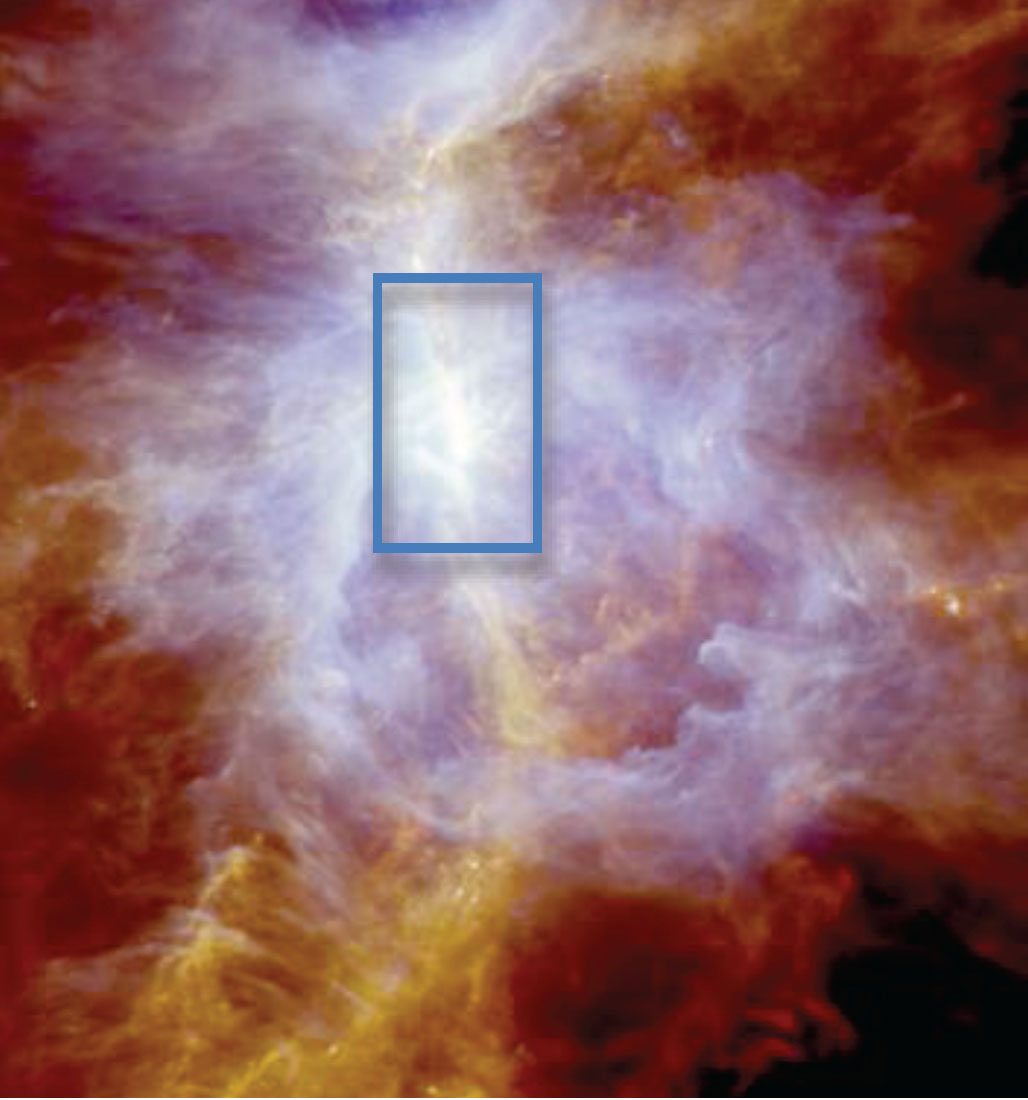
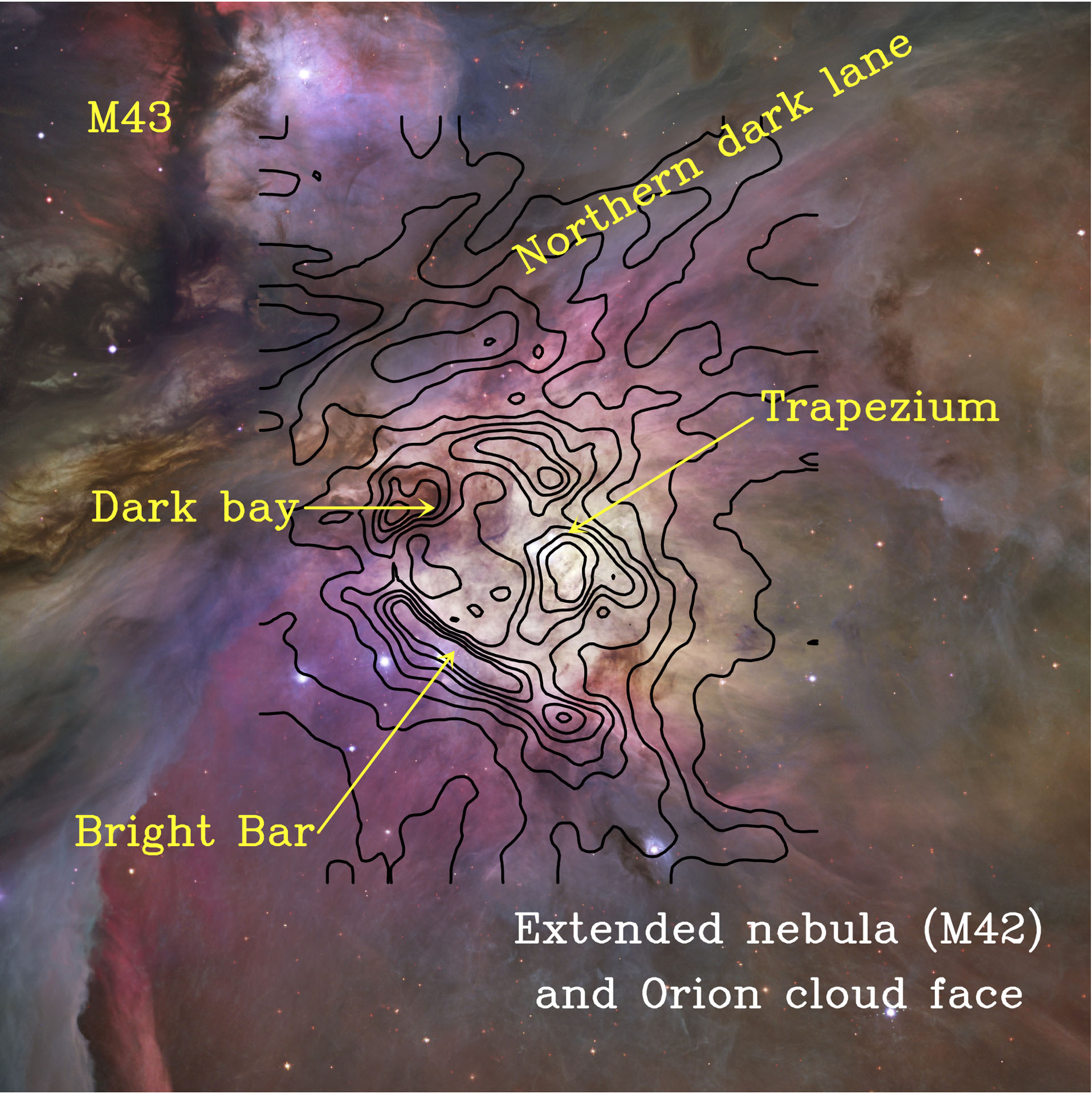
![[CII] 158μm emission image taken by Herschel with the locations of famous regions in the cloud identified (Goicoechea et al. 2015) [CII] 158μm emission image taken by Herschel with the locations of famous regions in the cloud identified (Goicoechea et al. 2015)](/documents/12133/331005/2015_OrionCplus_web.jpg/0e10689d-473b-4c3a-9c4c-dbdee17c122d?t=1484646921906)
